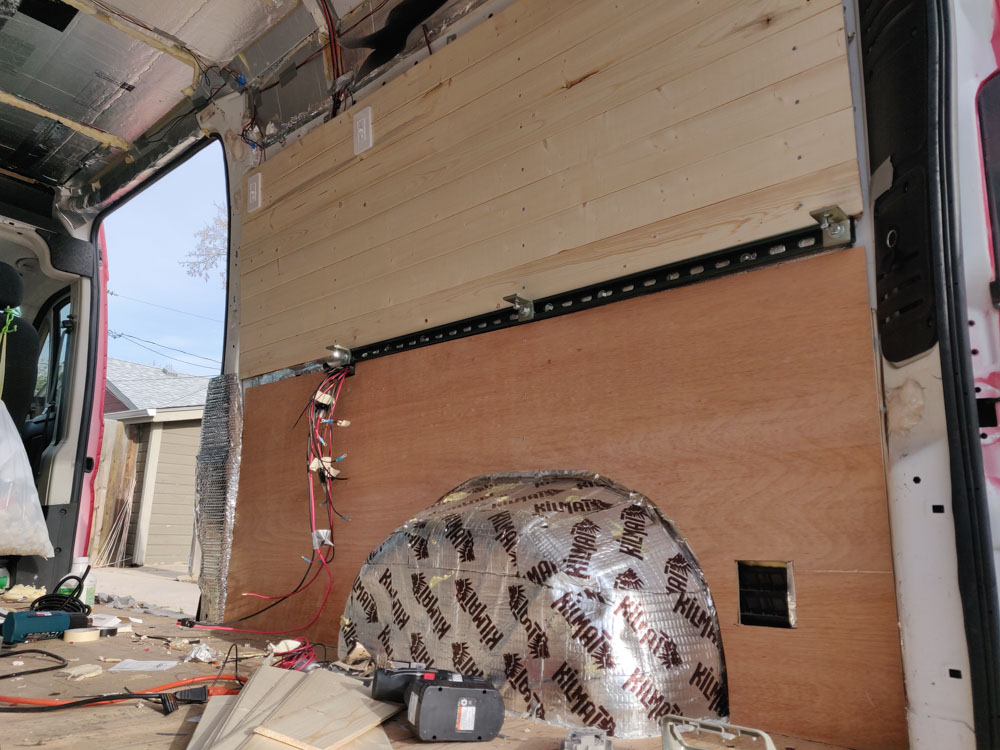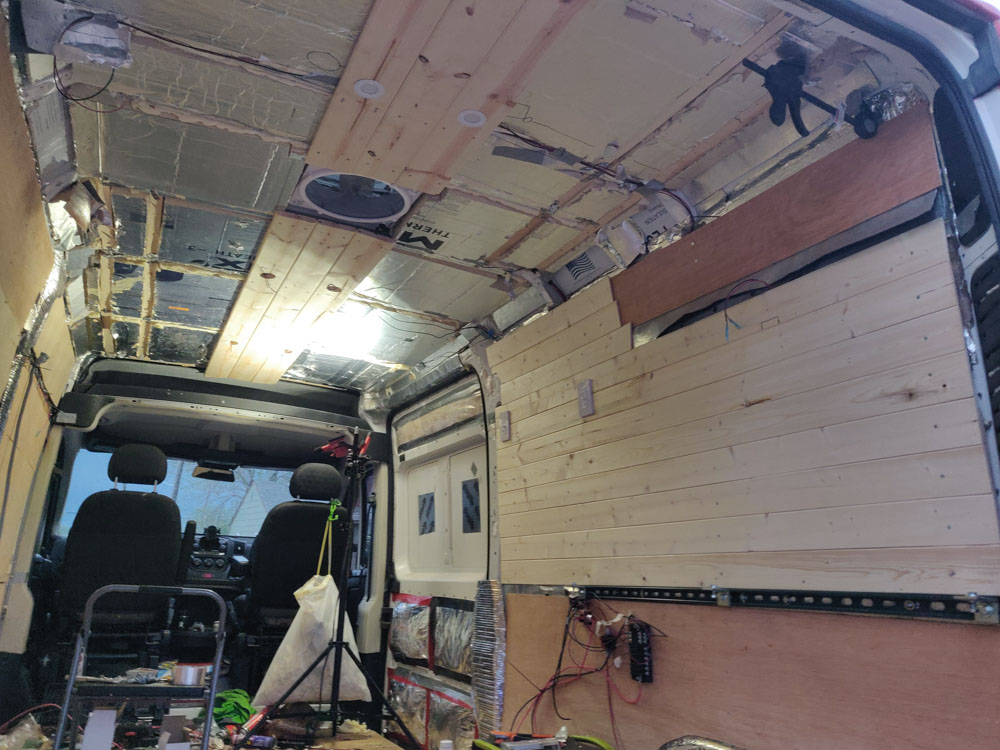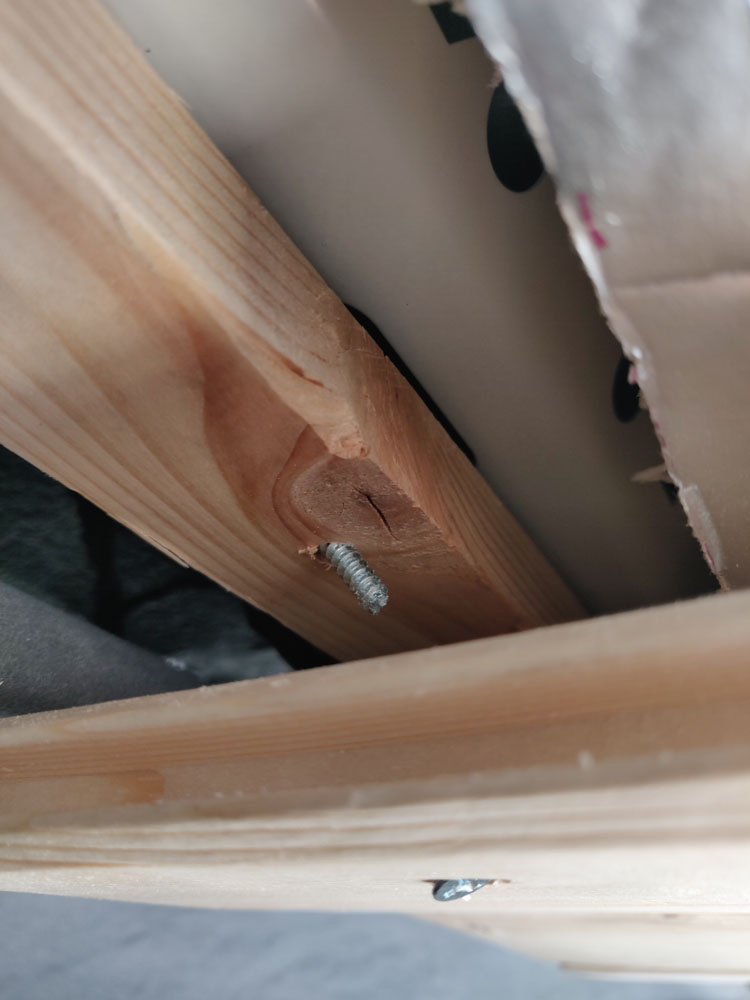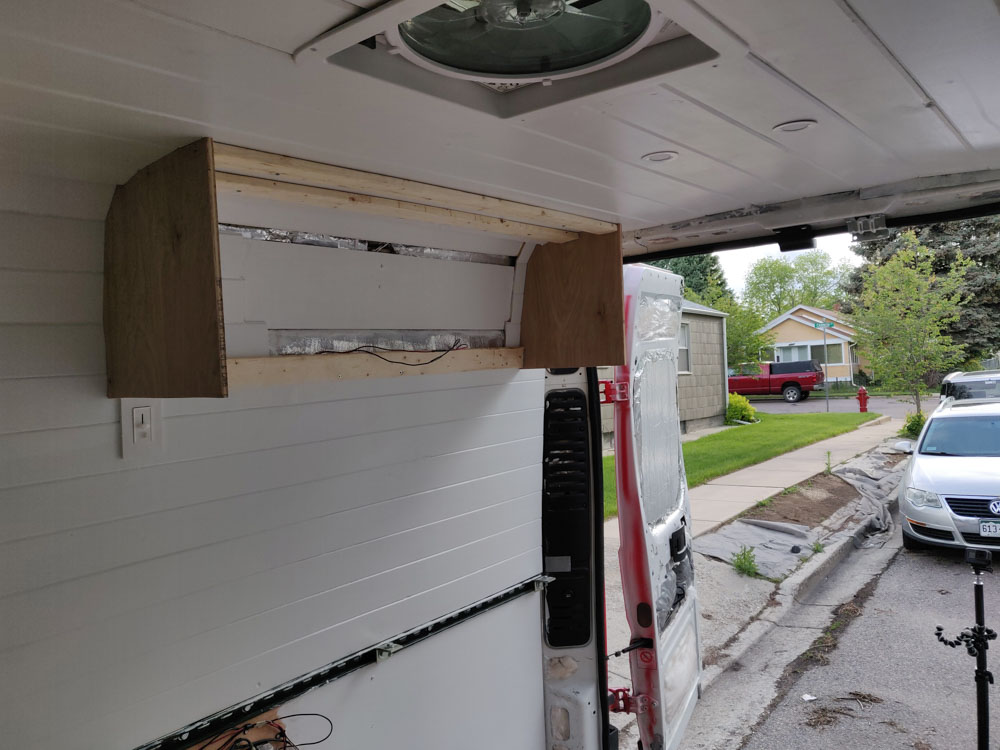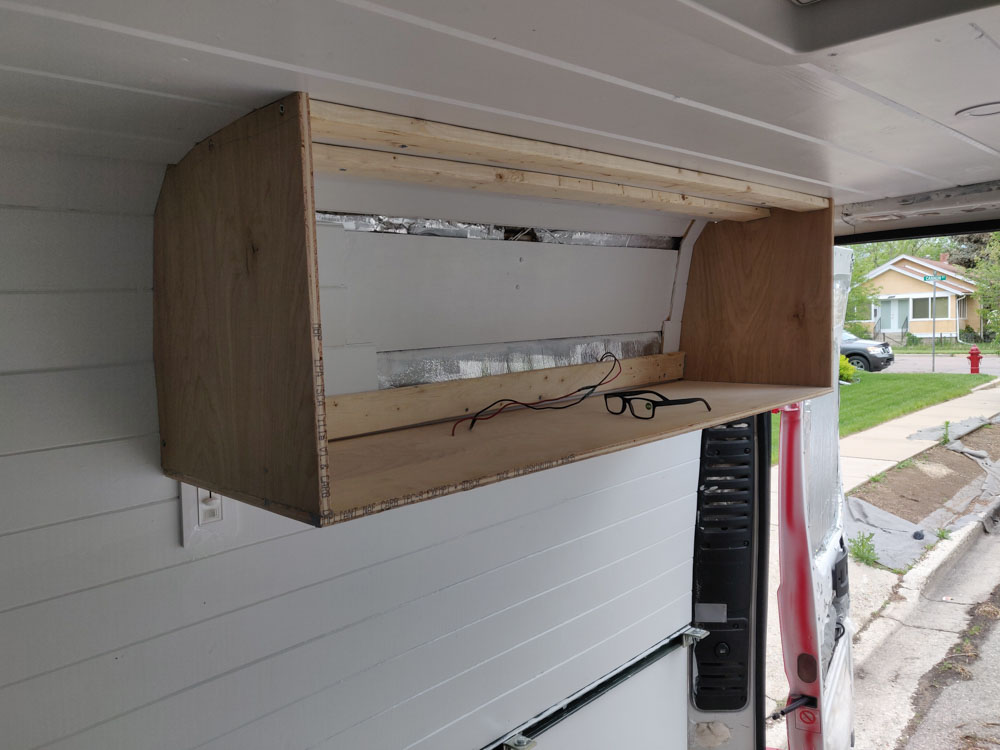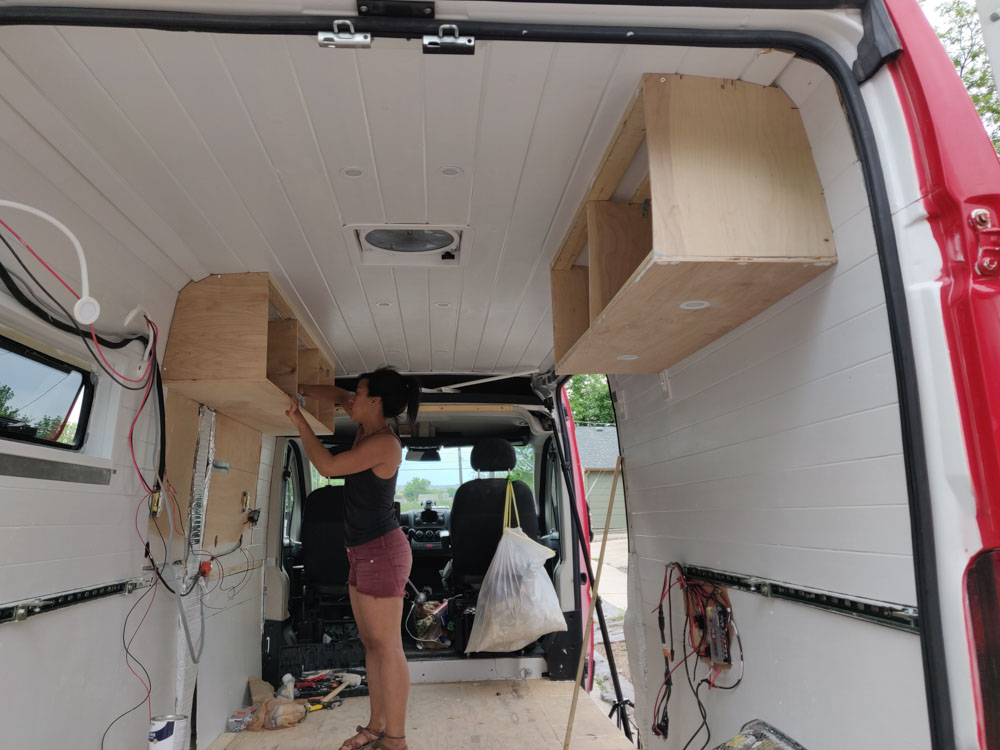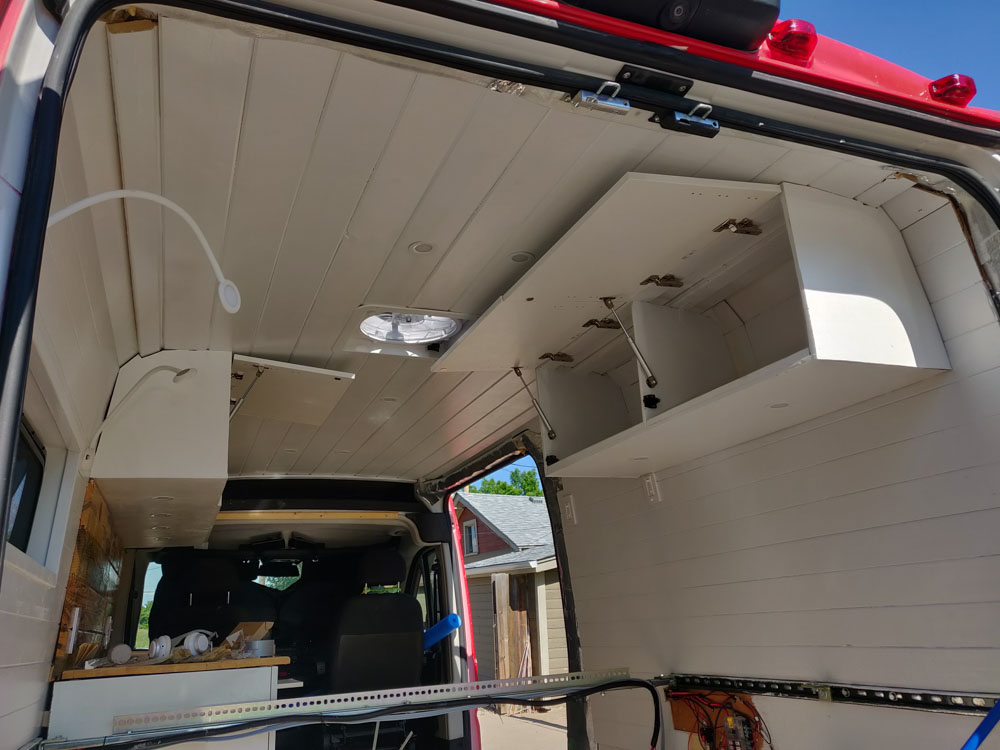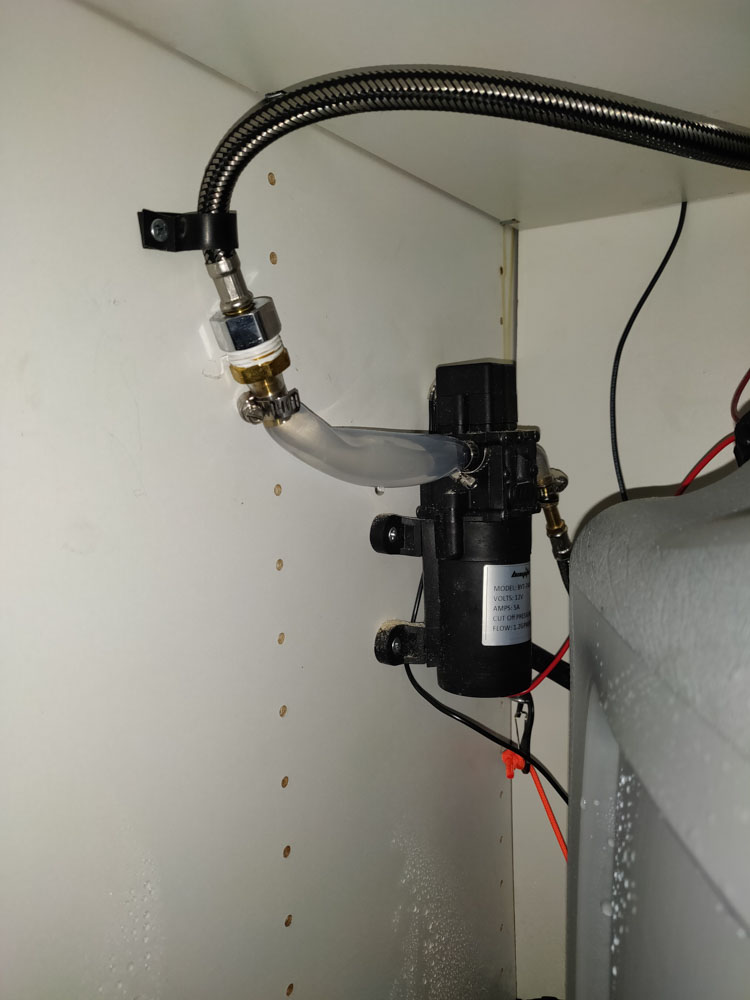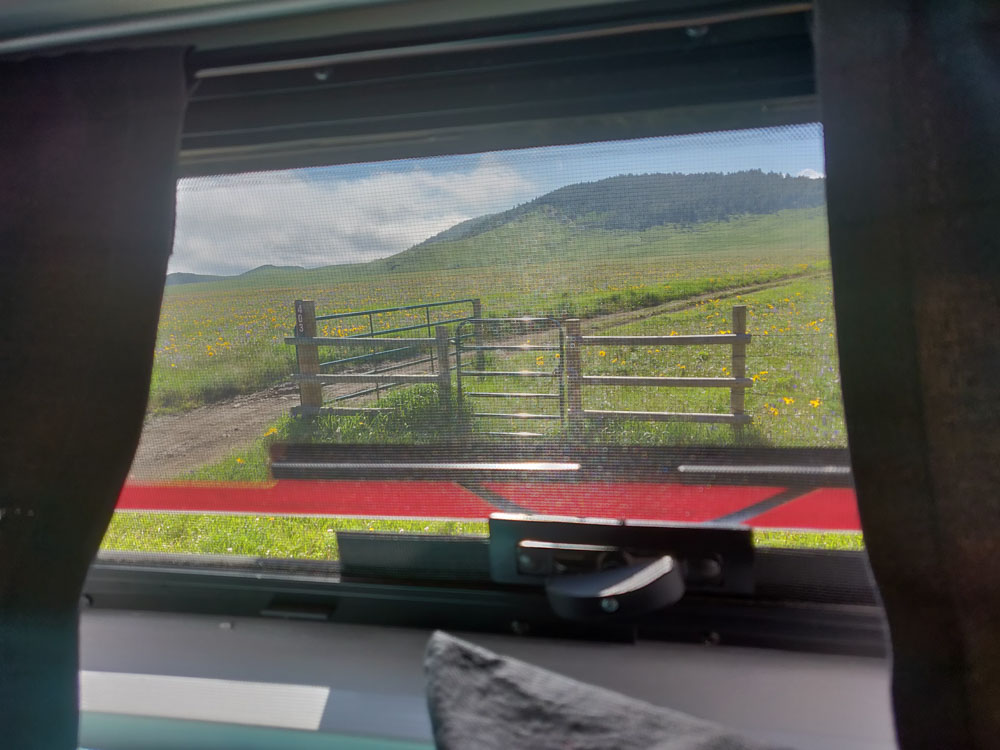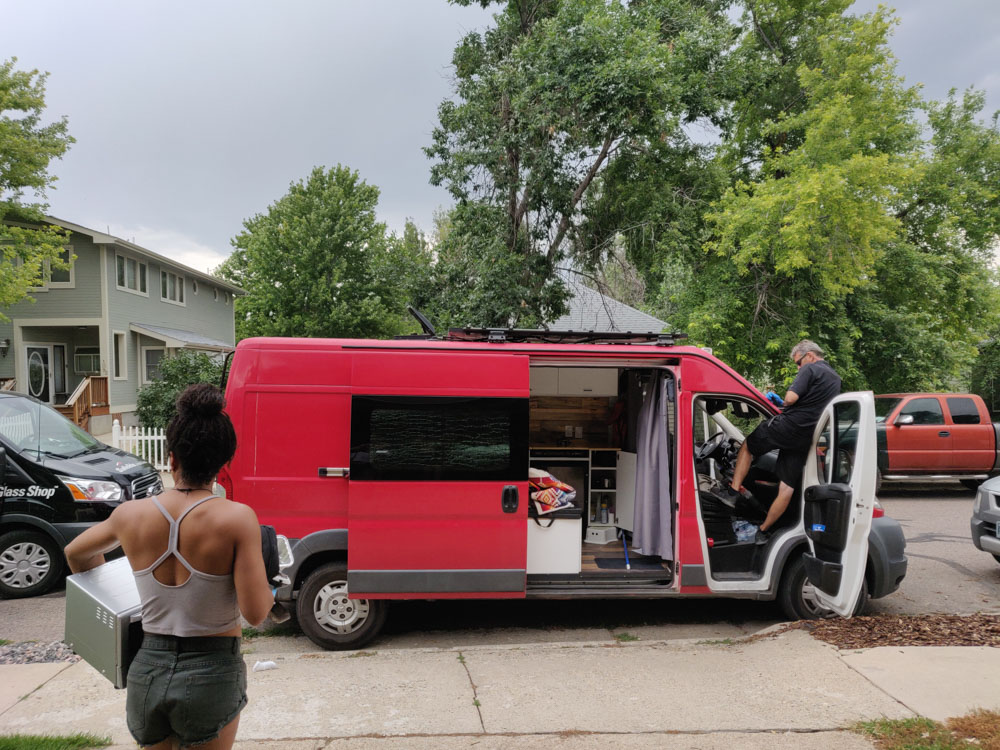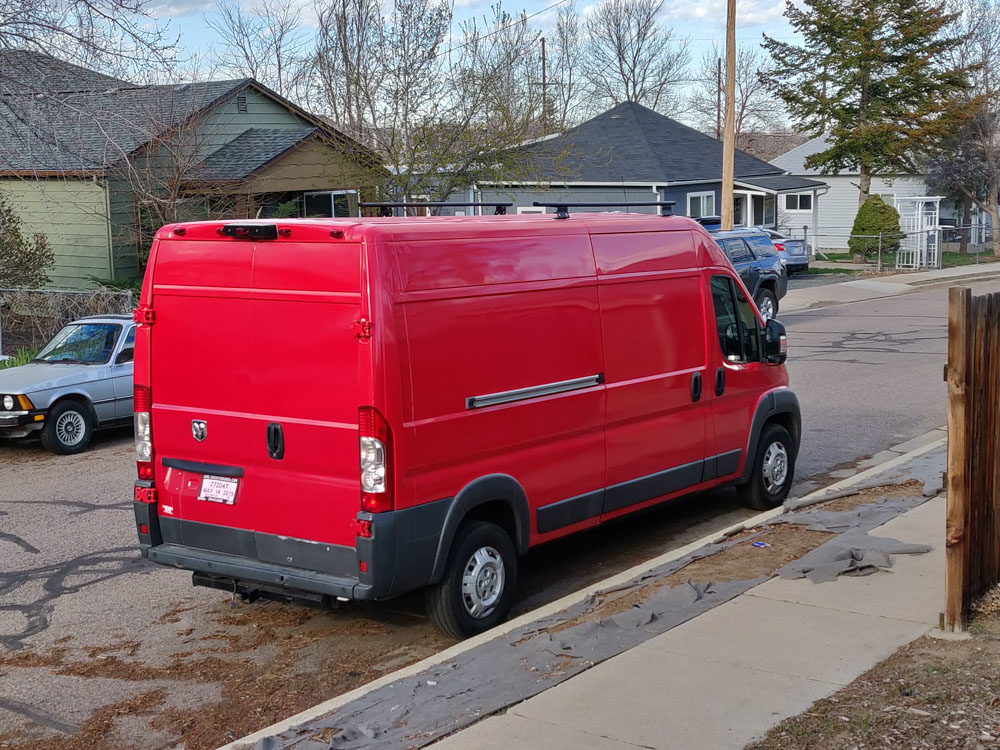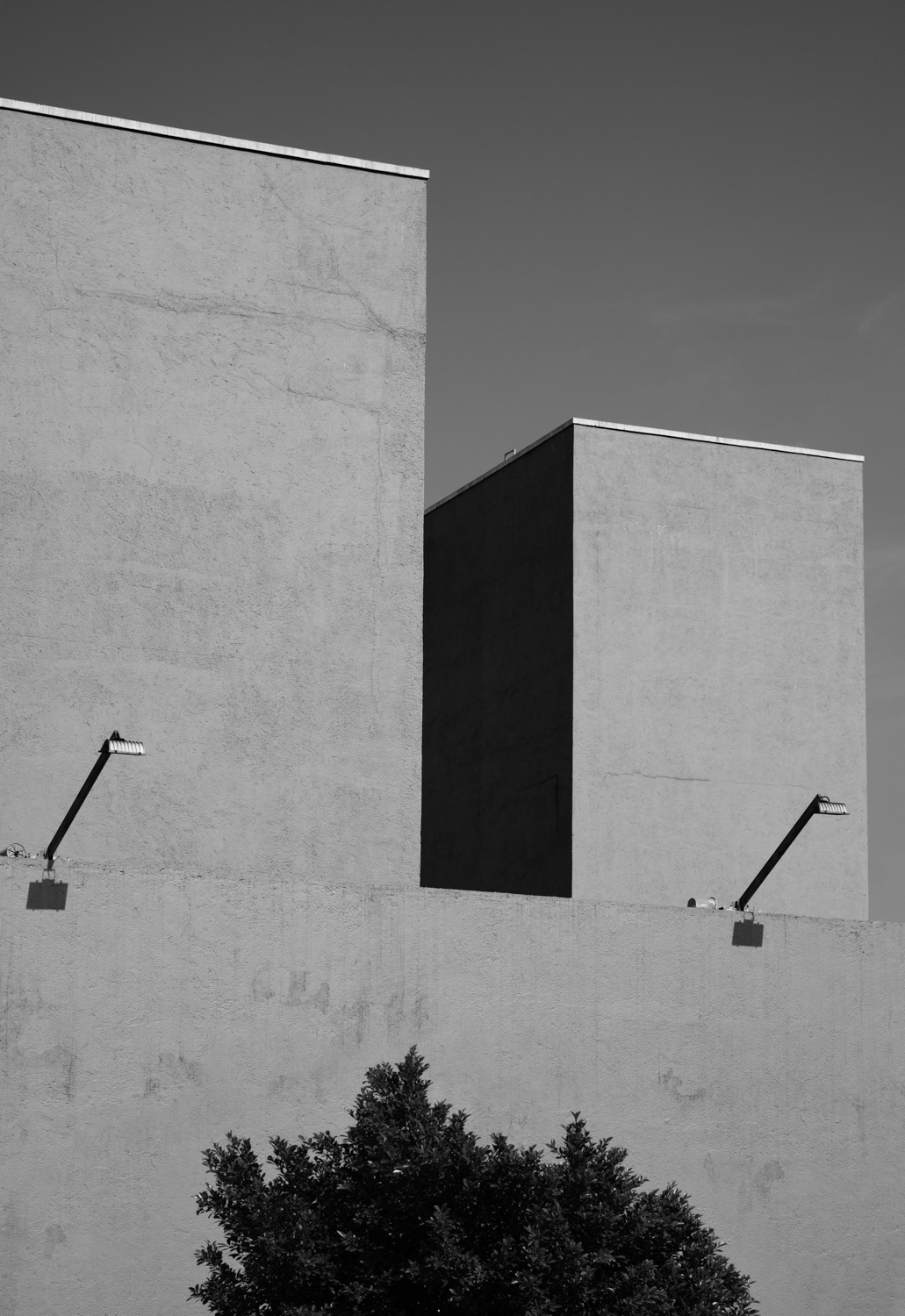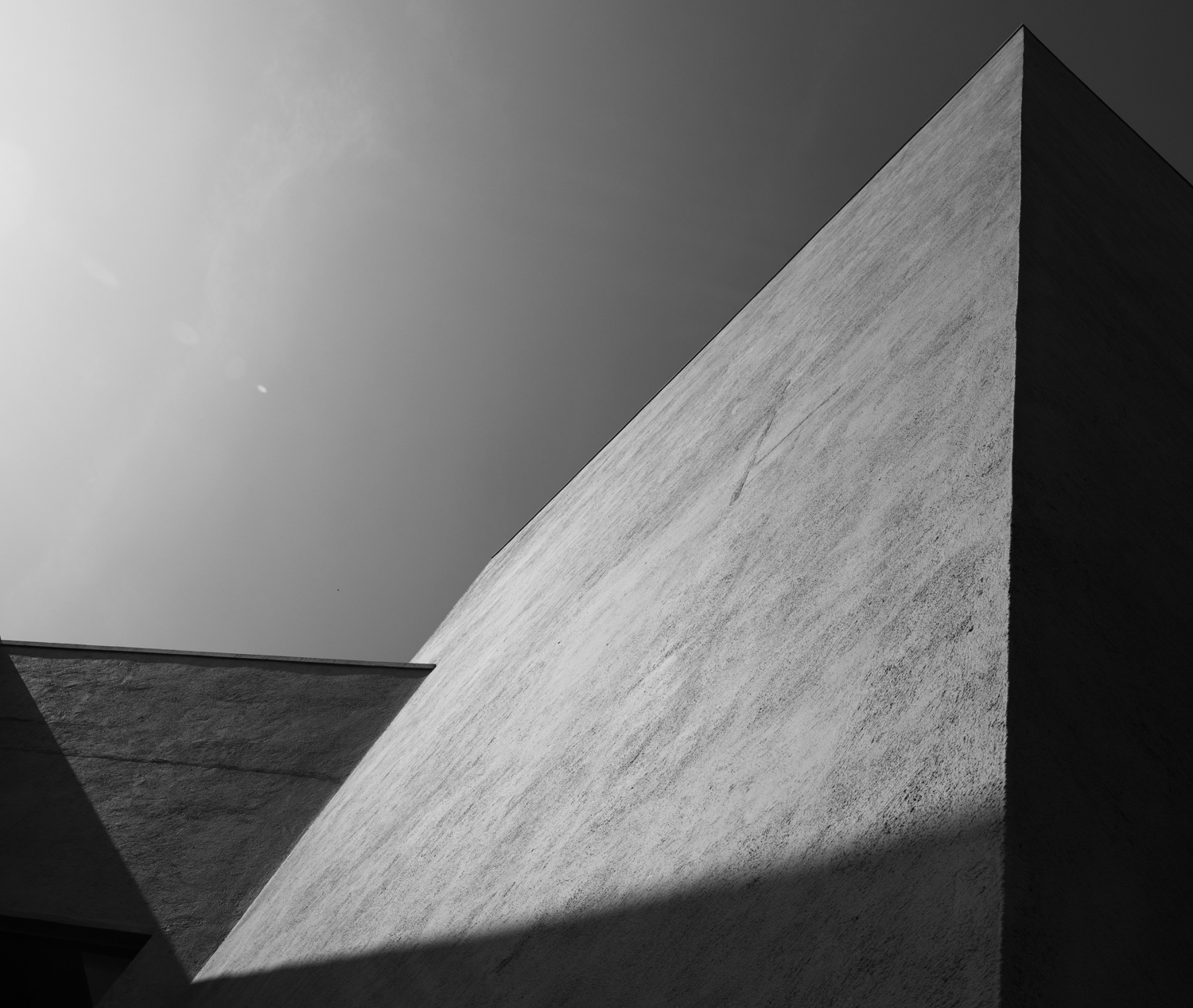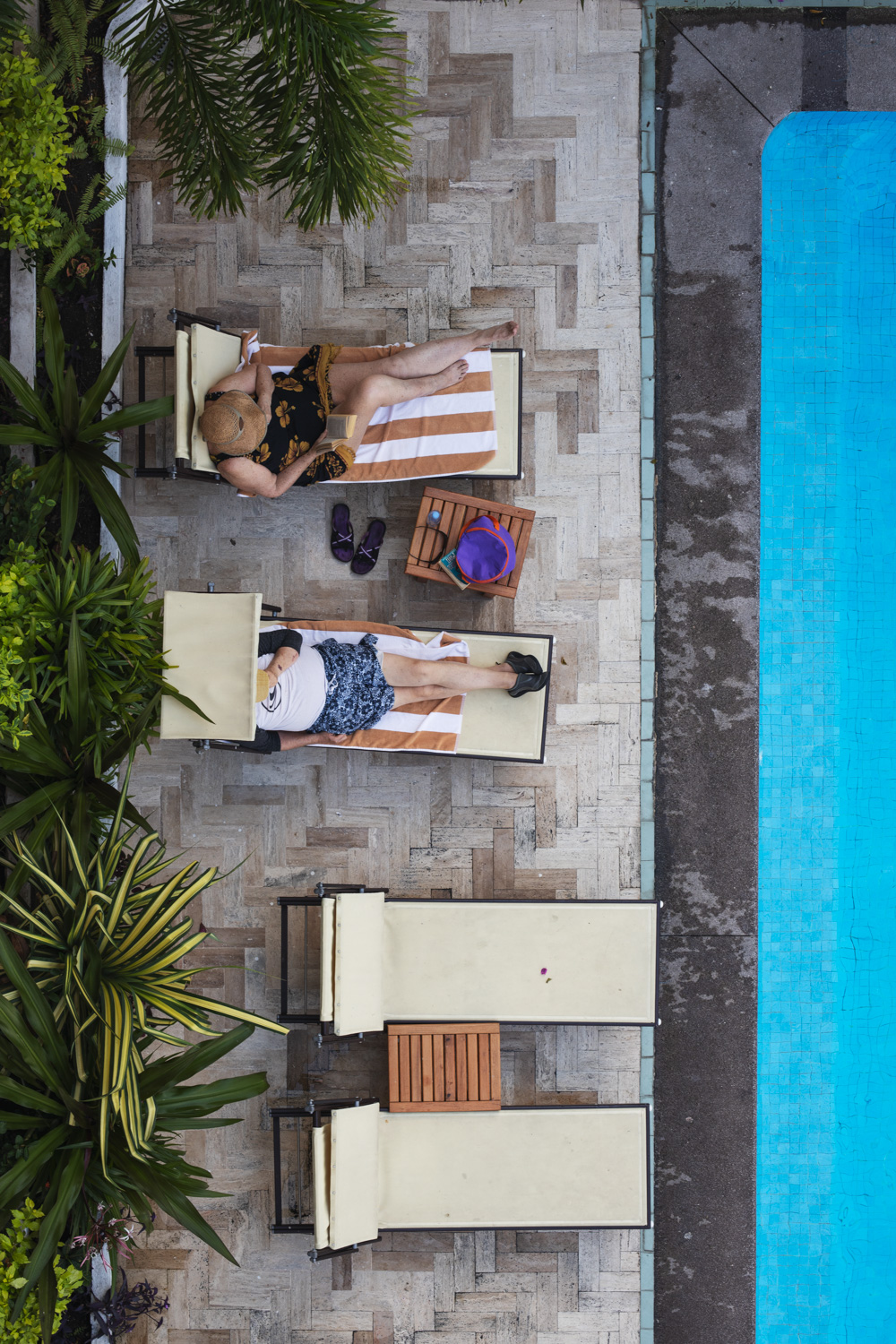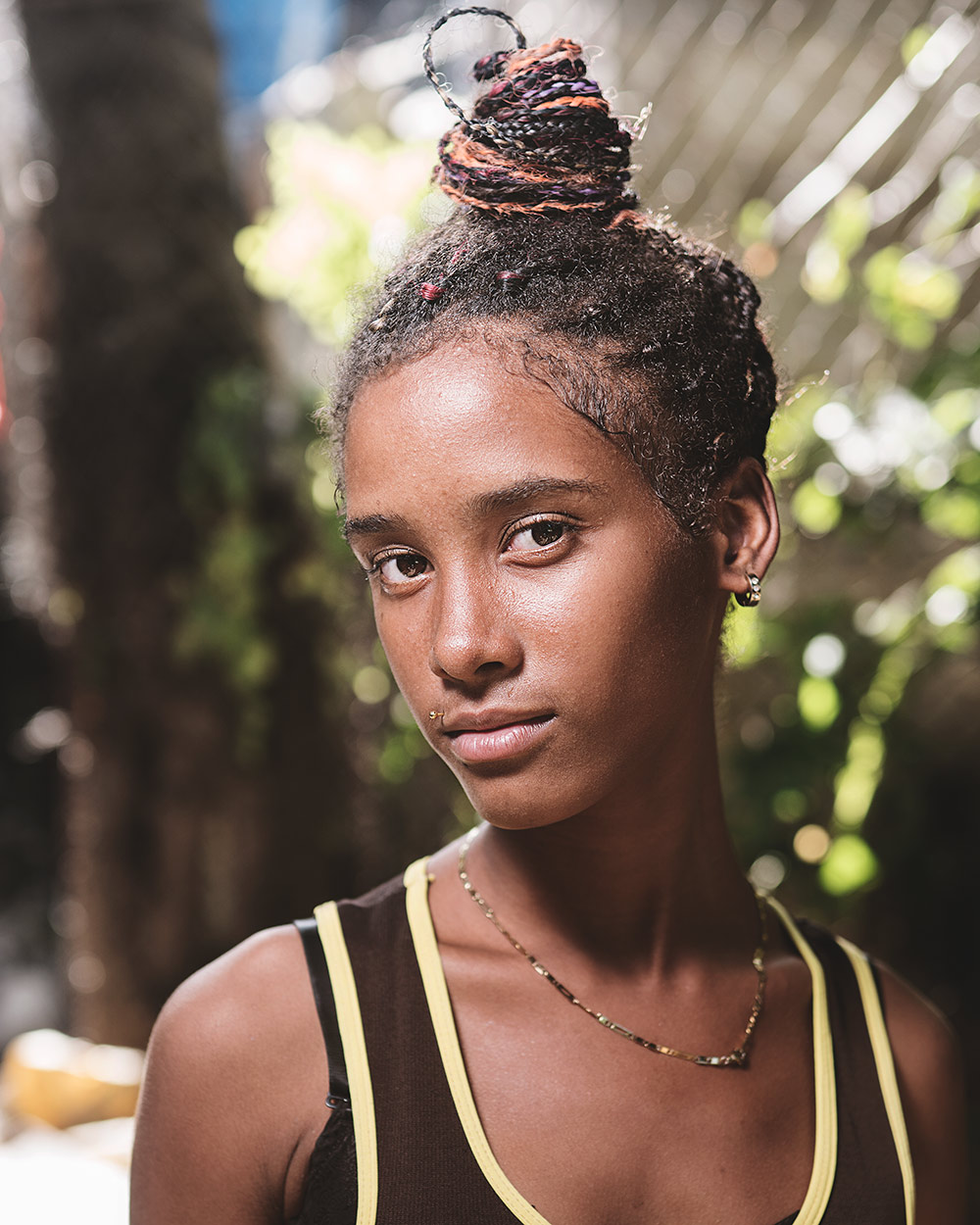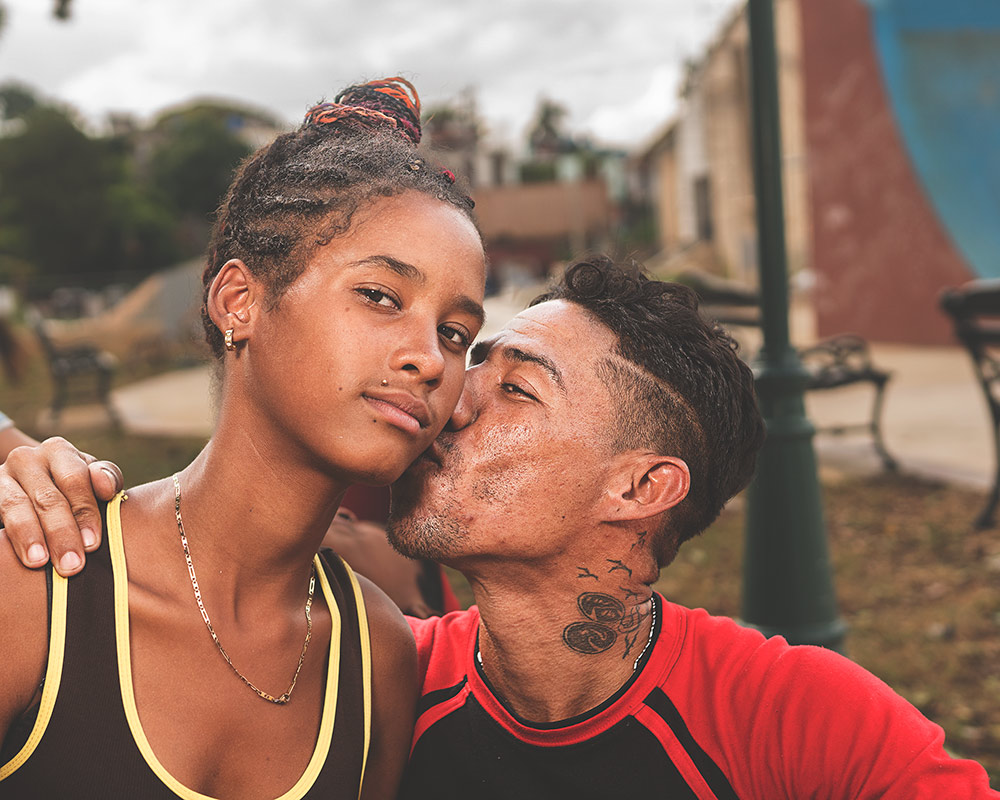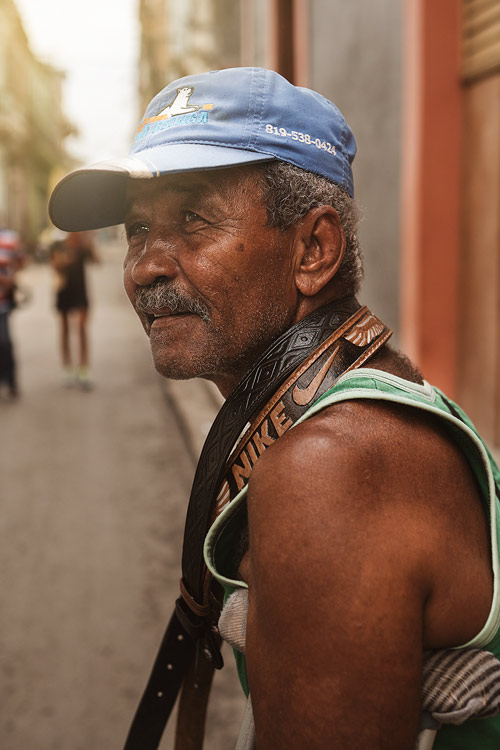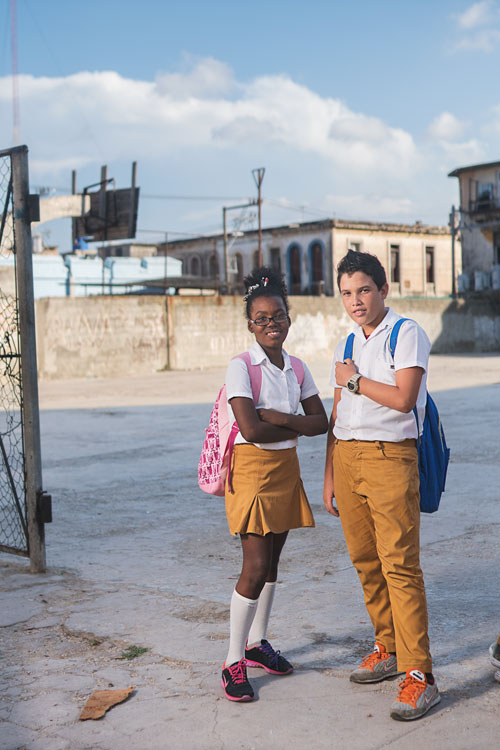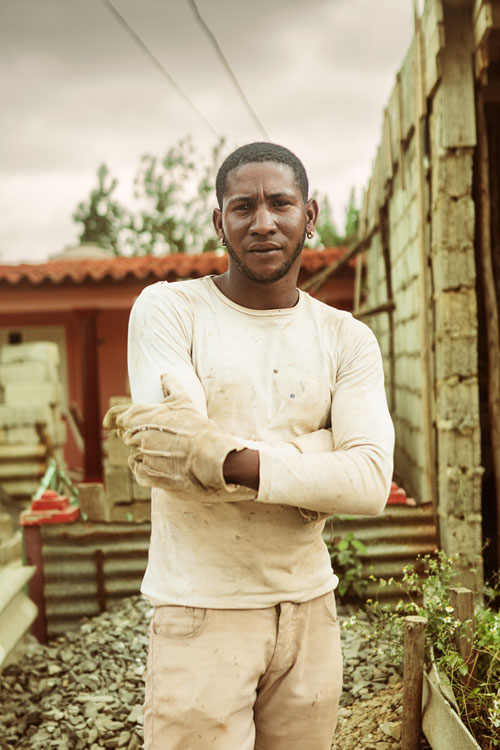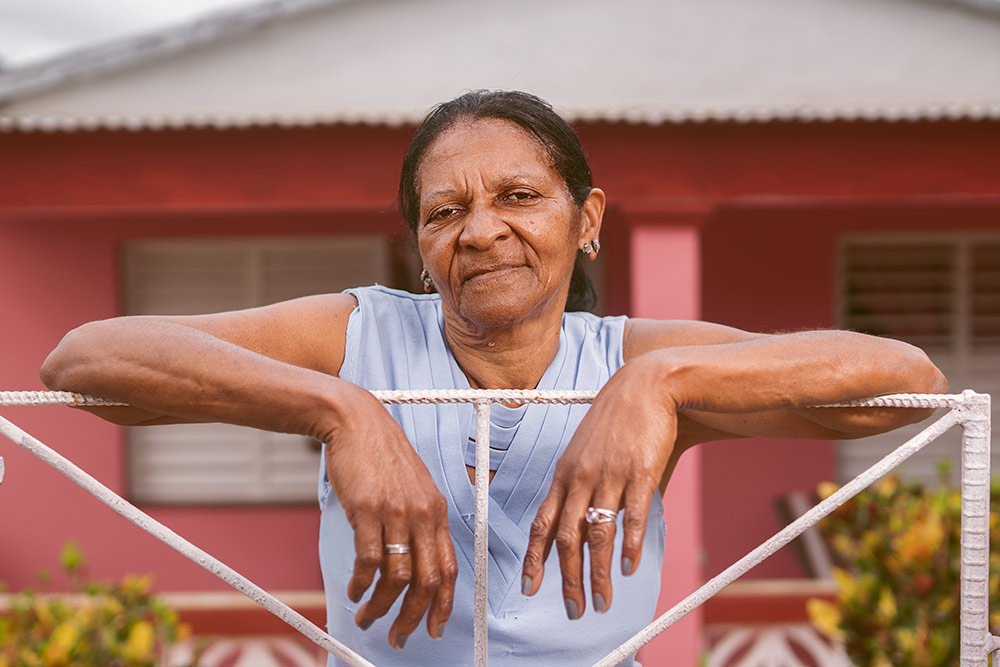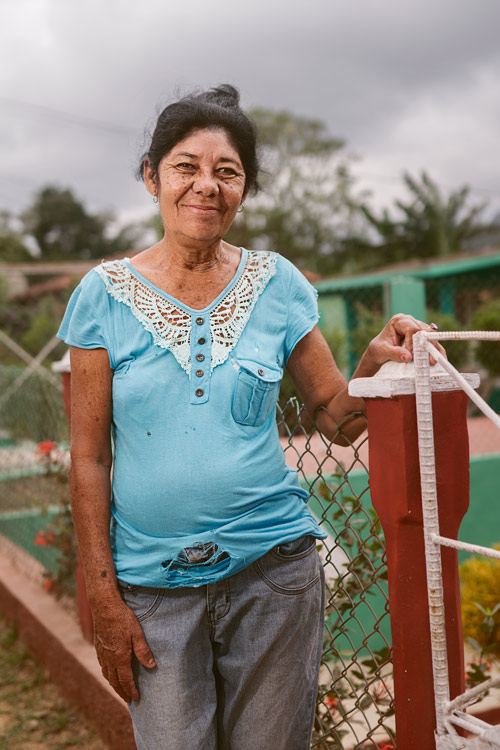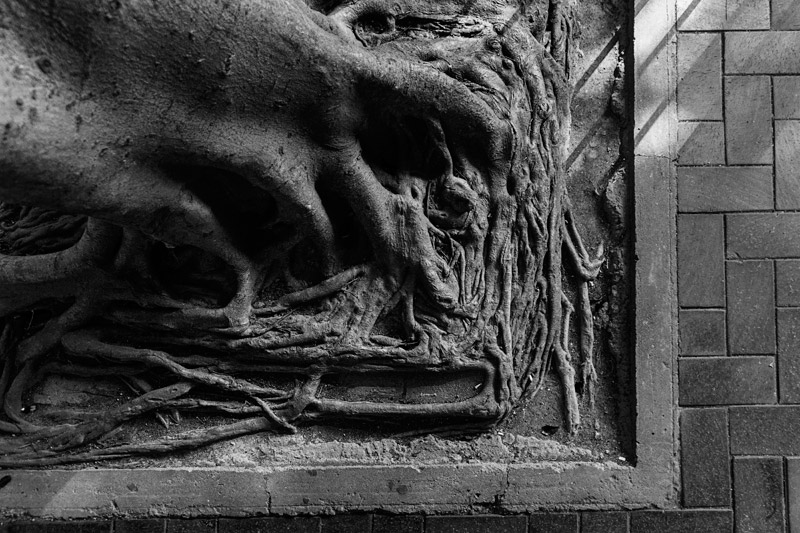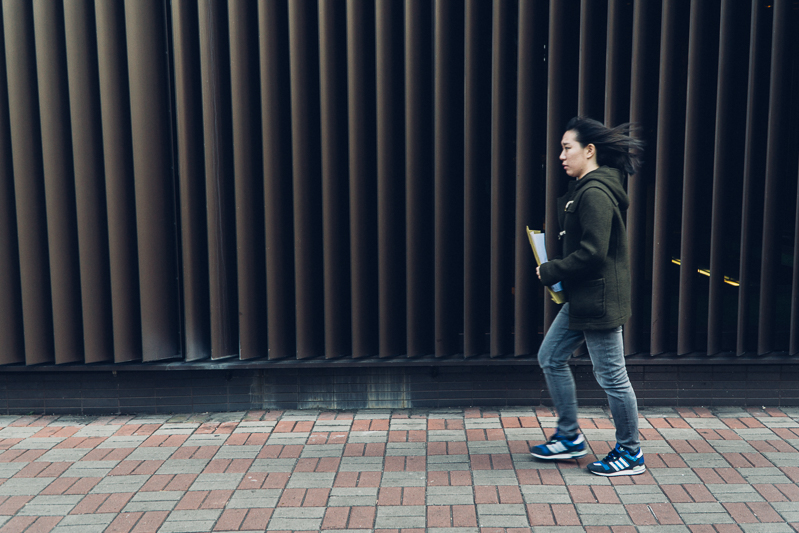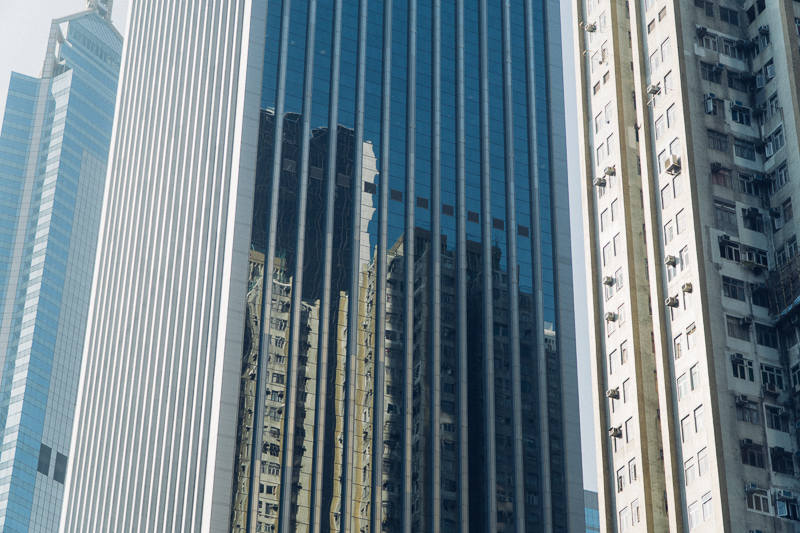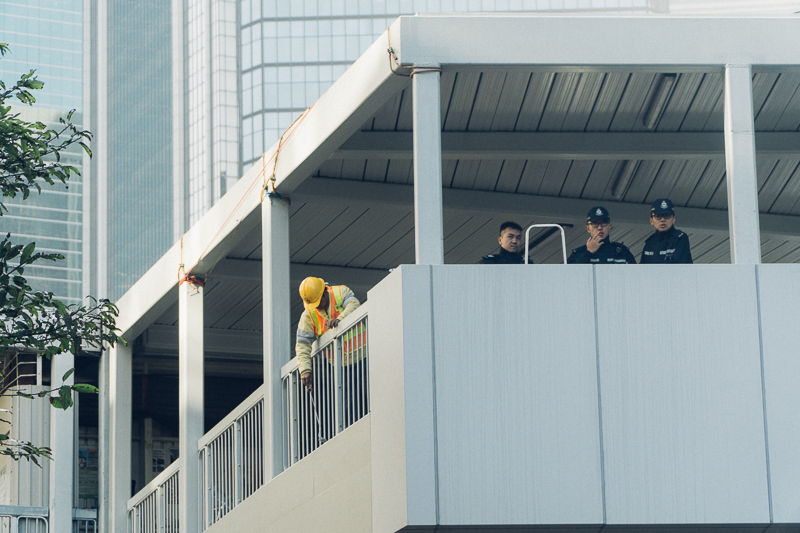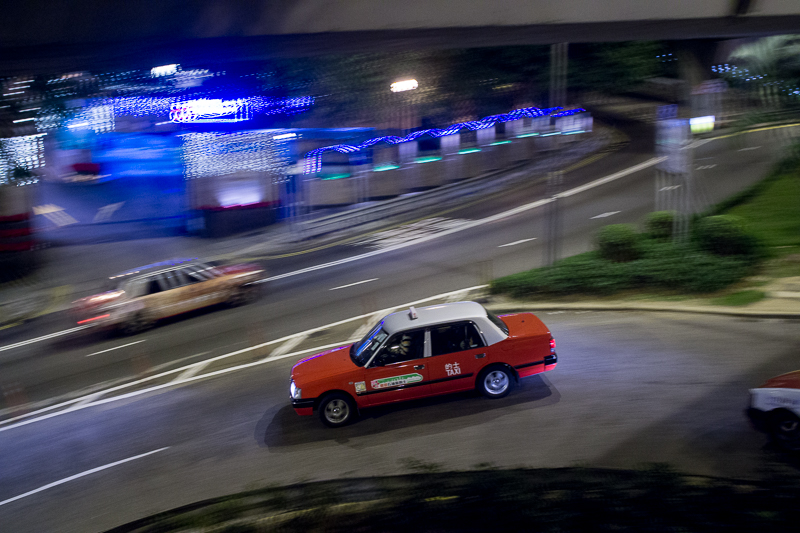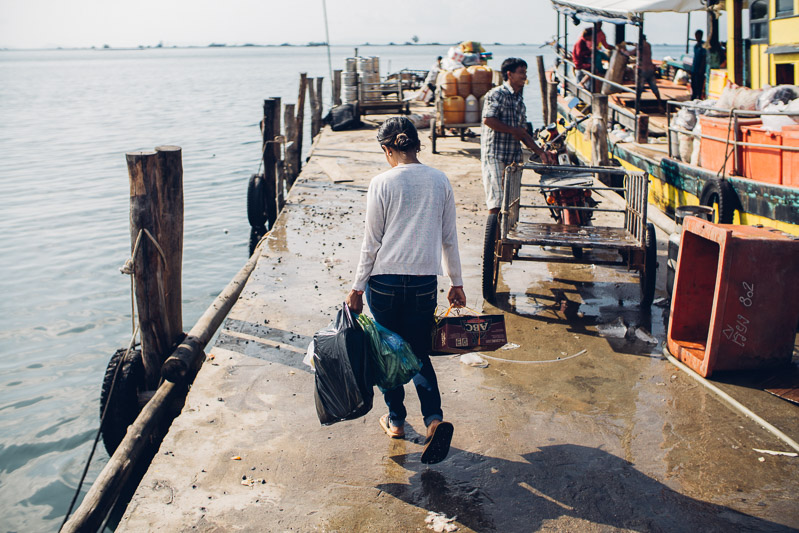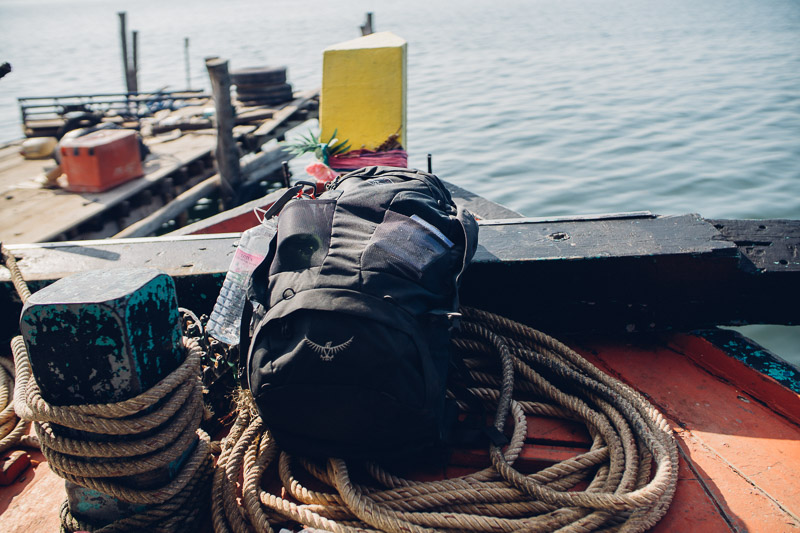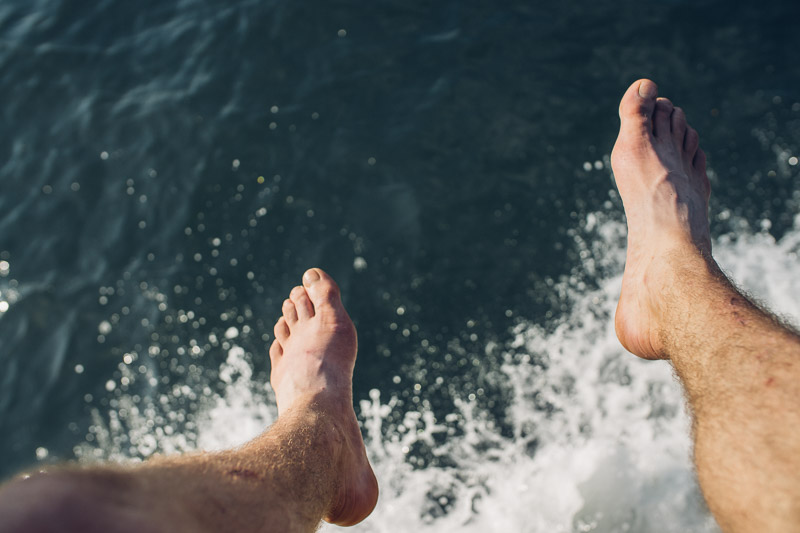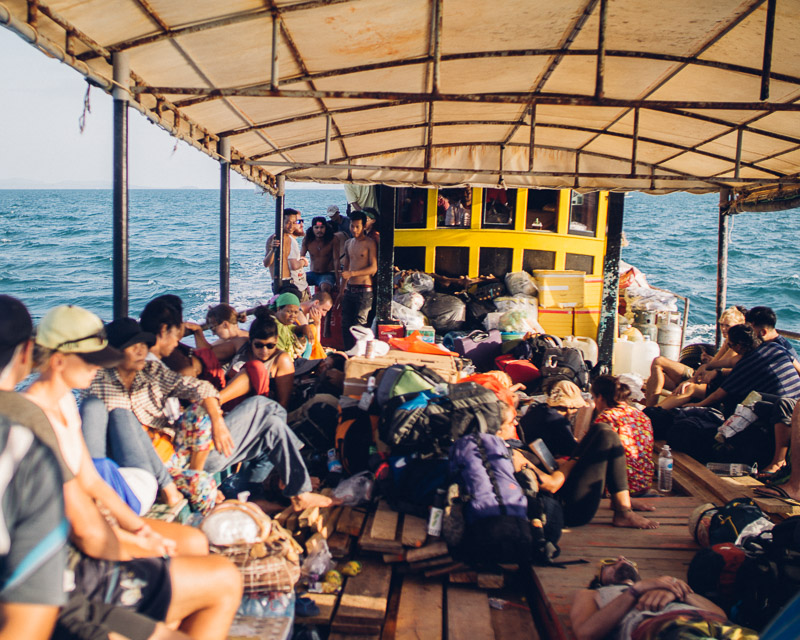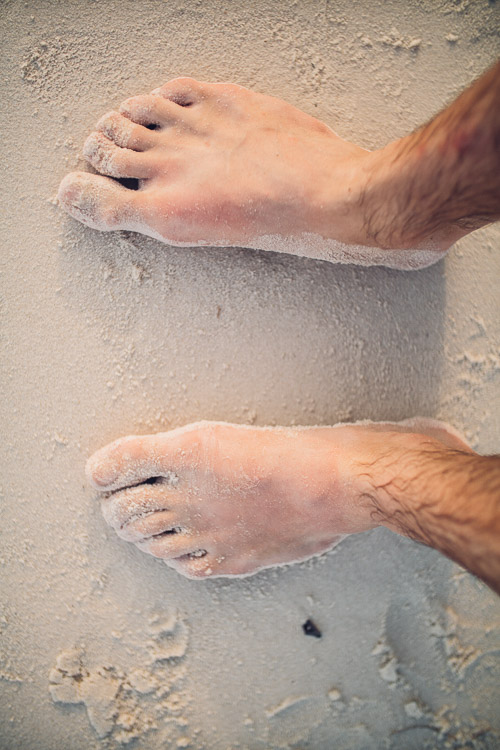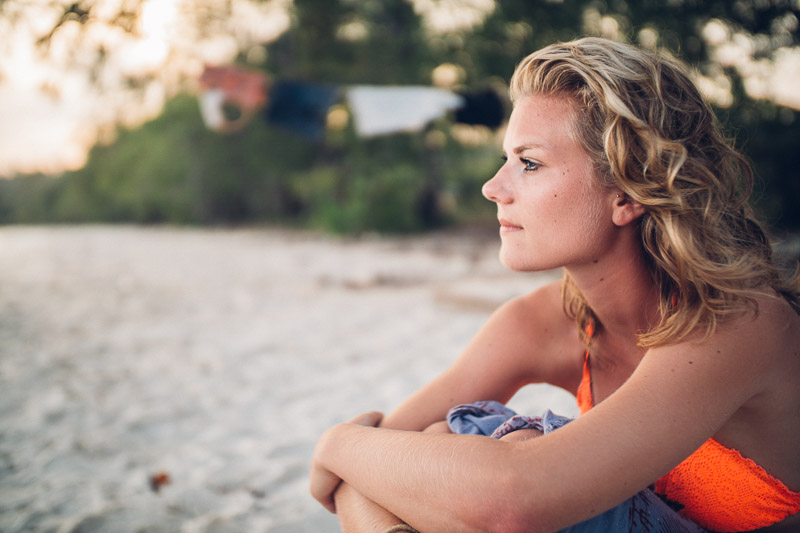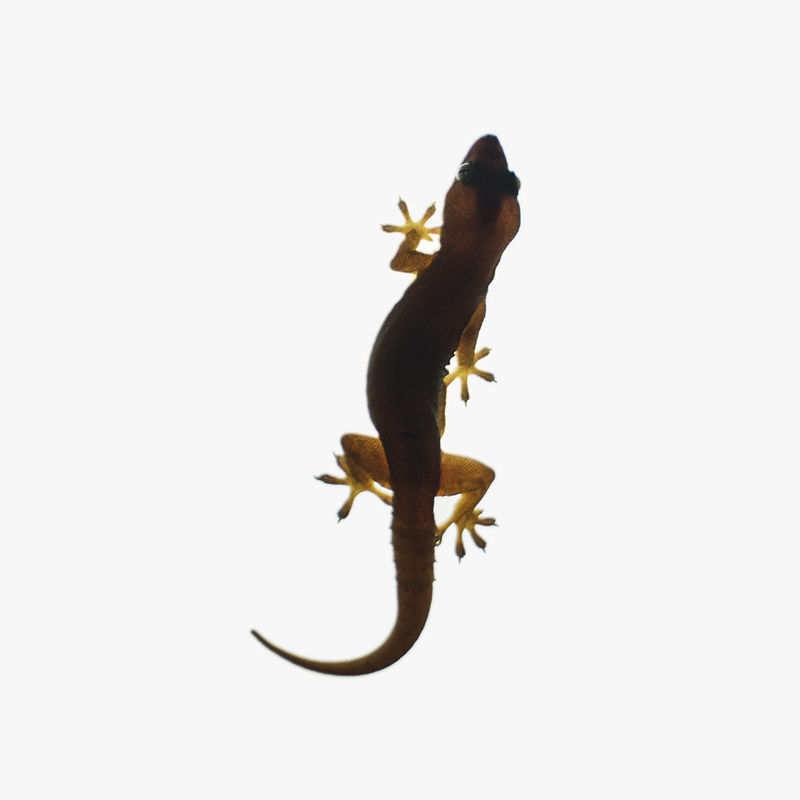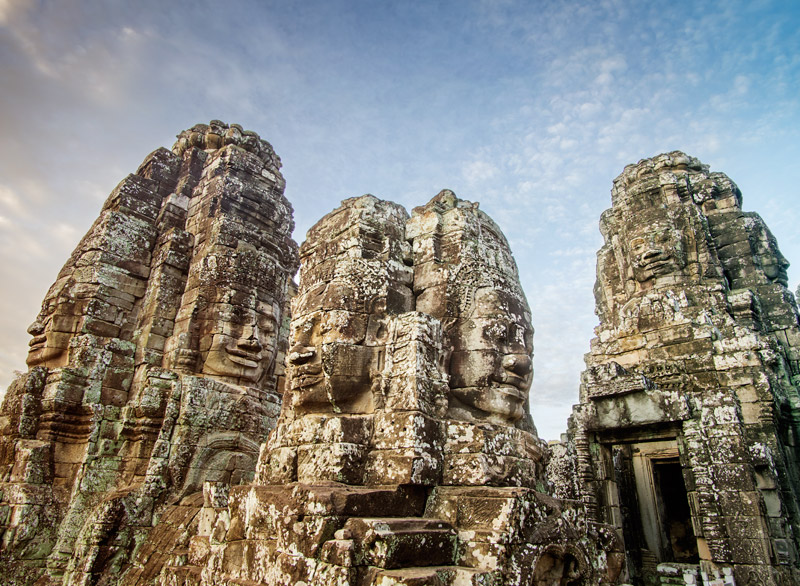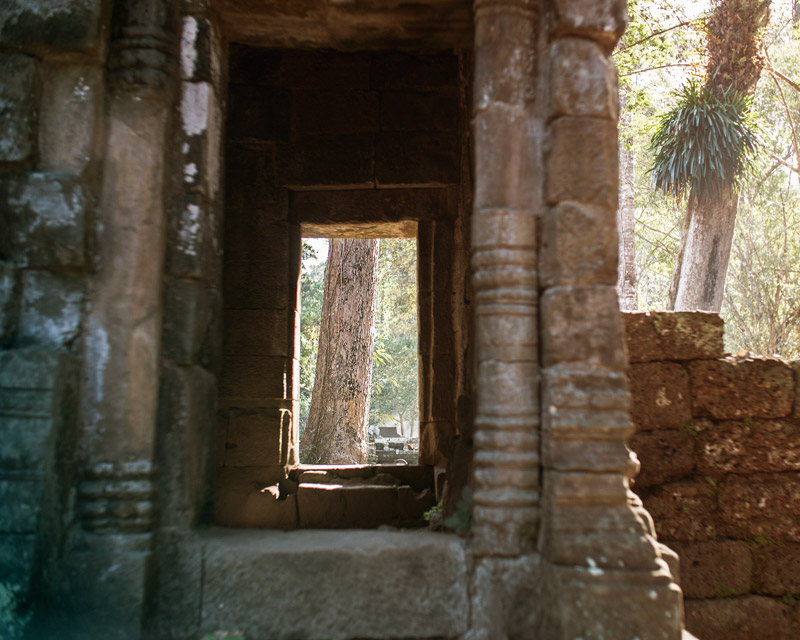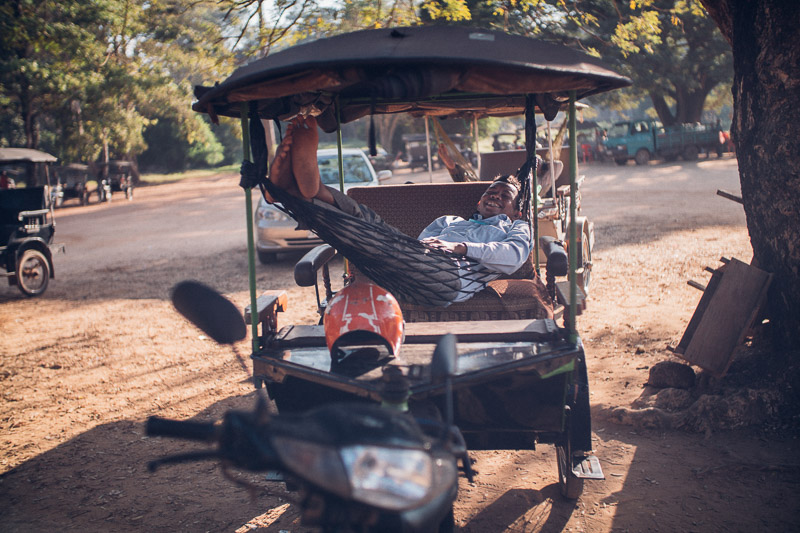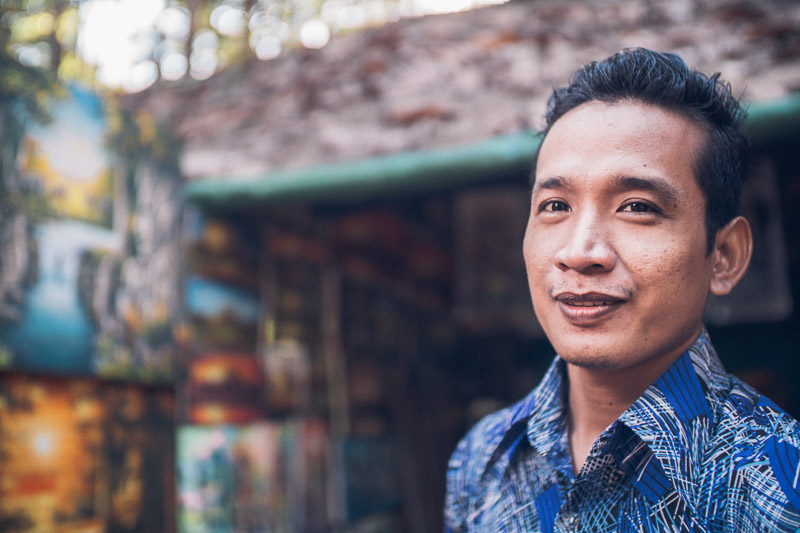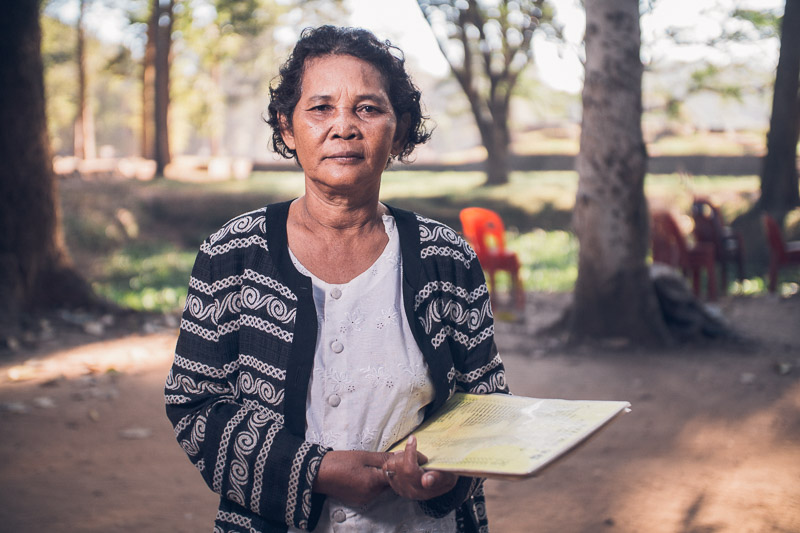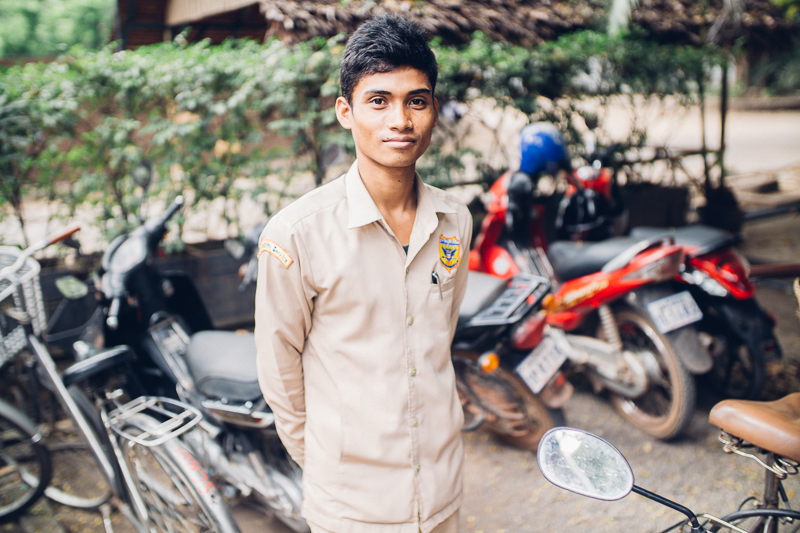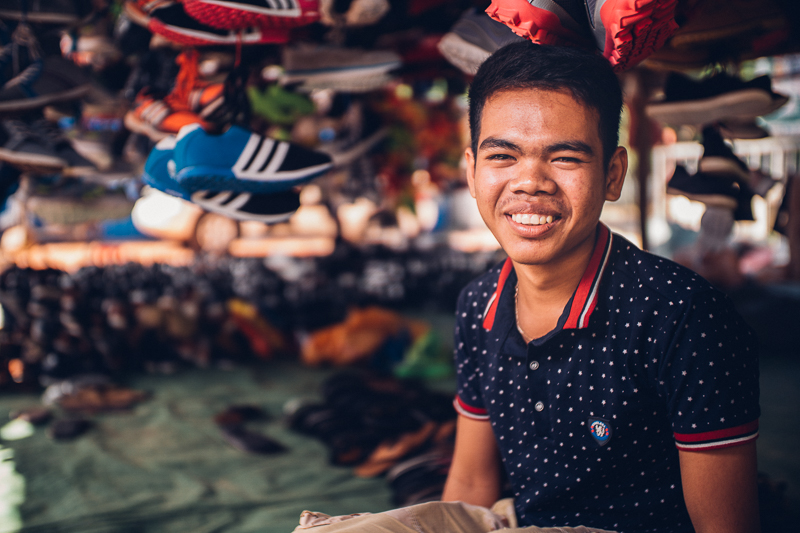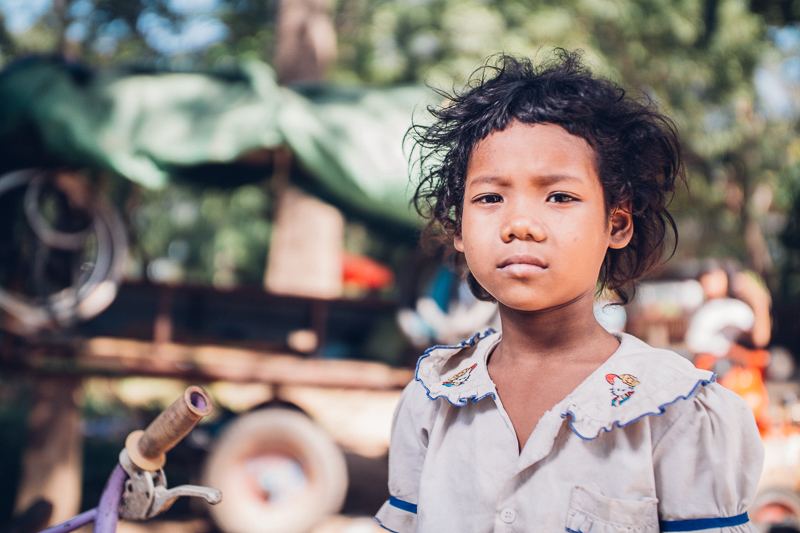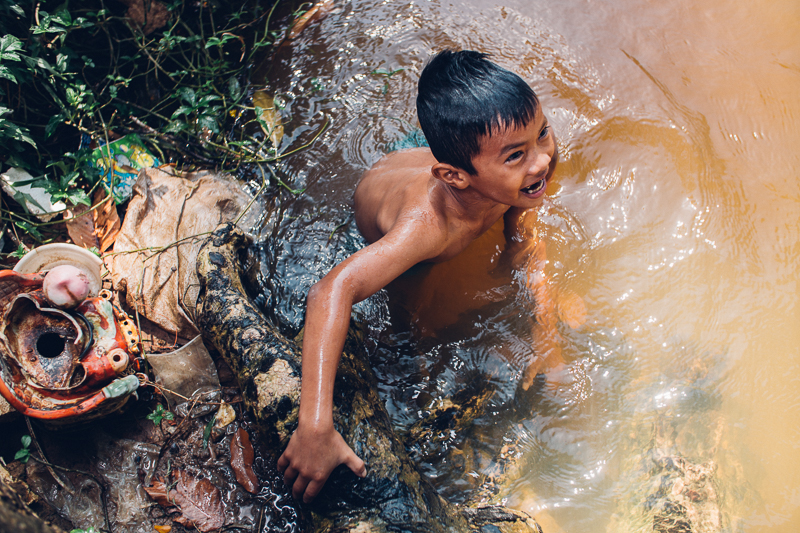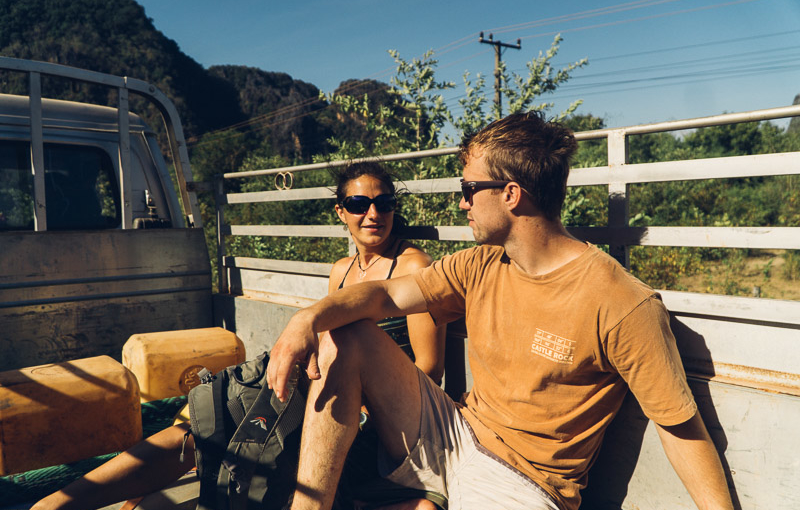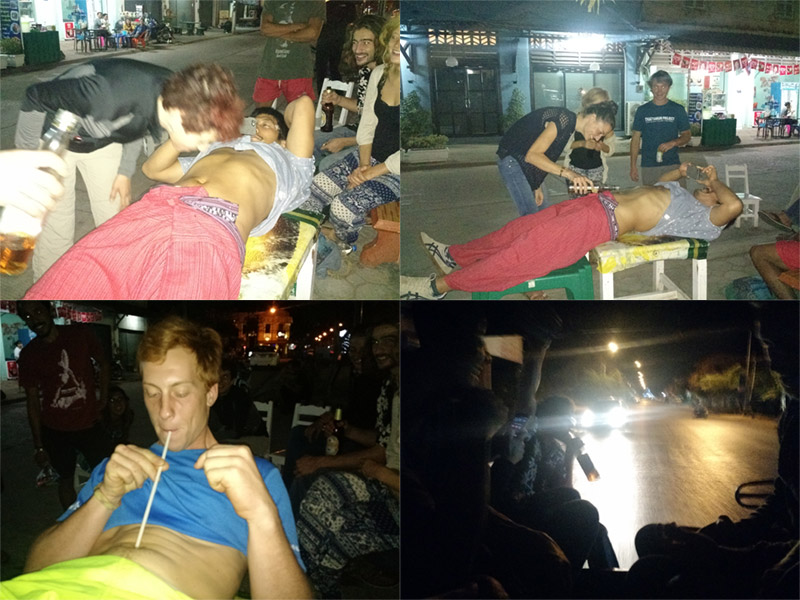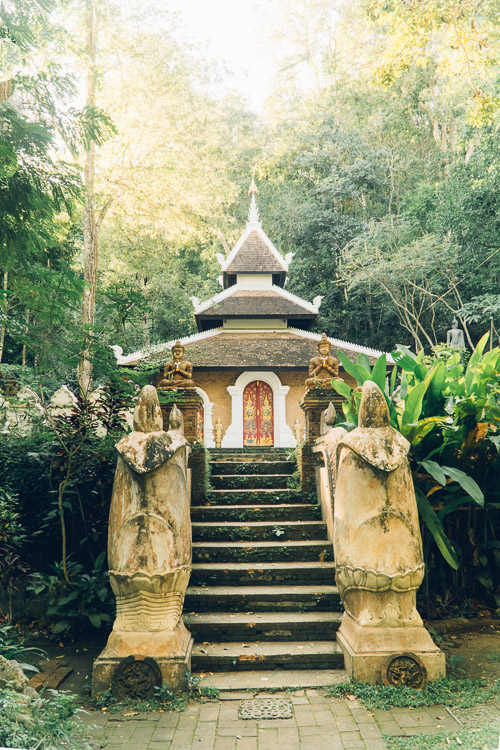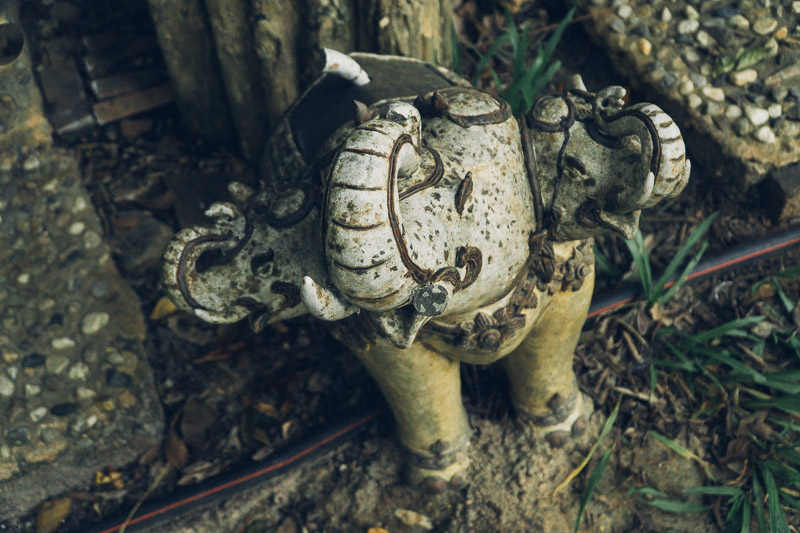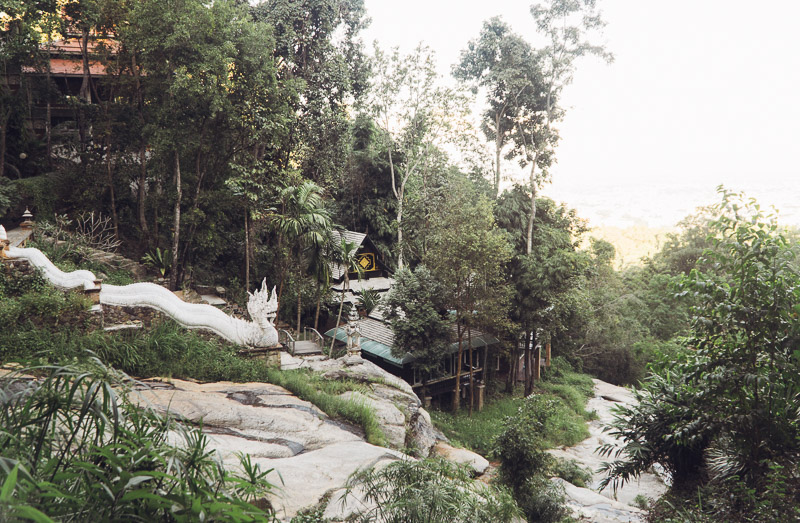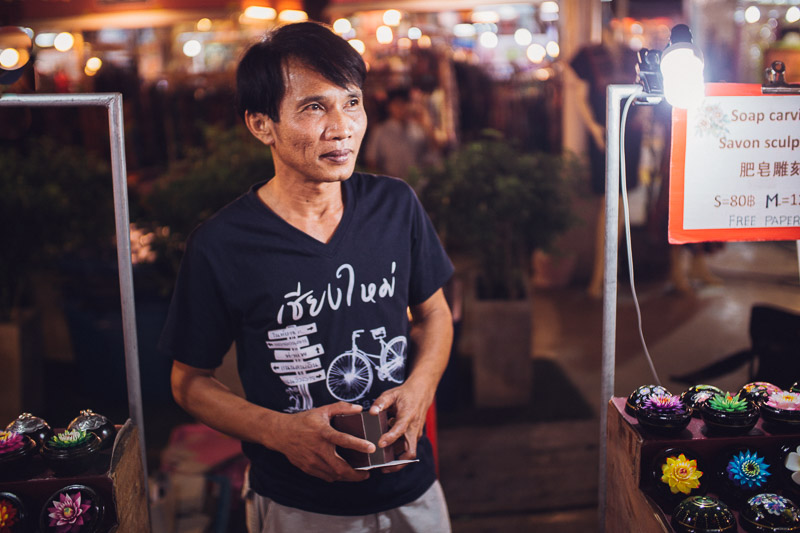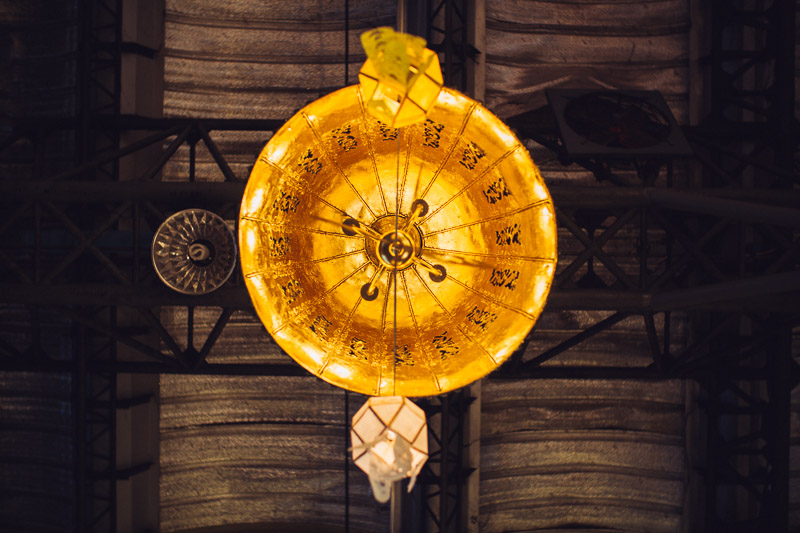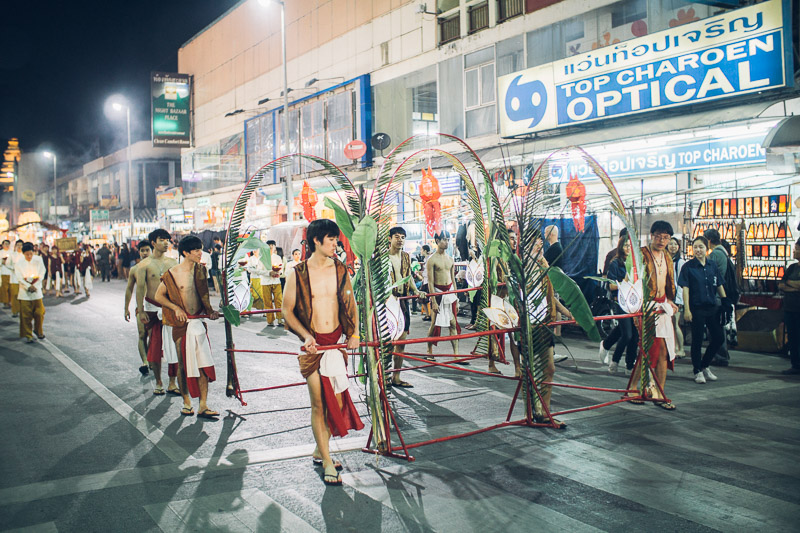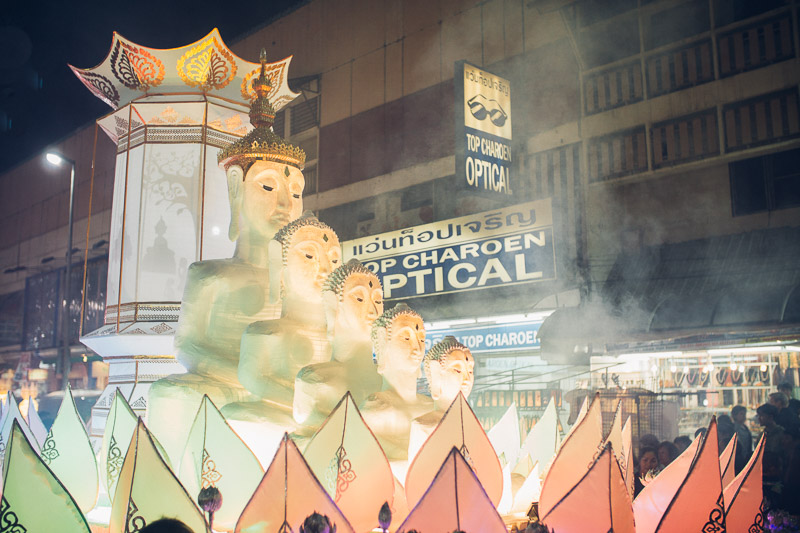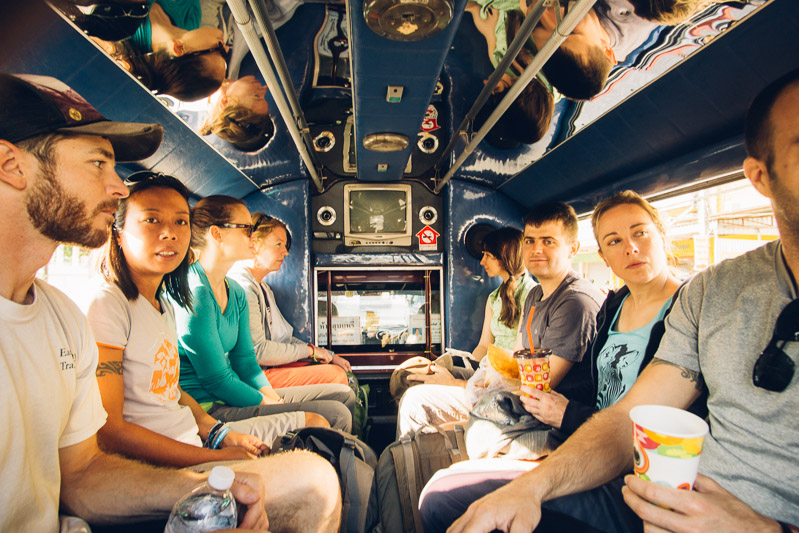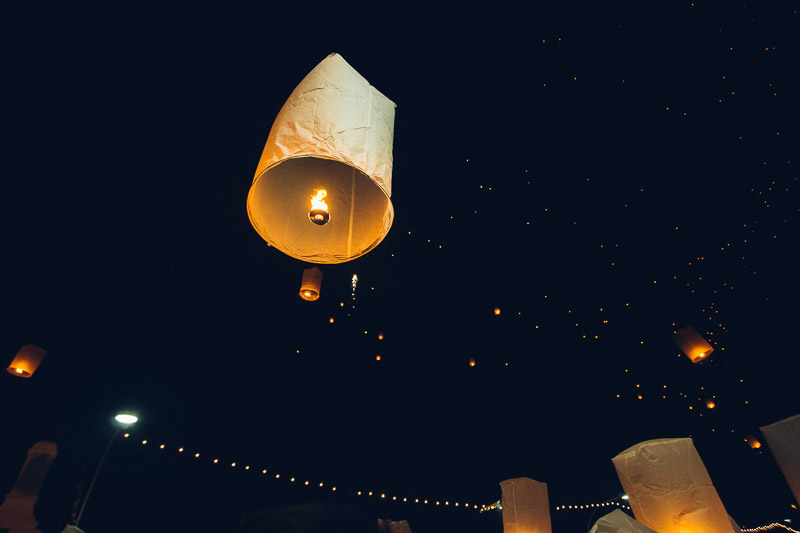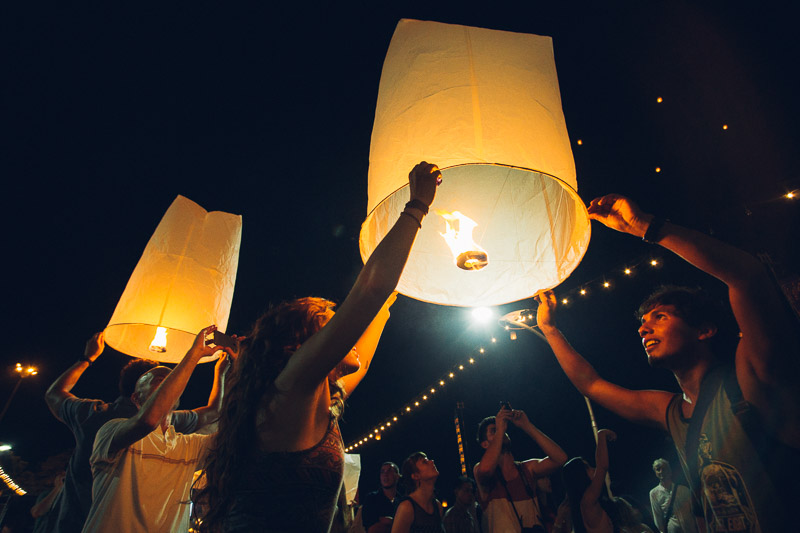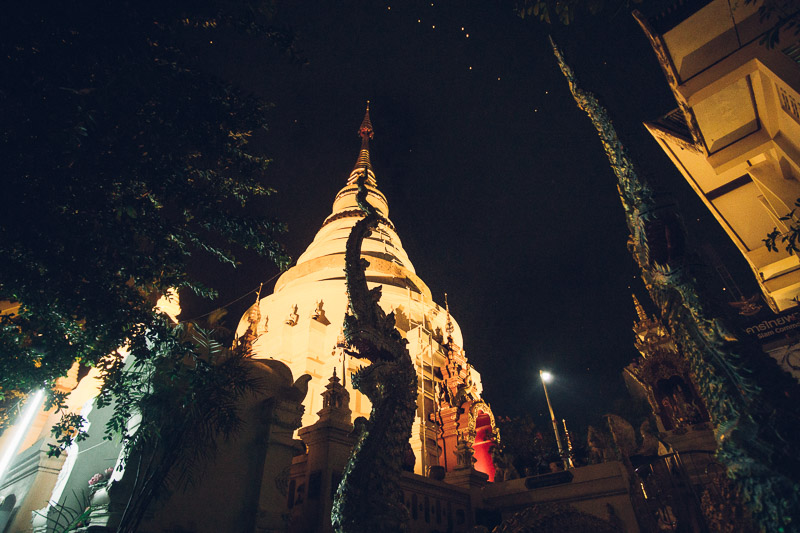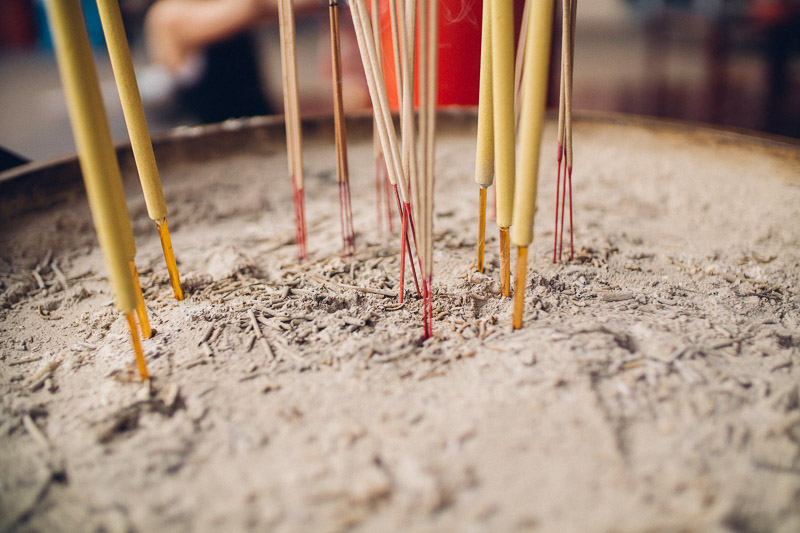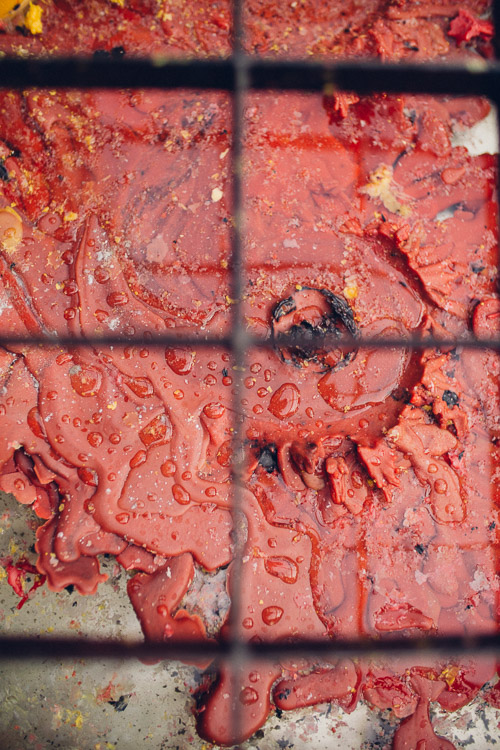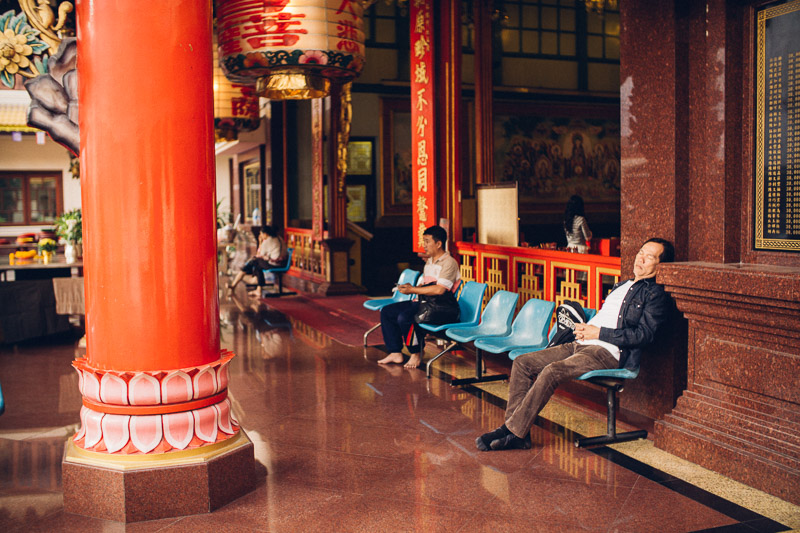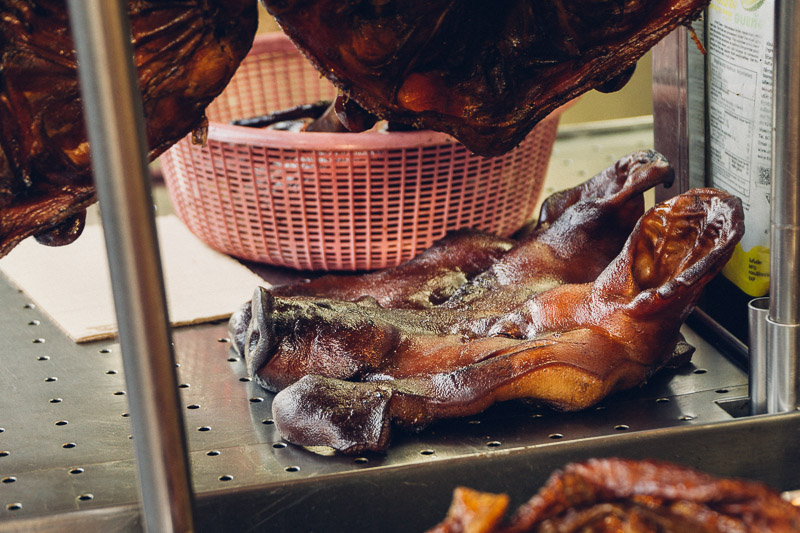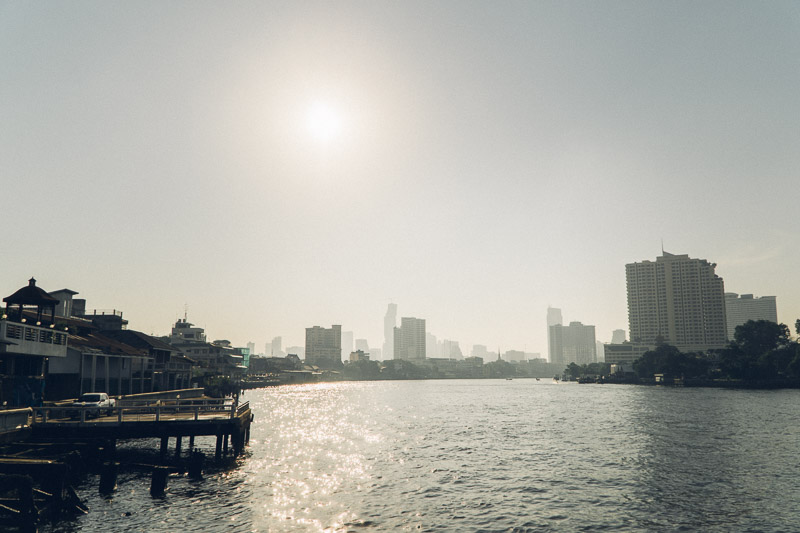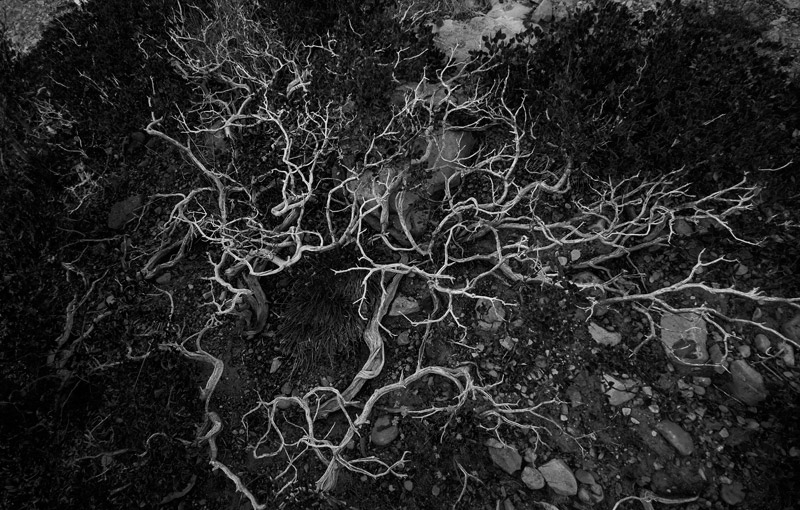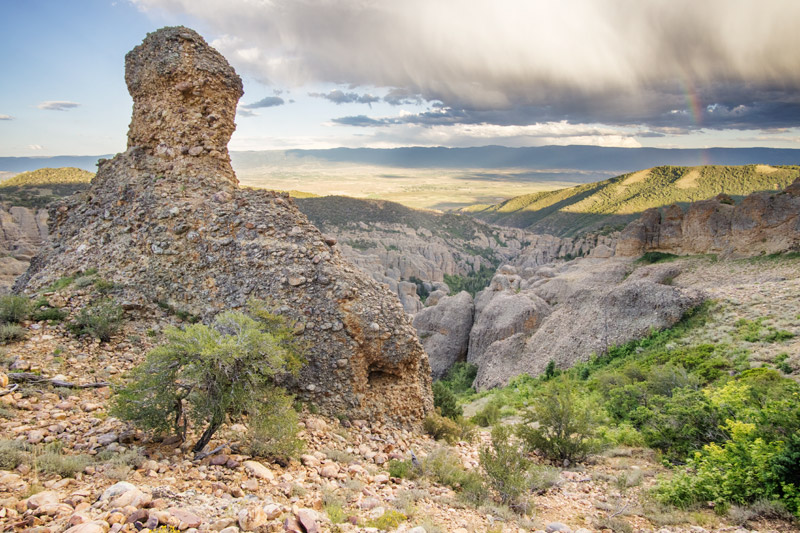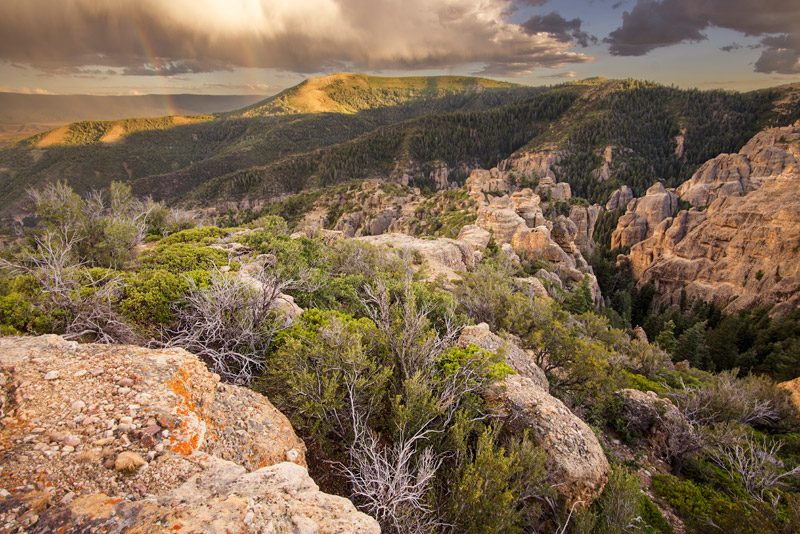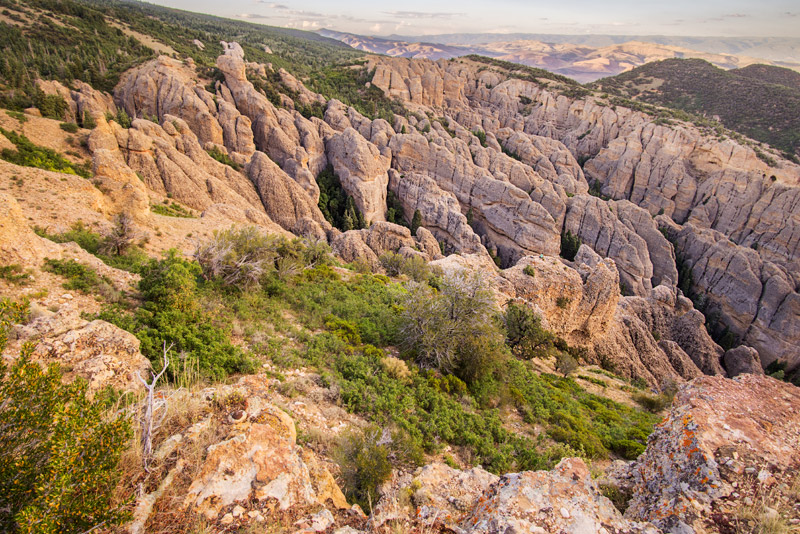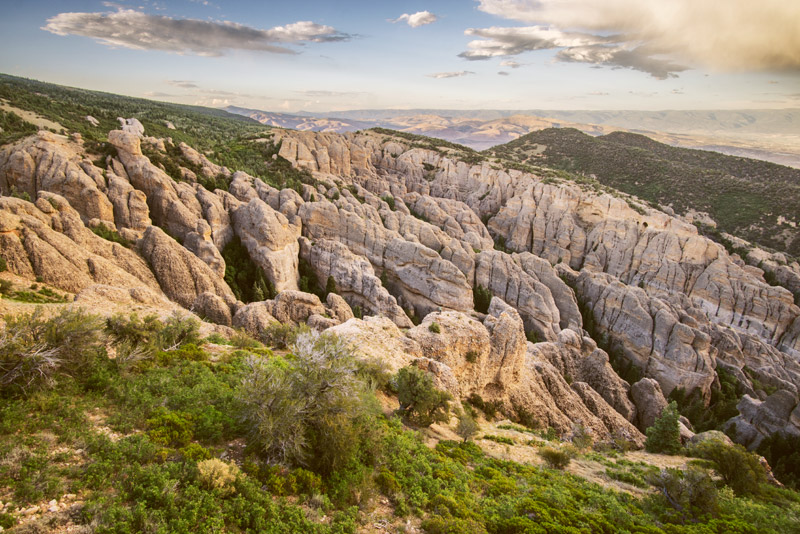
The taxi came right at 9, I was quite surprised by its timeliness. A classic maroon 4×4 that spewed black exhaust every time it accelerated, the model I couldn’t figure out. I was directed to sit in the rear, on a small bench facing the opposite side. I was in with the luggage, just like it always was on family vacations when I was a kid. Five other foreigners joined us, filling the luggage compartment. A young lawyer from Switzerland and Portugal joined me in the back, separated from the rest by the wall of luggage. We struggled to find a comfortable way to sit on the tiny seats.
In general, most travelers you meet in places like this are agreeable, easy to get along with. But every once in awhile I come across a westerner that conflicts with something inside my inner being, I despise their presence before they even open their mouths. I met such a man in the collectivo. The 4×4 taxi sat parked in the narrow street of Chinatown for 30 minutes waiting for the skinny, hunched, no neck man in his late 30s with shifty eyes partially obscured by aviator sunglasses. I feel like it’s rare to come across a face more in want of being punched. I’m not a violent man, but my fists clenched unintentionally when his image was burned into my brain. Then he opened his mouth, every word spoken with an angry self-importance which just intensified my desire to hit him. I don’t know what causes such a animalistic response to someone’s mere presence. I wish I did.
Cuba seems to be mostly flat farmland, but towards the end of the two and half hour journey we left the highway and got on a narrow, winding mountain road, mountains that are very reminiscent of Thailand, Laos and China.
Viñales is a small, colorful town where every house seems to have a room for rent. Lots of tourists come here to explore the coffee plantations and take horseback rides. Everyone seems to be surprised I’m staying for eight days. Most are here for only a day or two.


The driver dropped me off in the central park. I asked a local if they could call my AirBnB host, when soon enough a man comes by asking if I’m Scott. We walked further than I would have liked from the main strip into a quiet neighborhood and are greeted by a lovely, girl-next-door sort of brunette white young woman. Marisex (Marisay?) is the owner of the Casa Particular, and is expanding. Her mother is the cook and her boyfriend, a lawyer, seems to run all her errands.
I settled into my small but nice room and ask for a suggestion for lunch. The boyfriend led me to a restaurant filled with tour bus patrons, but with an awesome view of the mountains and limestone cliffs. The menu didn’t have any prices, so I asked. $10 for any item which included the “buffet style appetizers”. I don’t know what they meant by buffet style, but they just kept dropping off more and more food on my table. There was no way one person could eat even close to all of that.
I’d been communicating with Raul via Facebook before my trip, and he found me at my table. He announced he was taking some friends climbing and described how to find them at the cliff. After I finished what I could of the meal, I changed and went looking for Raul.


The road gets progressively worse as you walk further from town, and digresses to a dirt path. I reached a metal gate with the sign, “la cueva de la Vaca,” (the cave of the cow), and followed the arrow to a group of small houses. The path continues through the patio of one small hut, which offers fruit and drinks to the hikers and climbers who pass through. From there you can see the cave where Raul told me to meet him. There are a hundred broken concrete steps that lead straight up the mountain to the entrance of the cave.

George and Imarta were preparing to climb a 5.10c. It was their last day in Viñales, and they were trying to make the most of their five days here. The next morning they were returning to Havana where they are professional dancers. George let me climb the route with the condition that I cleaned it.
After I cleaned the route George asked if I wanted to do one more. He pointed out a line of bolts that skirted the entrance to the cave I later realized passed all the way through the mountain. I jumped on, unsure of the grade, but it looked easy enough. I clipped the first two bolts with no problem. As I reached toward an undercling I felt a sharp pain in my right arm. I looked to see a swarm of wasps coming out of the undercling. Another stung my arm as I swatted them away and simultaneously moved up the rock to the left, away from the bolt line. The wasps gave up as I moved a satisfactory distance from their nest. I had officially met the Avispo de Viñales. I finished the route, moving around their nest to the left and extending a draw from the route to the left. I think I missed the crux because the route I did didn’t seem to have a crux besides the wasps.
Raul, Henry, and Tito were trying a hard route with an extension out the roof of the cave, which they thought was 5.13. I watched them climb the first part before the extension and thought it looked fun. Raul told me it went at 5.12b. The draws were already up, so I might as well try it. Raul shouted Beta as he belayed me, not expecting me to get far since I told him I generally climb 6c/6c+ (5.11c/d). The route was powerful and gymnastic, just my style, and with Raul’s beta I ended up flashing the route which went through a series of toufas and stalagtites! I hadn’t sent 12b before, so that is very exciting!
Raul cleaned the route on top rope, flying up with no problems. It was getting a bit dark, but he recommended I try a 6c+ before I left for the night. I got into the crux and fell several times in a row, getting my right hand stuck in the sharp pocket. The light was low and Raul recommended I try again later. He finished the route easily and cleaned it.
I was still full from the massive lunch, so I skipped dinner and took a short nap before going back to the parque central to meet all the climbers at 10pm. I was finally a bit hungry and went to grab a sandwich for dinner.
Three fat, older Israeli men (who easily could have been mistaken for cubano) sauntered down the street and into the small restaurant. “I want a cola,” said one. “I want orange juice. Oraannge Juice,” said another to the server who looked lost. “orange juice. Orange Juice!!” he said again. I spoke up. “Jugo de Naranja.” The server understood and left. “Why doesn’t anyone here speak English,” said one of the men in a heavy Israeli accent. I laughed. “You’re in Cuba!” I thought to myself. I chatted with the men from my table, and they continuously conferred amongst themselves for the correct translation in English. They barely spoke English; I laughed more to myself.
I stayed in the plaza with Raul and the other climbers, as they were wishing the prohibition of Fidel would be lifted. Finally I said my goodbyes just before midnight.
The breakfast Marisé made for me was far too much for one person to eat: an omelet; 3 pancakes (the flat, dense, sweet kind, more similar to a crepe, that most places outside of the US make); a plate full of sweet bananas, pineapple, and papaya (which for some reason is always terribly disagreeable to me, the smell and taste are nauseating); bread with butter and chunks of ham and cheese; and some sort of pie, maybe coconut, with flan?? I think. I made a dent and definitely didn’t eat lunch.
Raul greeted me in the street outside of a casa particular where he was waiting for two guys he was guiding for climbing. I was joining and helping put up easy routes for the two. Andrew from Seattle and Johannes from Austria had both climbed a little before. Raul took us to another area, further south than the Cueva de la Vaca, a narrow slot between two tall cliffs, maybe 15 feet apart. We climbed three 5.8s for the two, and I tried an 5.11c. I fell at the powerful crux, not seeing a jug on the top of a toufa nor the feet in the low light of the cave. Raul put up and Andrew attempted a 5.10c. For me this climb was pure type 1 fun. Big moves through a long overhang on amazing holds. I kept shouting, “wow! The perfect hold!”


After collecting the gear from his clients, Raul wanted to go to the cave and climb with his friends, but when we got close, all of them were on their way out. It was maybe 3:30 and just getting to the right time for climbing in the cave, but at 4pm the prohibition ended and everyone wanted to drink.
We climbed onto the roof of Henry’s bare bones house still under construction while Raul went to find rum. Raul’s best friend, Fidel, described for me how close knit their friend-group is. I’m always jealous when I find friends like this because it’s something I’ve never really had, being the social butterfly jumping between too many friend-groups. (Also, how Cuban – Raul and Fidel).
By 4:30 I was drunk on Havana Club (I quite like their spiced rum). I understood very little of what was actually said between friends, but they were hilarious and I thoroughly enjoyed myself. I was thankful that such a tight knit group allowed a stranger into their circle.
We separated to get food and then met at 10 in the plaza, like every night. More rum flowed and kept finding a full glass in my hands. Thankfully, I remembered to drink water before I passed out, and I woke up with no hangover.
Marisé had set up a touristy horse ride for me, and a man with a bicycle walked me to a tobacco plantation where the tour began. A man with character and decent English pulled a group of foreigners into a barn and described how tobacco plants are selected and grown, and why Cuba makes the best tobacco. He then showed us how they roll the cigars and gave us each one to smoke. For the best cigars they take out the stem of the leaf which apparently contains the nicotine, so the cigars had a very neutral odor and flavor, far less harsh than anything I’ve smoked. They used honey as the glue to keep the cigar together, and dip the mouth end in honey, so you get a sweet flavor through the smoke.



The horse I got really liked to trot, the bounciest thing to ride. Walking is somewhat smooth, and when a horse breaks into a canter or gallop it’s easy for your body to move with the horse’s. Trotting jars your body with every step, but I finally figured out why English Style makes sense, standing in the stirrups and sitting in the saddle in a rhythm that matches the trotting, making it a far less jarring experience. It would have been easier if I didn’t have a backpack full of photo gear bouncing with every step.
My guide took me solo along the established tourist route, stopping at a coffee plantation and a beautiful vista. I tried to take portraits of as many of the farmers that caught my eye, but I had yet to capture a portrait I really loved.








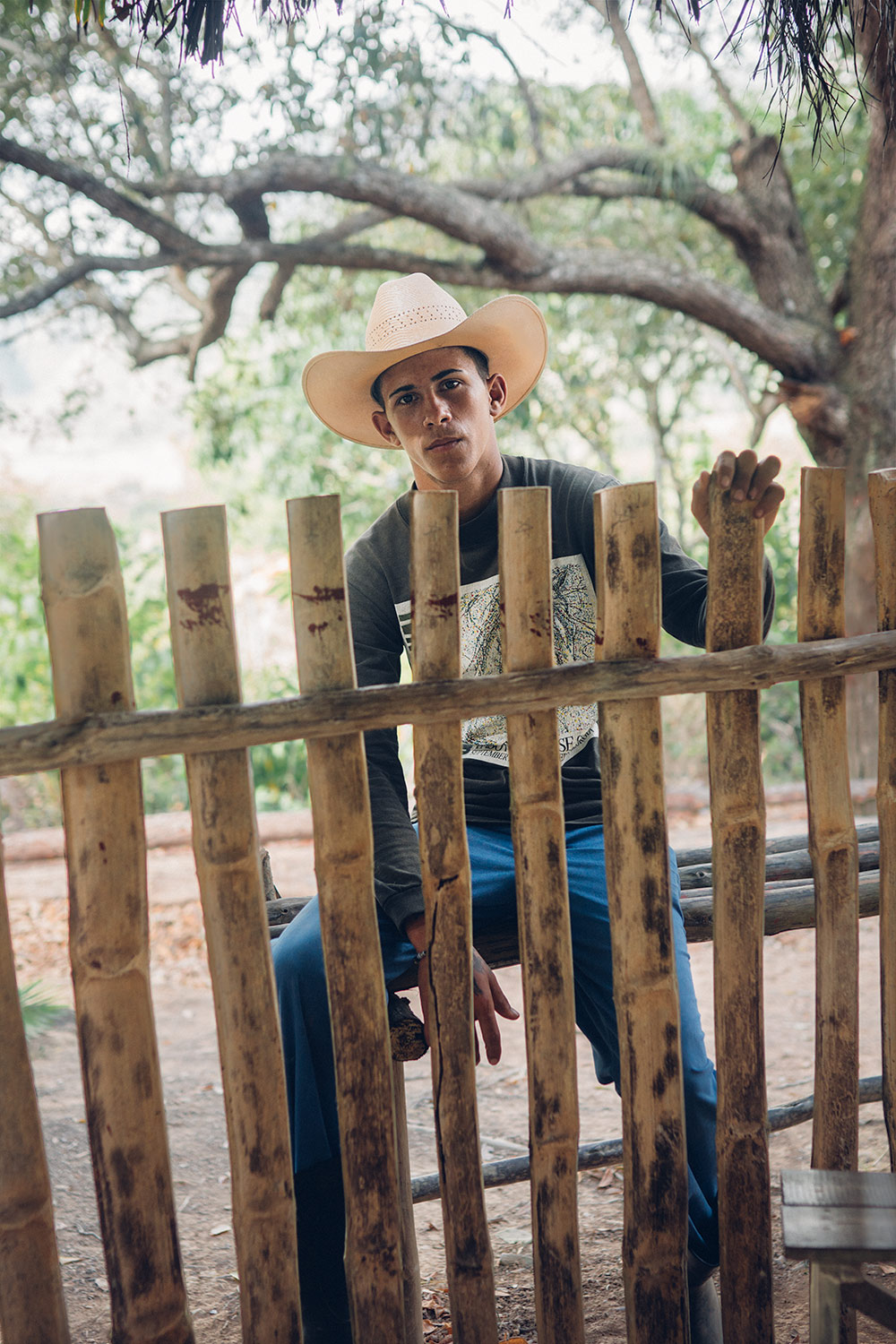

I know my Canon system inside and out, but I brought my Sony camera and Flashpoint strobes. With my Canon I can set my camera to aperture priority ⅔ stops underexposed and set the off camera flash to plus ⅓ automatic exposure, and the mix of overall exposure and added light is beautiful and just a bit past natural looking. Most viewers wouldn’t notice that it’s artificially lit. The results on the Sony and Flashpoint with the same settings are completely unpredictable, but the strobe is typically the key element of the exposure, making the appear very artificial. I can find the right mixture with manual, but it takes experimentation and time that my subjects don’t always give me.
I had worn shorts, which was a mistake, my legs rubbing on the leather saddle. My butt was also quite sore by the end of the 4 hour tour.

I found Raul guide two girls from Bulgaria in another area of the climbing. The girls were beginners and already tired by the time I arrived. Raul was going to set up a rope swing in the cave and invited me to come. We climbed the steps to the cave and Henry and Fidel were waiting for us. Raul climbed a long, severely overhung 7b+ twice to prepare rope, once leading and again to clean. The other end of the rope is walked/climbed to a comfortable stance between a stalactite and the wall. The swing takes you far out into space beyond the cave and pendulums you back toward the rock. It was definitely a freeing feeling.

 A house I passed everyday walking to the climbing at Cueva de la Vaca
A house I passed everyday walking to the climbing at Cueva de la Vaca
The two girls invite us to join them and several more friends from Bulgaria for a family style dinner at the cafeteria next to the climbing area. I arrived after dark and Raul, an older farmer that runs the farm, was waiting expectantly. No one else was there yet and he had prepared an impressive table of food. He asked where the others were, but I had no idea. I had had no contact with them. We waited till 8:30 and Pablo got increasingly more anxious. Finally they showed up, the two girls and two couples. We had quite interesting discussions on politics, traditions, families, relationships, and the state of North Korea.
The food was served family style with plantain and banana chips as starters. We had some sort of meaty, salty blackened fish, and goat with the bones just chopped into it making it hard to eat with any real style. There were green beans, a pear/potato like fruit called choyote with a nice subtle flavor and a similar starch called chuma/Yuma? Both were quite nice.
I was just glad not to be eating another meal alone. I expressed thanks that six Bulgarians were speaking English so one American could be a part of the conversation. They said something to the effect of, “we can barely understand each other in Bulgarian, so why not English?”
I met Fidel and Raul in the plaza and went into the bar next door with a live band playing pretty amazing regatone and salsa.

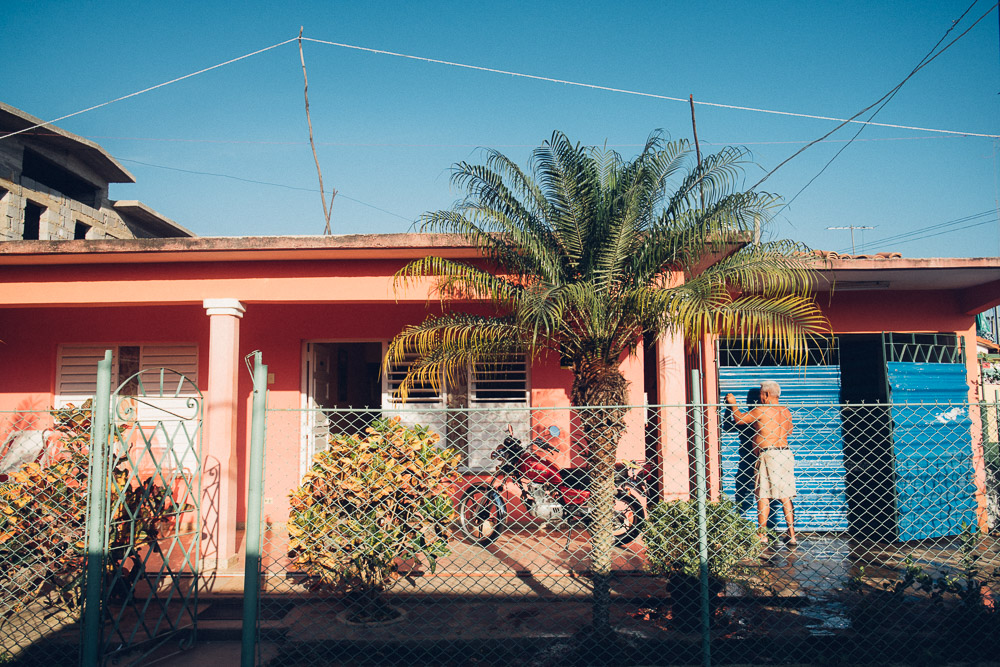

I woke up late and rushed to meet Raul in the plaza. He was helping me find subjects to shoot and working as my assistant. We went back to old Raul’s farm and took portraits of several of the workers and an older woman in a house a bit further away. After, Raulito found some La Sportiva Solutions that were the perfect fit so I didn’t have to walk all the way back to my casa, and we went up to the cave.


I climbed an overhanging 11a, scaring up wasps every several feet. I did not want to get stung again and tried to stay at a safe distance from them, the crux of the send. Raul cleaned the route, stopping to swing his chalk bag at the wasps, destroying the nests and scaring away the wasps he didn’t kill. He came down upset, two wasps had stung him.
After I jumped on the severely overhanging 12b(7b) that Raul had climbed to set up the rope swing. The first part was maybe 11b, and you skip some anchors, back clean a couple bolts while moving between stalactites in the roof and get a no – hands rest, straddling a stalactite, before attacking 20 feet or so of 35 – 40 degree roof. I fell making the last move, a mono for your right hand, an undercling for the left. I moved my feet up, and my finger in the mono was stuck and quite painful. After taking and changing the finger in the mono, I made the throw to the last jug before clipping the anchors.\
I was absolutely wiped after. Raul cleaned again, stopping to swat some more wasps and getting a couple more stings.
While we were shooting, my legs suddenly became very itchy. Raul said maybe it was ticks, which I thought he was misinterpreting chiggers. When I got back to my room I used the flashlight on my phone and started seeing barely visible objects moving on my legs. Looking closer, they were in fact tiny tiny ticks looking to bury their tiny tiny heads in my skin. I pulled off probably close to 50. I must have crouched in a nest in a field while I was shooting. I’m hoping they are all gone.

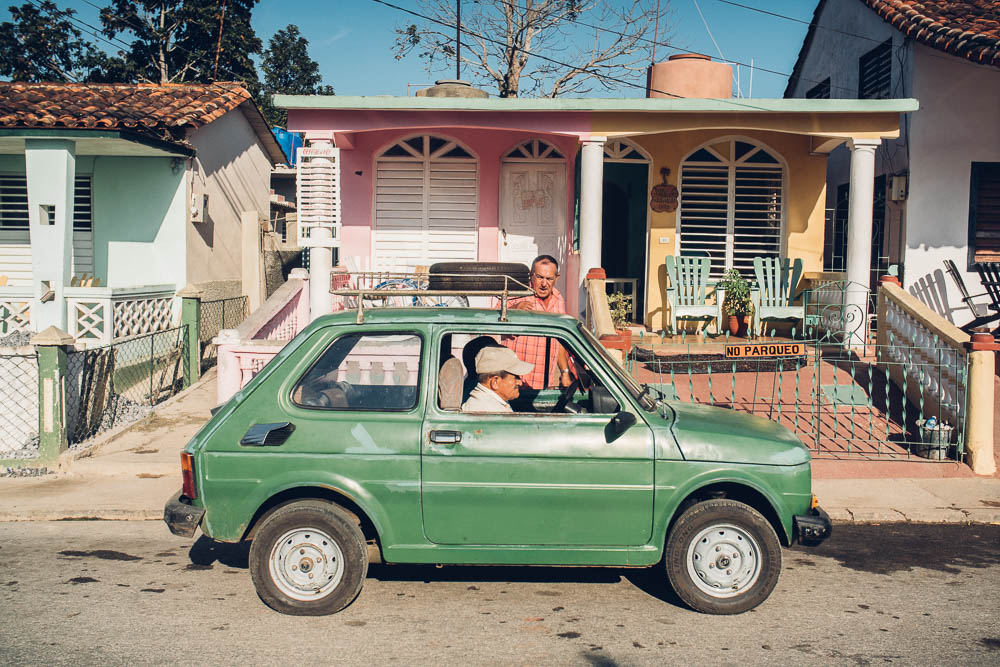
I received several emails in a row about job requests, all for the week I was supposed to get back in Boulder. I’m thinking of cutting my trip short and buying a new ticket home Sunday night, skipping 2 days in Cuba and a day in Miami. I would have to forfeit my original ticket, but it could be worth it.
I found a last minute ticket on Delta for $180 from Havana to Denver on Sunday, which simplified my return by quite a bit. I was going to have to get to Santa Cruz from Havana, then I had a 24hr layover in Miami before finally returning to Denver on Tuesday. I bought my original tickets from Miami round trip for $205, then used Southwest points to get to Miami. But it ended up being a pretty big hassle since Southwest flies into Ft Lauderdale and I flew out of Miami. On the way in, I ended up having to pay for a hotel room in Miami which pretty much negated any savings I made by this schedule. So, by just missing my original return flight (net loss $102.50) I didn’t have to take a taxi to Santa Cruz ($25), find two more Casa Particulars ($40), pay for a hotel in Miami ($80) and Uber to Ft Lauderdale ($45). I guess I saved $90….oh and I got my Southwest points back to use again later.
I was planning on going to the beach with Raul today. I woke up early to try and rent a scooter, but I could not find one available in all of Viñales. So, I thought I could quickly buy an Internet card. I stood in line behind maybe 5 people waiting for the telecommunications company to open its doors. I was in line for over an hour. It’s amazing how slow some people can move. An Israeli man came in line after me and we talked for a bit, the usual things travellers talk about. But then I realized that they might ask for my passport, which I don’t carry. The Israeli man asked if they would take Euros. He told me they will definitely want my passport and I told him they definitely won’t take euros. So we ended up combining forces. He provided identification and I paid for his card as well as mine. He then paid me back in US dollars.
My climbing pack had been quite badly ripped for some time, I had performed ill-advised surgery on it, causing it to rip even more. I walked past a warehouse full of women wearing matching candystriper uniforms working away behind ancient looking industrial sewing machines. Raul had mentioned that one of them women might be able to fix my bag. I ask the man who appeared to be in charge, and he disappears with it into a back room, motioning one of the women to follow him. After 20 minutes or so, the woman comes back out with my bag looking better than it had in years! I ask how much. “No es nada,” she said with a smile. It’s nothing. I insist, but she insisted harder.





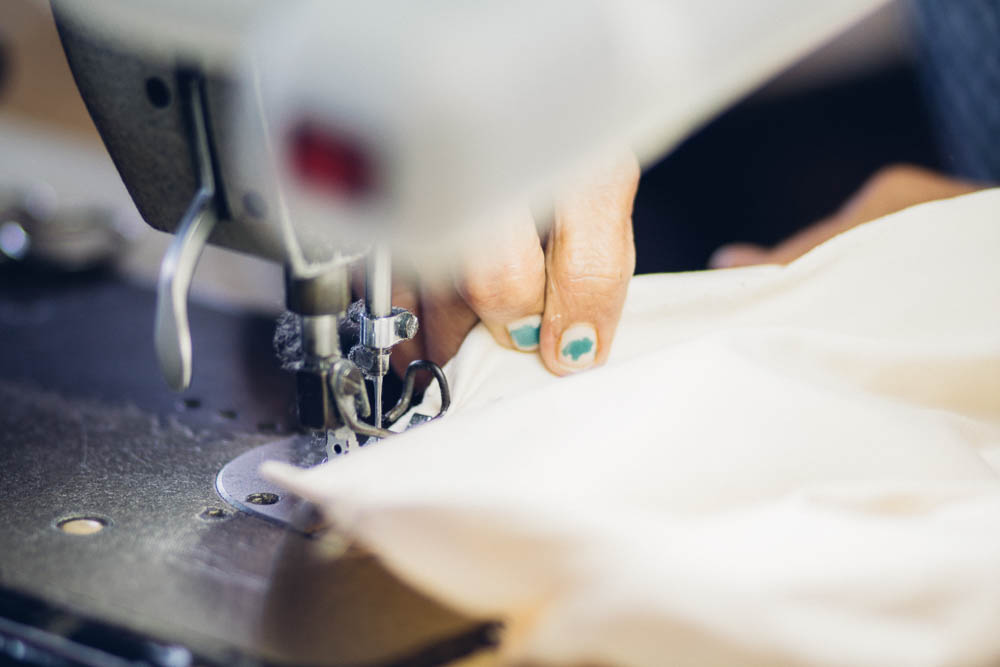
I ran into an American climbing guide who had come to check out La Cueva de la Vaca the day before. He had come solo and was looking for someone to climb with, which was perfect. I had neither rope nor draws, and since I wasn’t going to the beach I might as well climb.
I took Pete to the other side of the cave which has morning shade. It was definitely cooler than climbing in the sun, but not by much. The air was perfectly still and the humidity swallowed us. We climbed a 6a, 6a+, 6b, 7a+ (5.12a, but definitely easier than a lot of 11s I’ve climbed). By the time we finished these it was 2:30, perfect time for the sun to be leaving La Cueva de la Vaca. Pete put up the draws on the 7a/7a+ that I’d failed to finish a few days before, struggling at the crux but sending. I led again and felt much better going into the crux, but a foot slipped and I fell. When I tried the move again, right hand in a painful undercling, left hand on a bad pinch, feet awkward, I was able to get my left foot high and reach static with my left hand to the good pocket. Pete said it looked far too easy. He convinced me to leave the draws and try again. He then onsighted Wasp Factory (7b, but more realistically 7a). I tried the 7a+ again, failing again to go static to the pocket. Once again trying the move I was able to go static. I was pretty tired after and told Pete I would belay him, but I was done. He tried La Playa (7b+) at my recommendation, but futzed around on several parts, tiring himself out before he reached the crux, at the top of severe overhang making several hard moves separated by short rests on stalactites. Because it is so overhung it’s pretty much impossible to clean while on lead, so I volunteered to try to follow it. I ended up feeling quite good, floating up the 6c+ first section and through the 7a+ section before the severe overhang. One of the cruxes felt pretty strange, and I don’t remember how I pulled through on my onsight attempt, but the last crux went much better. From a rest on a small stalactite, my right hand was on an undercling of another small stalactite, my left foot pasted on the side of the resting stalactite and my right toe hooked behind it. My left hand went a little far left to a pretty good undercling. With the right toe hook, I could move my right hand to a mono I took with my pointer finger. I bumped my left hand far left to a small but positive flake. Moving my right foot to the smaller stalactite, I set myself up for the dyno to the finish hold, a thin but positive triangle flake. Pete was thankful he didn’t have to climb it again, mentally preparing for the possibility if I was too tired.
We made plans to climb the next day and separated to find dinner. I was going to go back to the plaza after a shower, but… sleep.
I ate breakfast at the casa and walked to meet Pete and two Germans in the plaza. We were taking a taxi to a climbing area a few kilometers north, Cuba Libre, above a cabaret club built into a cave.

The taxi driver promised to come back at 6 to pick us up, and we found our way through the jungle to the steep approach trail, 5.2 scramble up loose rock. Pete had downloaded the guide book on his phone and went to work locating the climbs. We warmed up on the easiest climb that wasn’t in sun, a 6c that was very difficult to spot the bolts from the ground. It was incredibly weird, awkward movement to get through, around, and over several stalactite features. Not my favorite. Pete lead and it was overhanging enough that I needed to follow to clean.
We jumped straight onto a 7b/7b+ we thought was called Moscow Mule, but wound up being a new climb not in the guidebook. It was proper hard and realistically 12a, but very good. Steep climbing out several stalactites brought you to the crux, a bit of an awkward stance on mediocre holds and a deadpoint/dyno cross with the left hand to a progressively better hold the higher up right you go. With 2 inch advantage on me, Pete was able to get it a bit easier. But after you’ve expended your energy on the dyno, the struggle isn’t over. Several big moves left, then right, then left, then right lead you to another crux, a throw to a die shaped hold and cross with the right to a better hold, this being your first rest since before the first crux. To gain the ledge both Pete and I took an extremely painful hand jam with the right and carefully move across a slab to the anchor. We both took at both cruxes the first go. Pete sent his second go and I cleaned, taking again at the first crux.
Pete climbed the route to the right, which was apparently actually Moscow Mule, but he felt the 7b rating was quite the exaggeration, 6b+/11c was more accurate. I elected to spend my limited remaining energy on the 7a+ on the arrete to the right. I got my hands mixed up in the crux and took a big whip out into space. I was able to get back to the wall by a combination of boinking and swinging, which for some reason is becoming more and more worrisome in my head. My trust in ropes and equipment is for some reason diminishing, and I can’t figure out what is going on with my head. I took another short fall at the top when another German told me the holds were left but meant right. I had found a mono crimp inside a scooped sloper and was pulling up, only to find more slopers. I had ignored a large tufa to the right that had several good holds that you couldn’t see from below. Pete climbed and fell at the top in the slopers, and I climbed again to clean, absolutely destroyed and taking my way up after the first crux. I felt my climbing trip coming to an end, my body was tired.
Pete wanted to climb a 5 star 6c in the next alcove, which required down climbing and re-approaching another sketchy loose scramble. Pete struggled through most of the climb, muttering about how terrible it is. I followed up to clean with Pete top belaying me, grabbing a couple draws instead of the shitty holds. He was not mistaken, it was an astoundingly terrible route, the 5 star rating a complete mystery.
We waited to well after dark, the taxi failing to show. A couple from Spain offered up one spot in their car, which I said Pete should take, since he spoke the best Spanish, and send back a taxi for us. A worker at the restaurant told us it was unlikely Pete would find a taxi willing to come that direction at this hour. About 20 minutes later another couple from Spain drove up with enough room for myself and the German couple. They dropped us off at a vegetarian restaurant. Apparently, Pete did find a taxi and went back to find us about when we left.
The previous day my stomach had been quite unhappy. I woke up with an emergency run to the toilet and 4 or 5 more after. By 10, it had calmed enough I could go out.
I was dedicating my last day in Viñales to taking more portraits, and I figured out a system for my light where I didn’t need an assistant.
I was trying to meet Pete and Raul in the plaza before they left for climbing, but I got distracted taking a couple people’s photos. I arrived 12 minutes late and they were already gone.
I walked around the streets for three hours taking portraits of anyone that allow me. I was surprised at how willing everyone was. I would walk up to a house with everyone out on the porch and ask to take portraits. The parents would smile and send their kids out to have their pictures taken. I don’t think I had any negative responses to my request; lots of smiles and laughter.


I finally found my brain starting to make sense of Spanish, able to comprehend some of what people were saying and formulate a somewhat intelligible response, something resembling a conversation. Of course, the day before I’m leaving I’m starting to be able to effectively communicate. Everyday, Marisé’s mother asked me about my day, and I was happy I could actually respond.


Marisé called a friend who had a collectivo going to Havana and we waited on the street for them to pick me up. A panel wagon full of Europeans drove down the dusty road. A man threw my bags onto a roof rack and I took one of the last remaining seats. The wagon had two from France, two from Spain, two from Greece ( and a couple more, I can’t remember) Most were headed to Trinidad or the National Parks, I was the only one actually heading to Havana.

Listening to the two Spaniards, who were strangers to each other, converse in Spanish, I thought, “It sounds so crisp and clear!” I could understand so much of what they were saying compared to the Cubans, who’s thick accent and use of slang makes it very difficult for a novice to decipher.
The driver pulled off the highway into a rest stop and everyone was confused. The driver told everyone to get out and grab their bags from the roof. He was continuing to Havana, and I was his only passenger. Everyone else was transferred to another collectivo going to Trinidad.
The driver drops me close to the address of the AirBnB my girlfriend had booked for me (the AirBnB website refused to let me book it while currently in Cuba), and I wandered around the block looking for the correct address. I stepped into a coffee shop and asked to use their phone. The madre de casa particular told me which house it was and to ring the buzzer when I got to the door. It was a large brick building and setup much more like a guest house, taking over the entire 3rd floor with five or six separate rooms, shared living room and kitchen.

After settling into my room, I went in search of internet. I walked the several blocks to the Riviera Hotel, but as I got close I watched massive waves crash over the Malecón waterfront promenade. The high tide and an incoming storm were causing larger than normal swells. I tried my best to capture the swells without getting myself and my camera soaked.






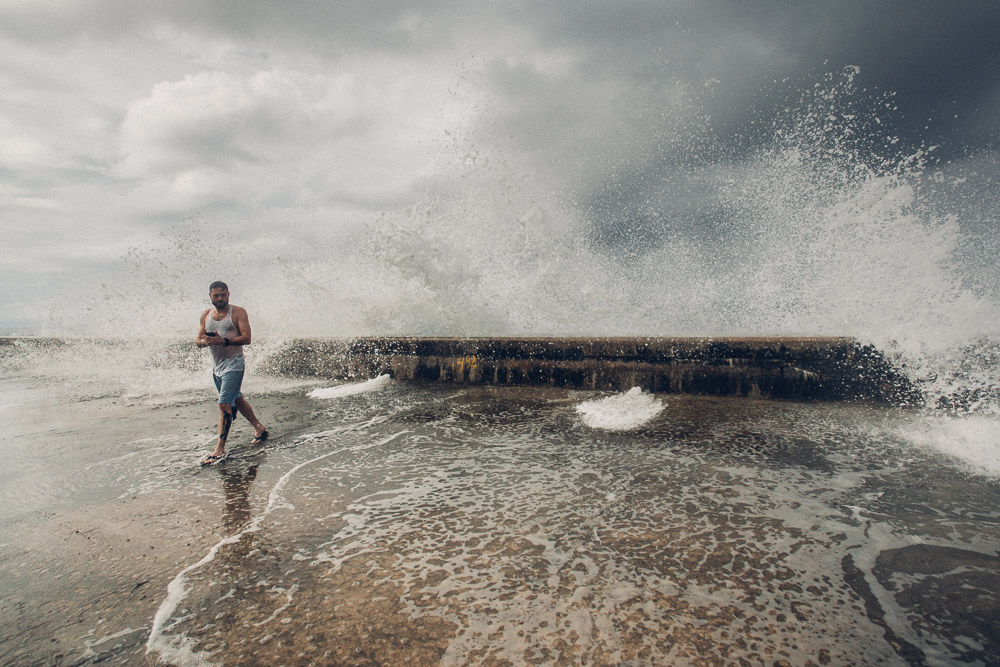

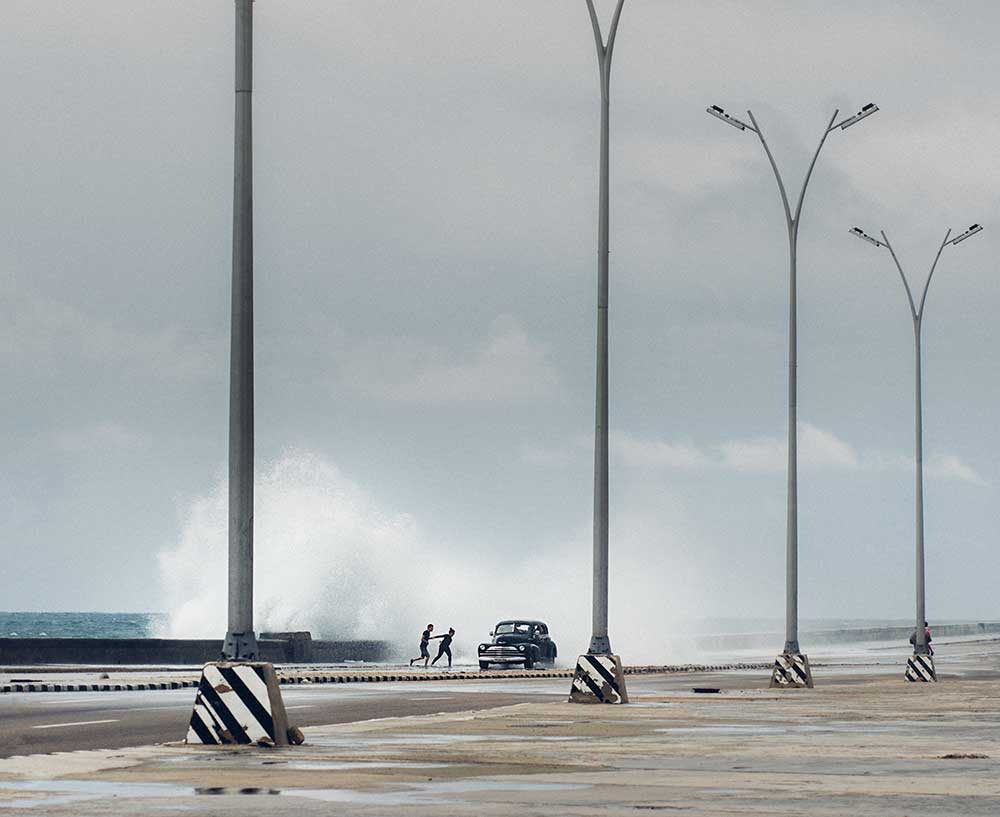
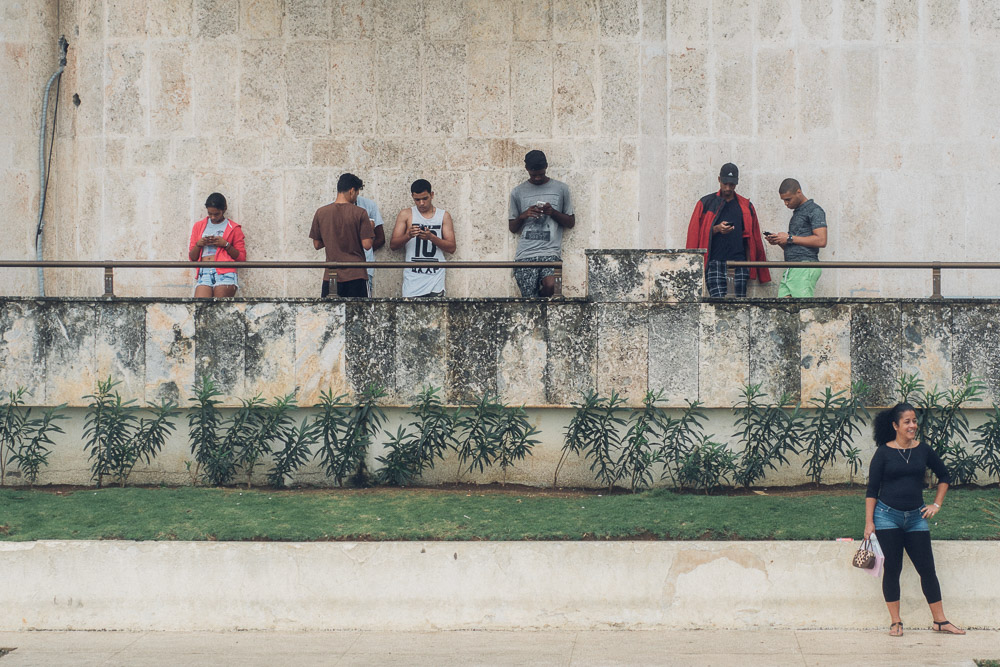
The kids getting their internets





I had picked this casa particular because of it’s vicinity to Fabrique de Arte, a club in Vedado that featured art galleries, live music, and interesting culture events. I had been told by many people I had to check it out, including by Cubans. I arrived before the doors were supposed to open, and despite the rain showers there was a line wrapping around the block to get in.
I liked their system of payment. As you walk in you receive a card that gets filled out by the bar staff or food vendors. You hand the card to a cashier as you’re leaving at the end of the night to pay for everything all at once. If you lose your card, you pay something like $30, which depending on how much you drank, might be a deal.
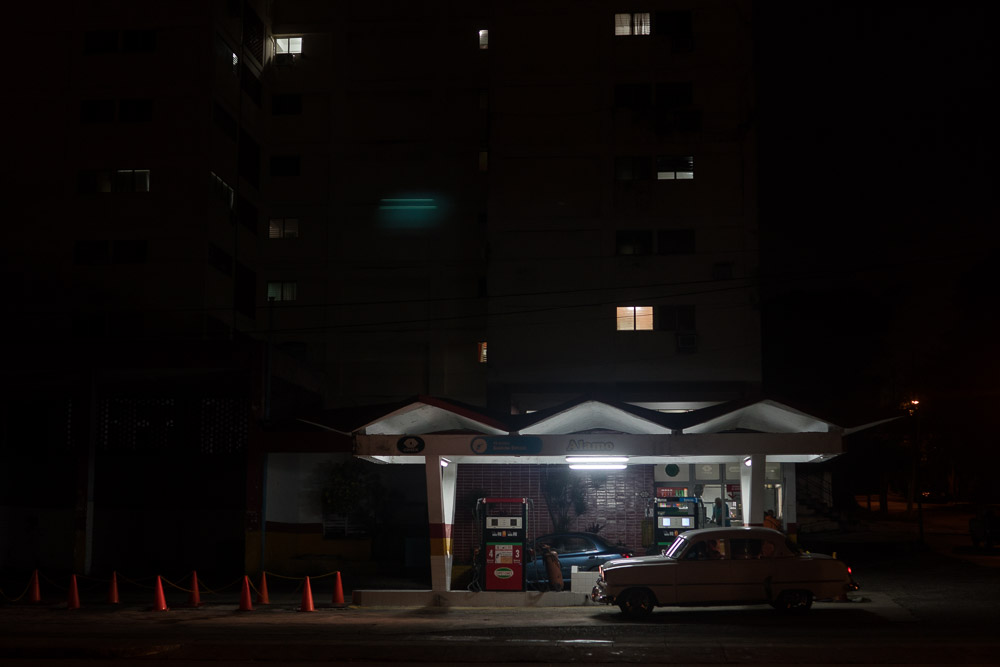
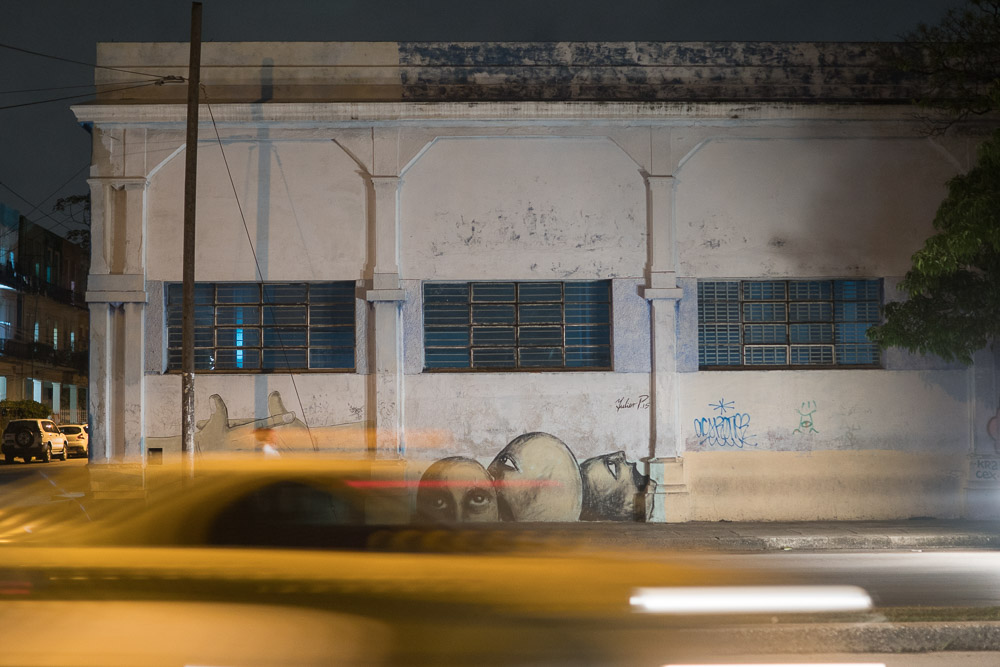

I ran into some friends I made in Viñales and spend the night watching a fashion show, looking at the galleries and listening to some awesome jazz in a room that makes you forget you’re in Cuba, although I’d guess 50% of the patrons of the club are Cuban. Definitely worth going to on your trip!

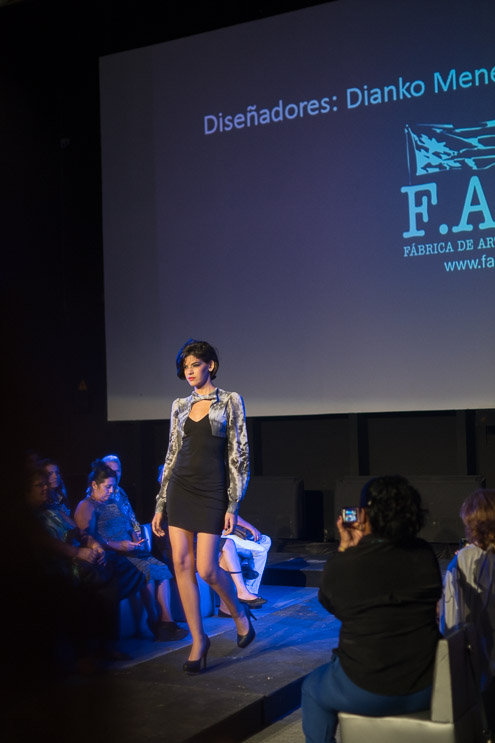

The madre de casa particular called a taxi driver friend to take me to the airport and a small Russian made car arrived on the curb. I arrived at the airport several hours early, hoping to not have the same holdup I did at the Santa Cruz airport. I was let through security and immigration without issue. With two relatively quick flights I was back in Denver.






I loved my time in Cuba, despite cutting it short by two days. Travel was quite easy, the landscape beautiful, but really the best part was the people. They are so incredibly hospitable and laid back, an amazing combination. I worried going in that the people would (rightfully so) have a negative opinion of America, but everytime I answered the question, “Que pais?” “Estados Unidos” was received with a huge smile and the response “I love America!” There were more American flags worn casually on clothes than anything I’ve seen outside of a NASCAR race. I wondered to myself if they knew the extent to which the American American embargo on Cuba caused much of their country’s poverty. But they remain an beautiful, happy, fun loving people, welcoming strangers into their lives and wanting to share whatever they can. I cannot wait to go back!











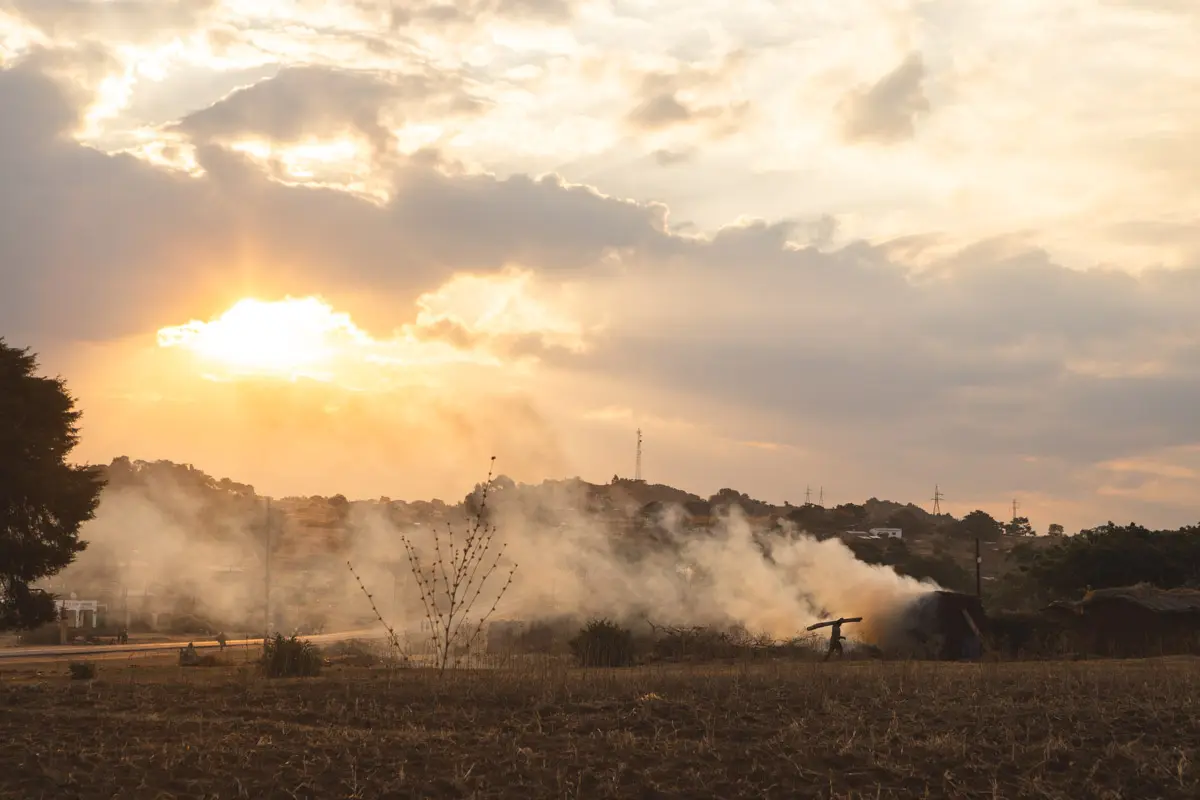

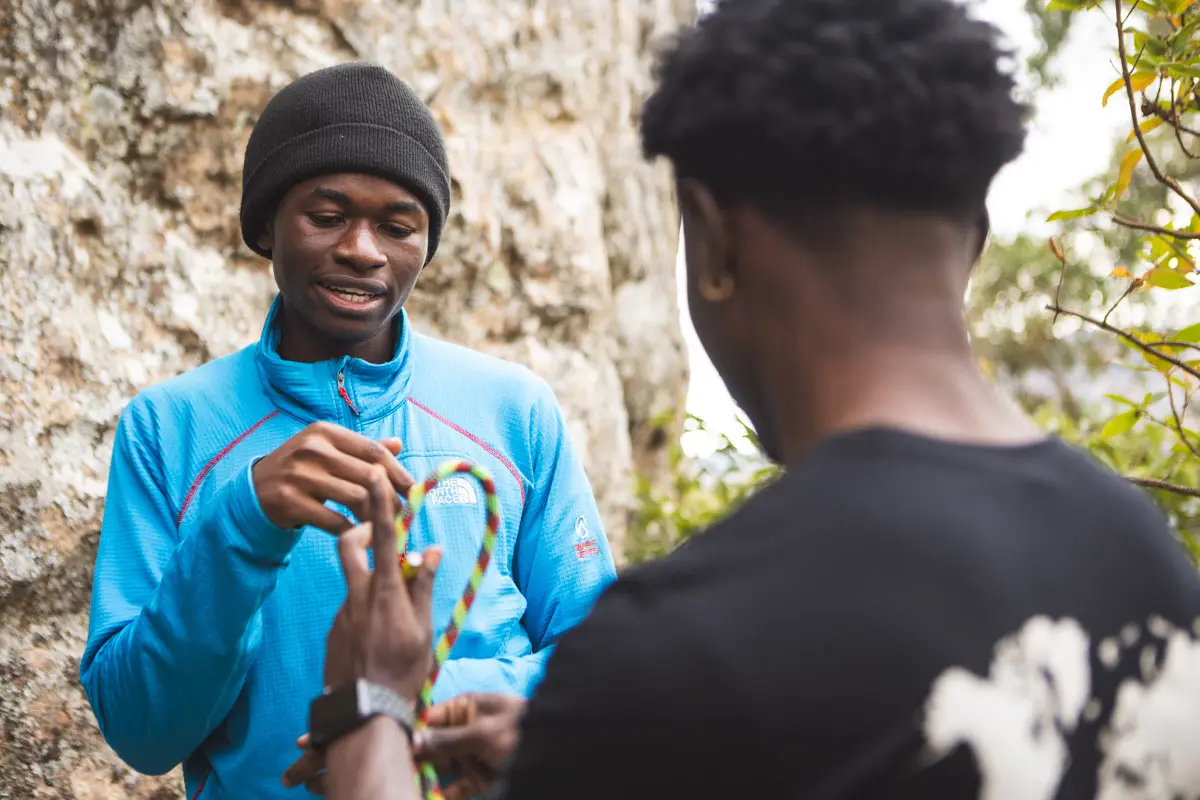






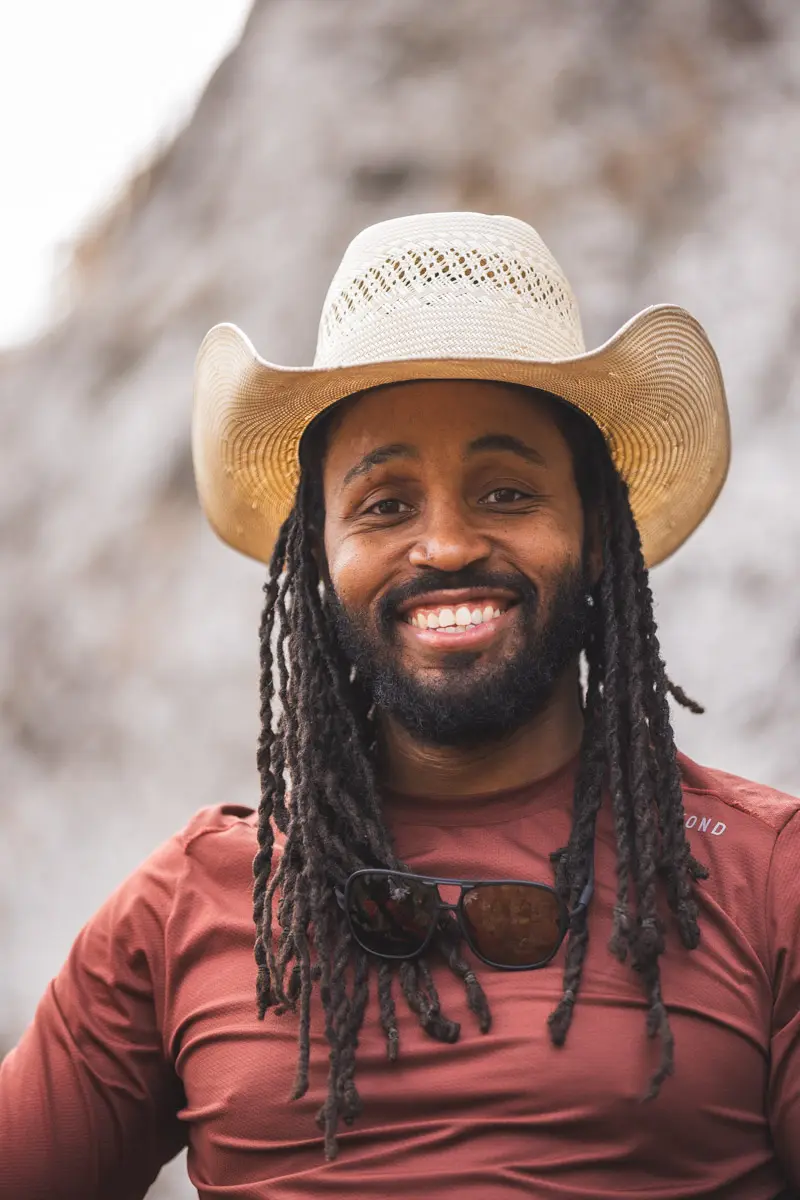




























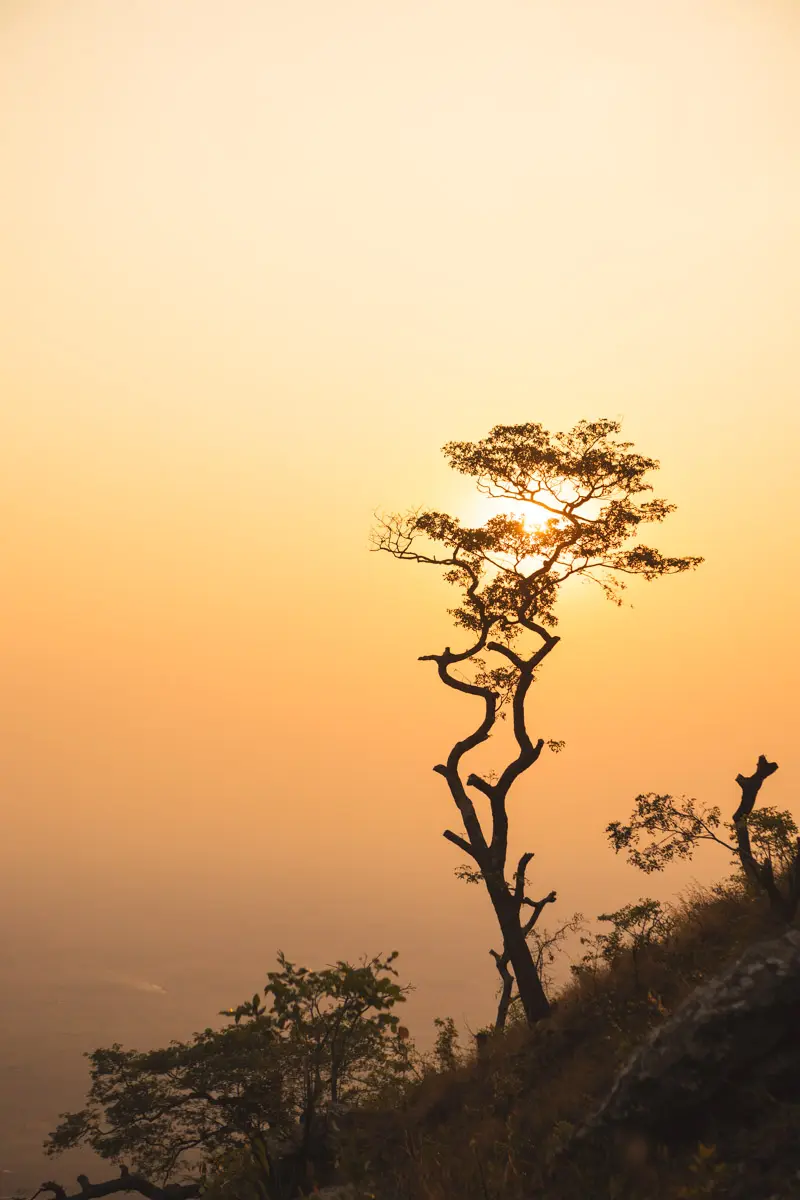

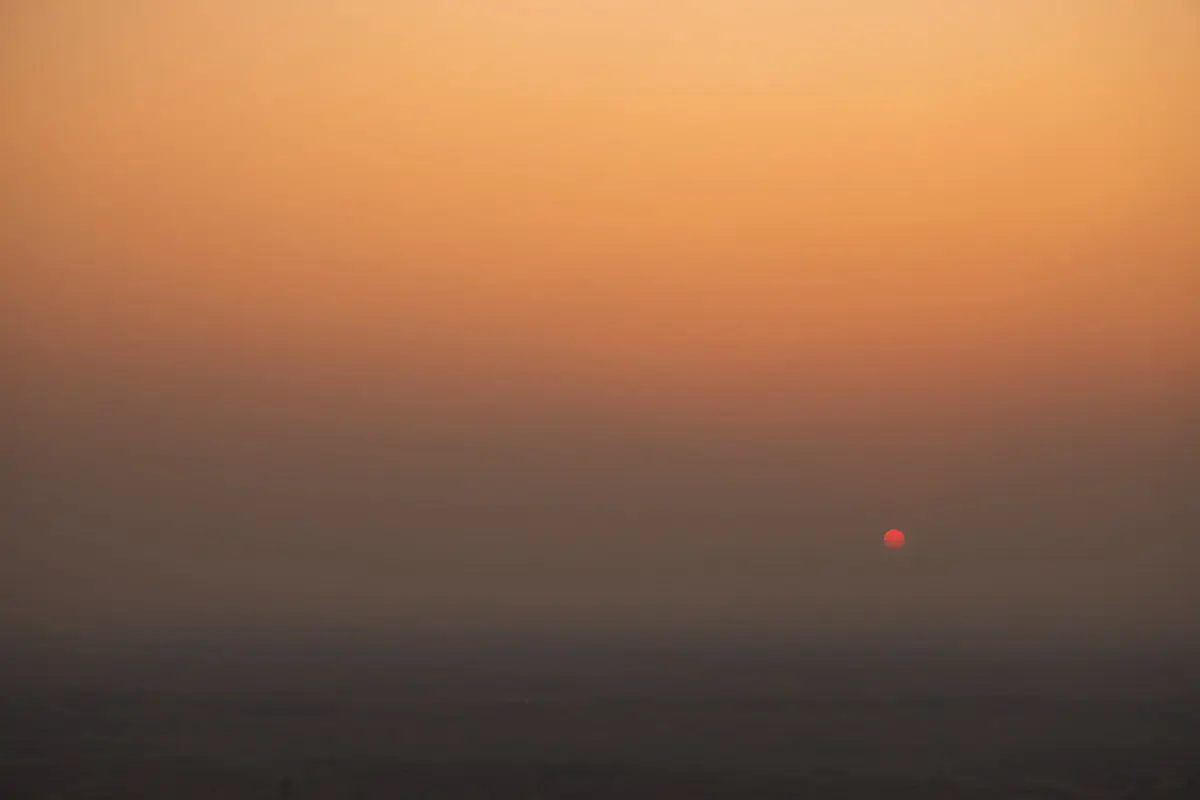










































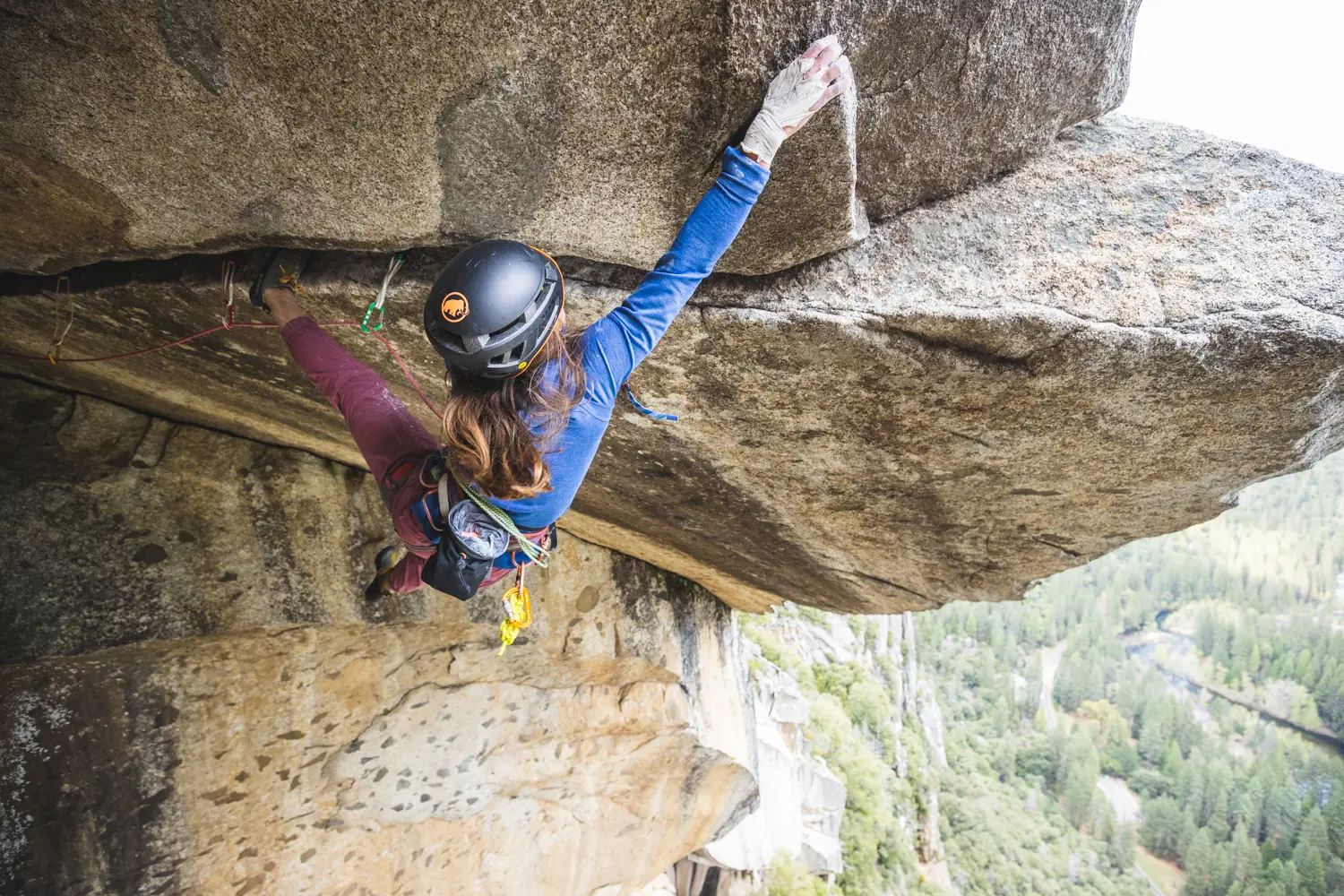




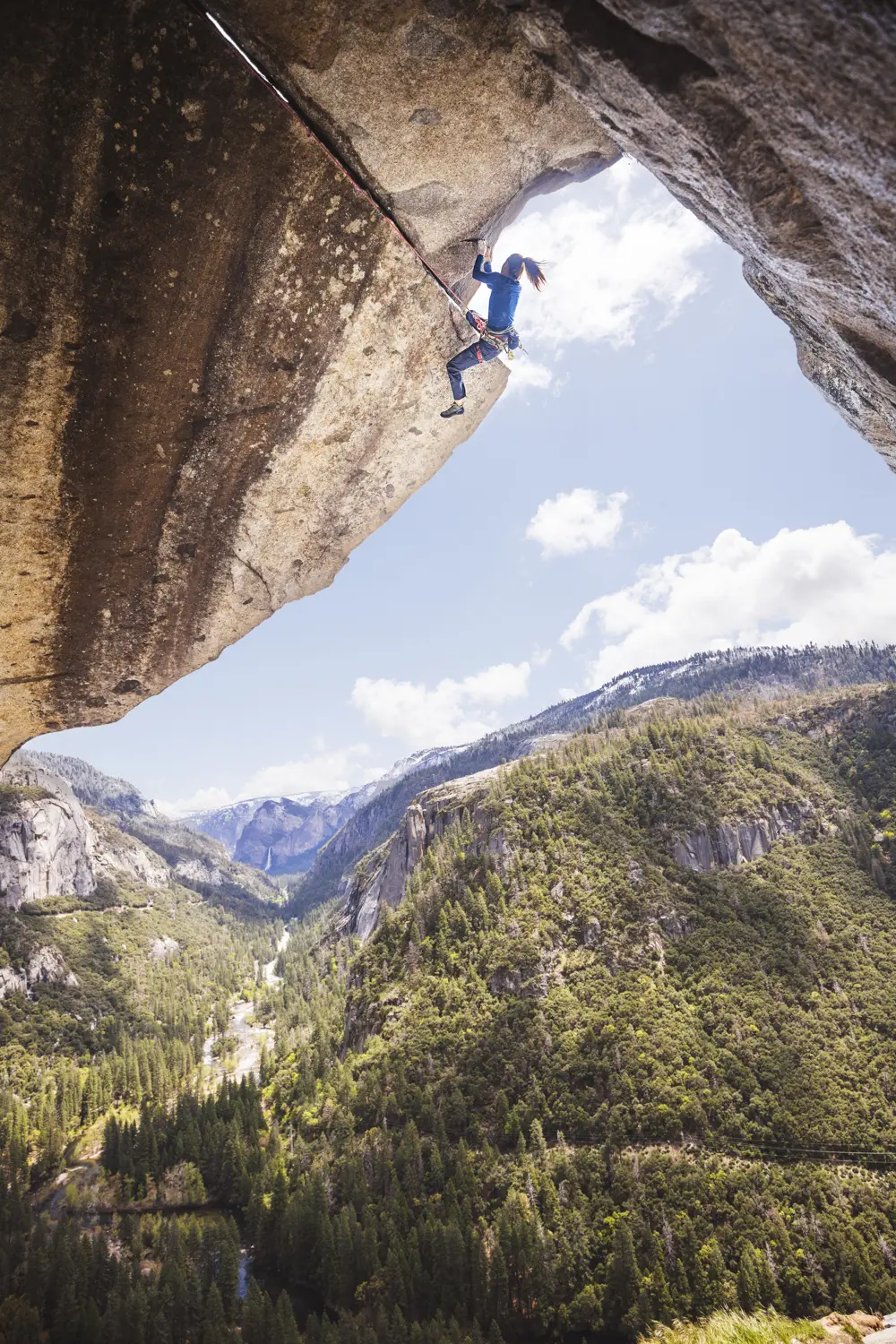














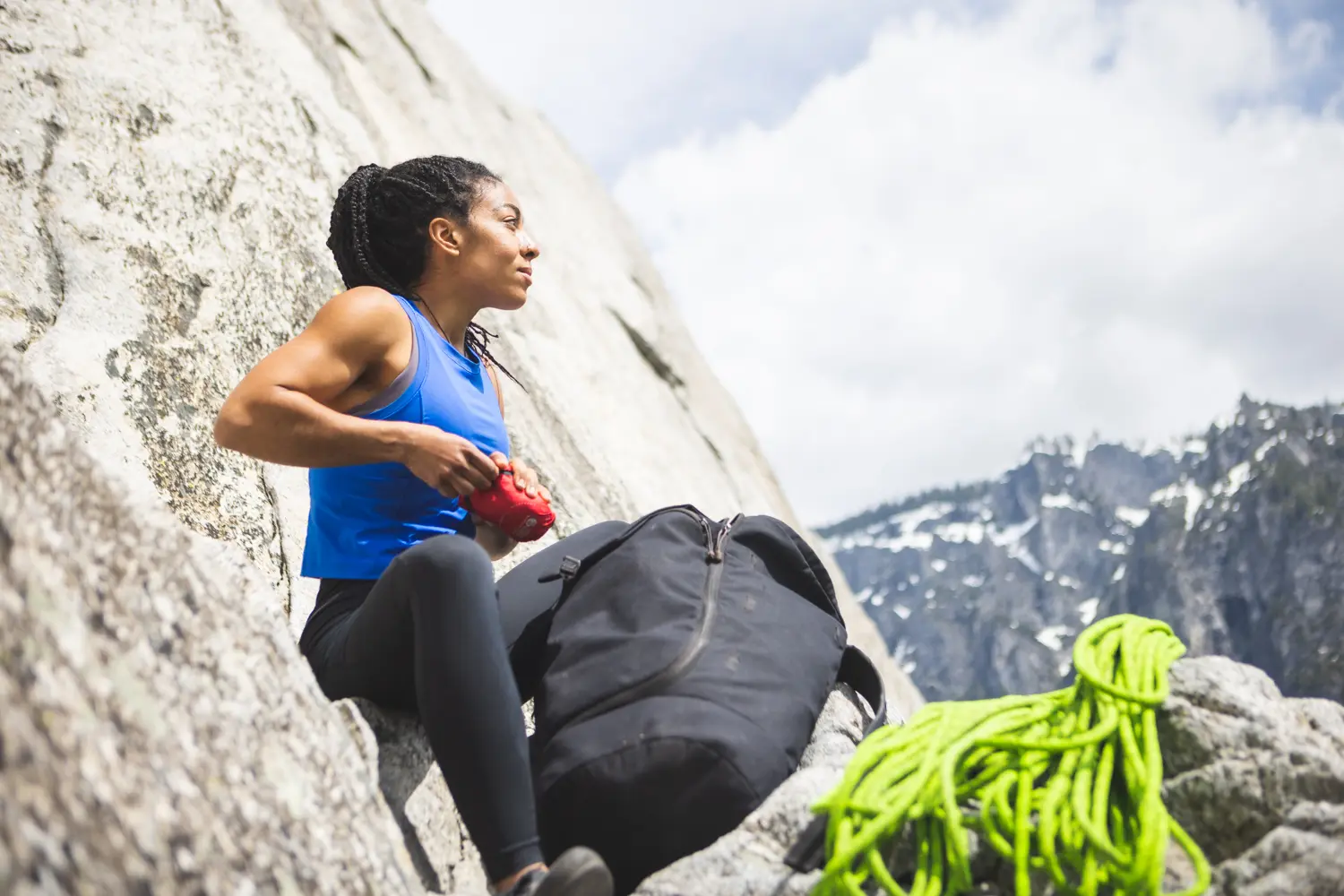





















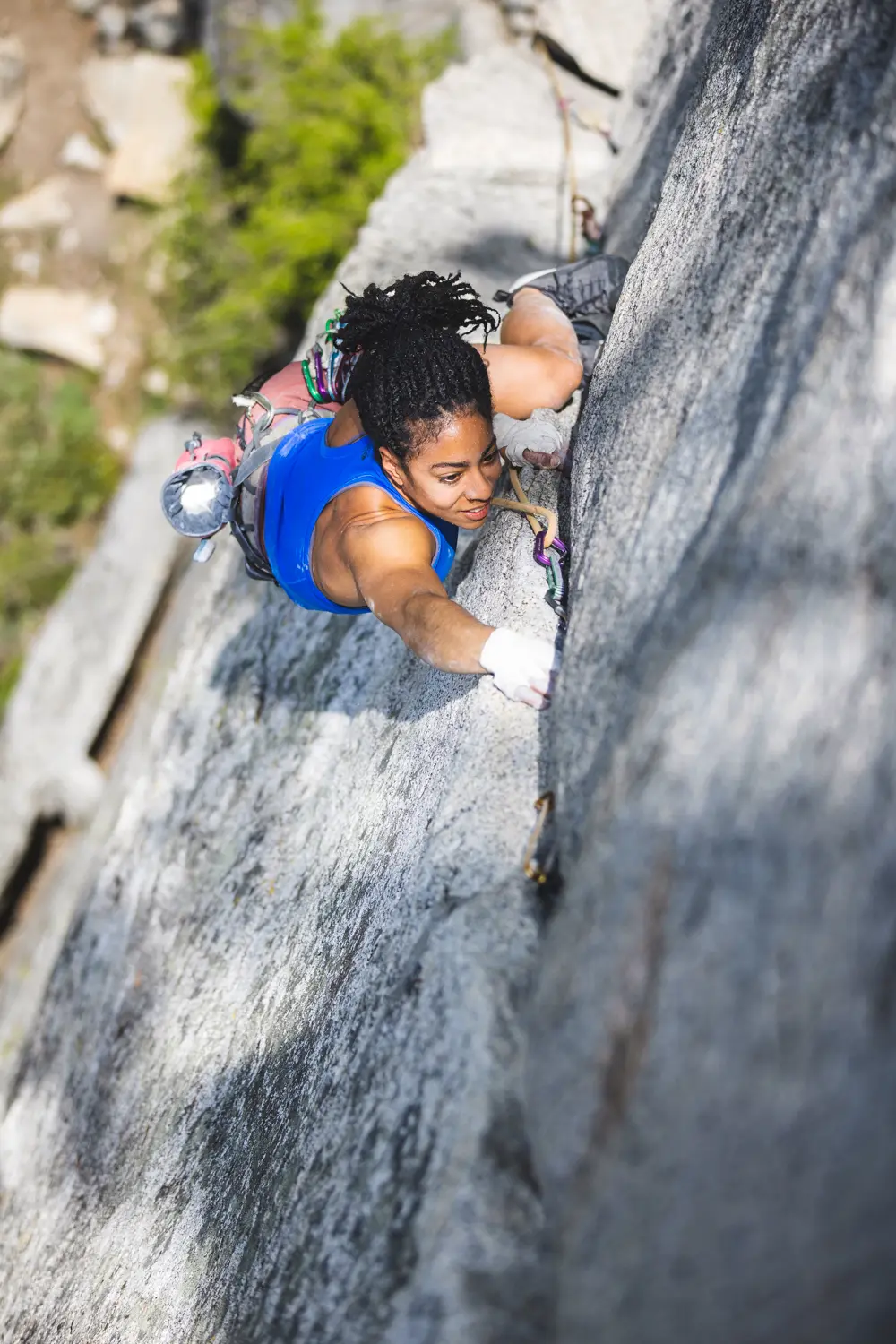





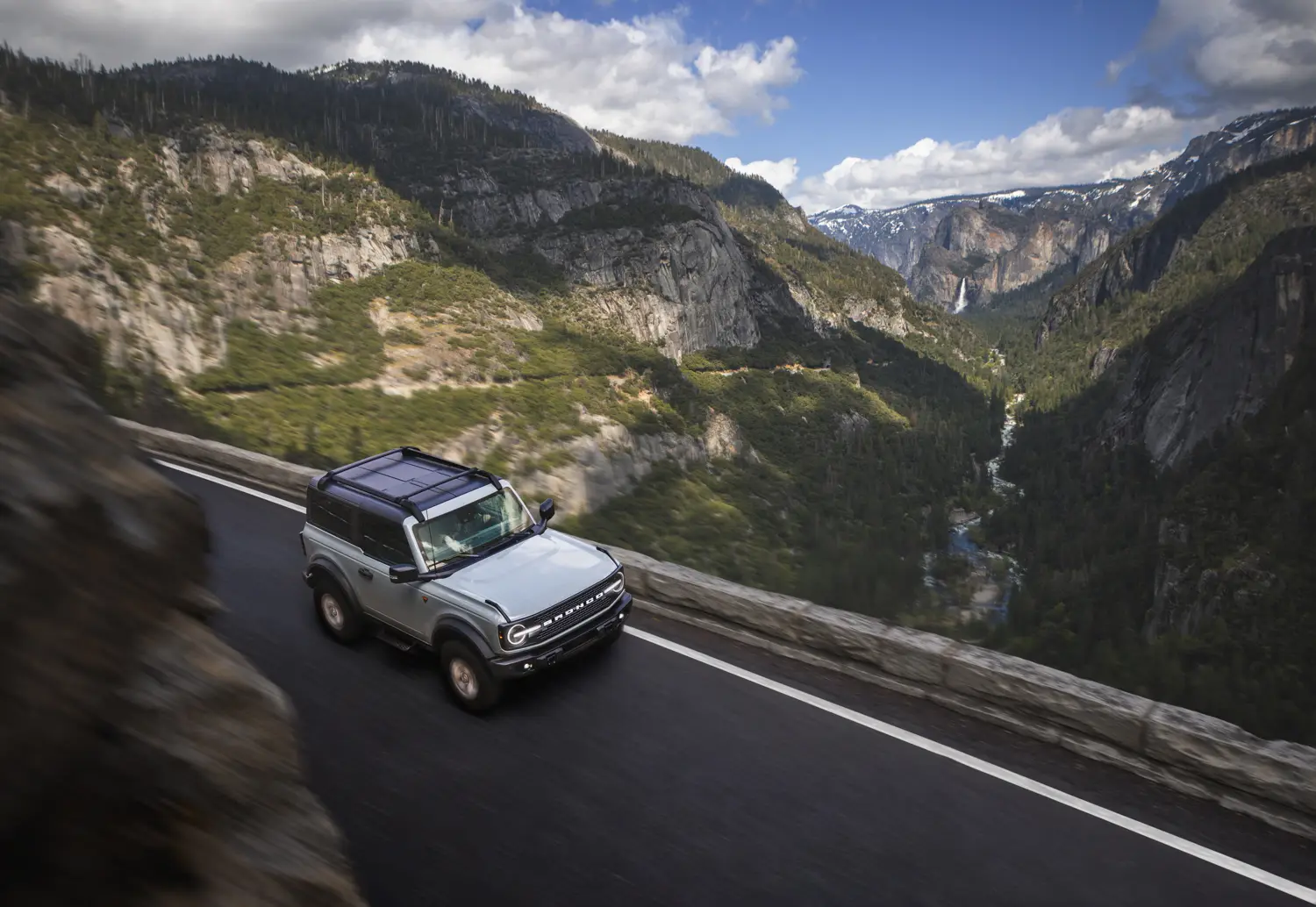
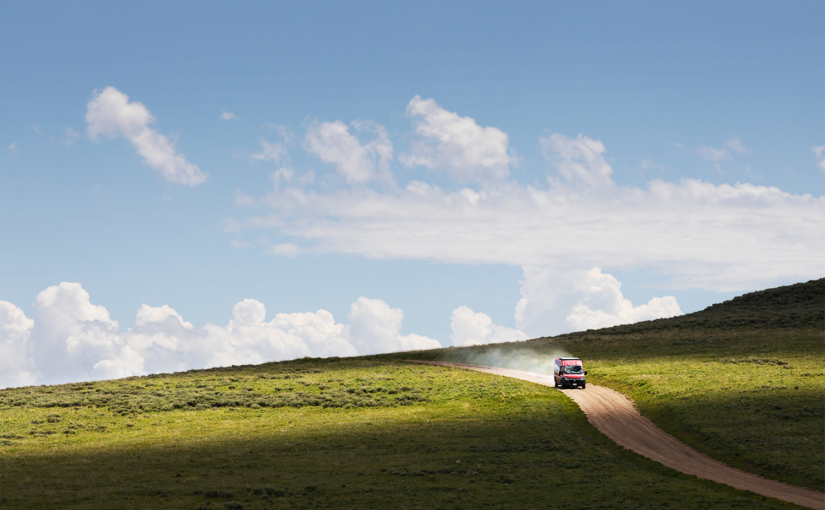







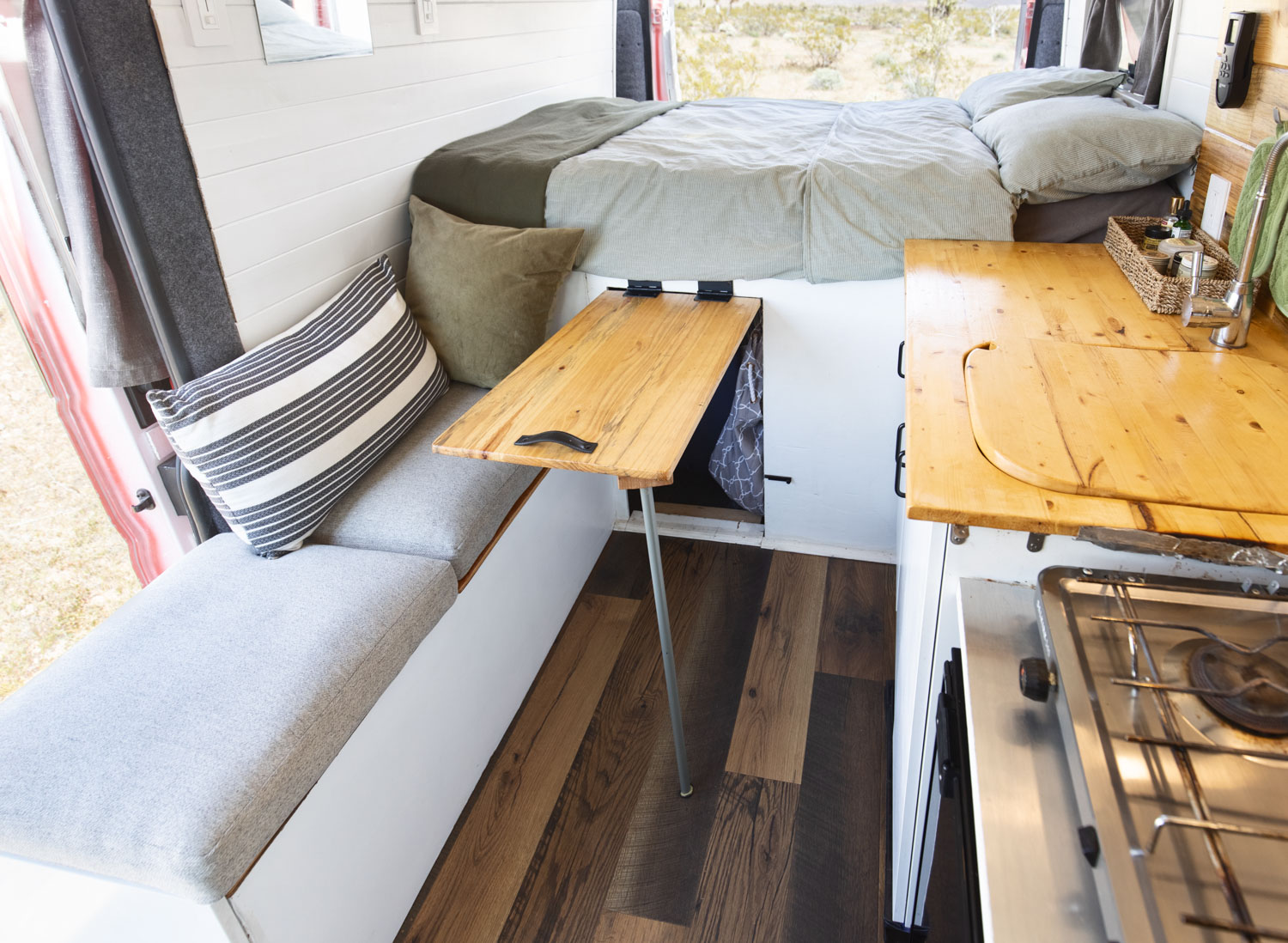






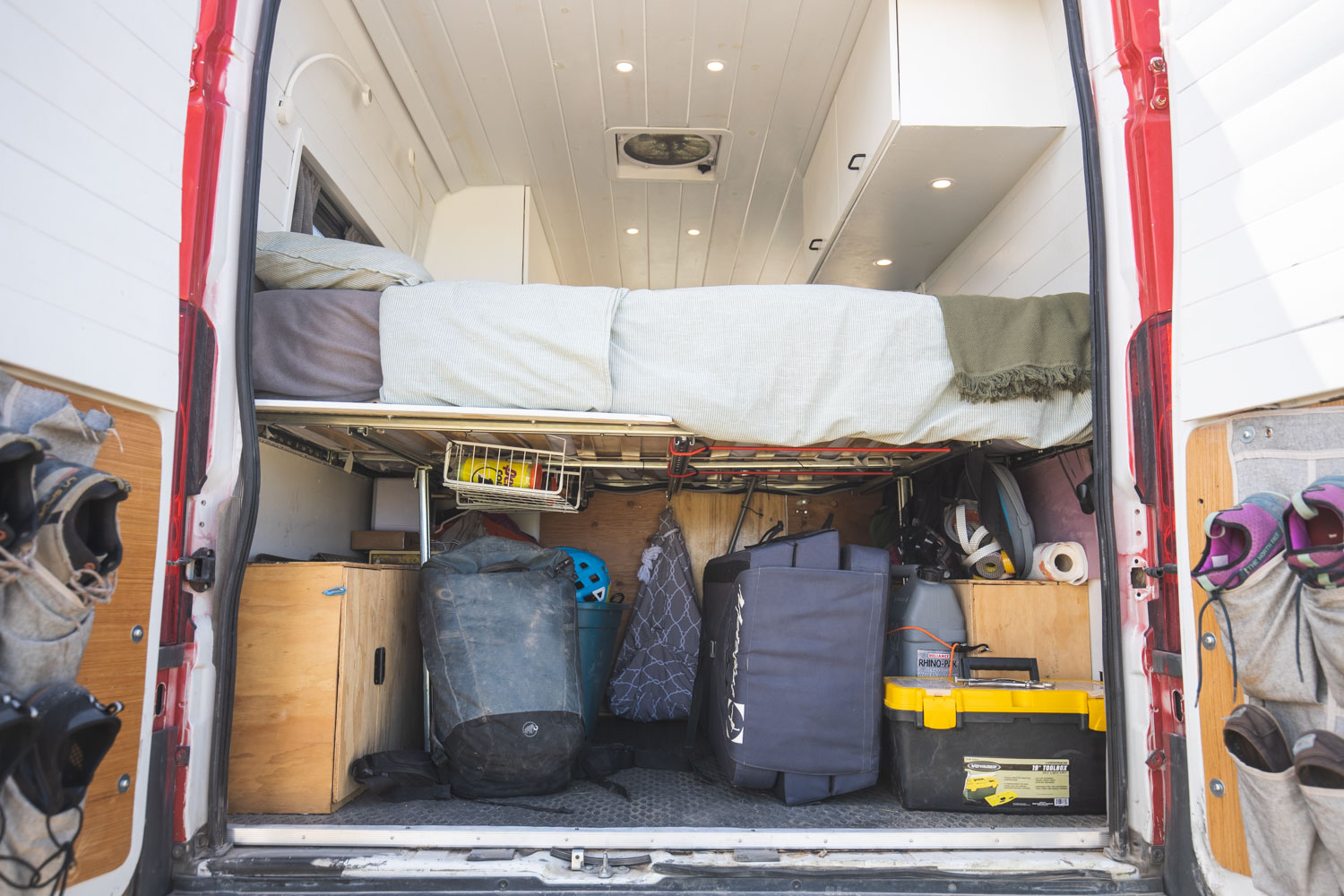
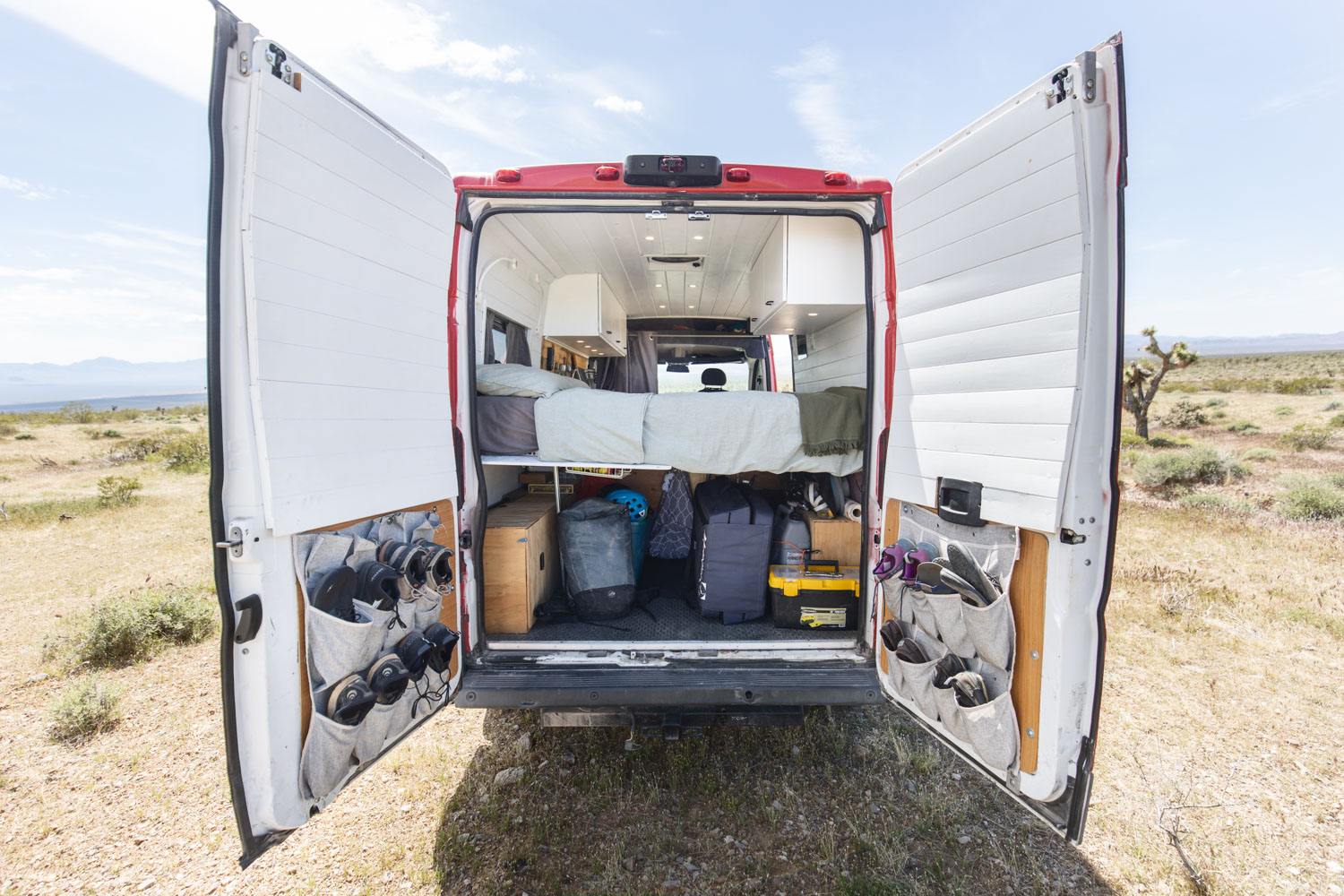




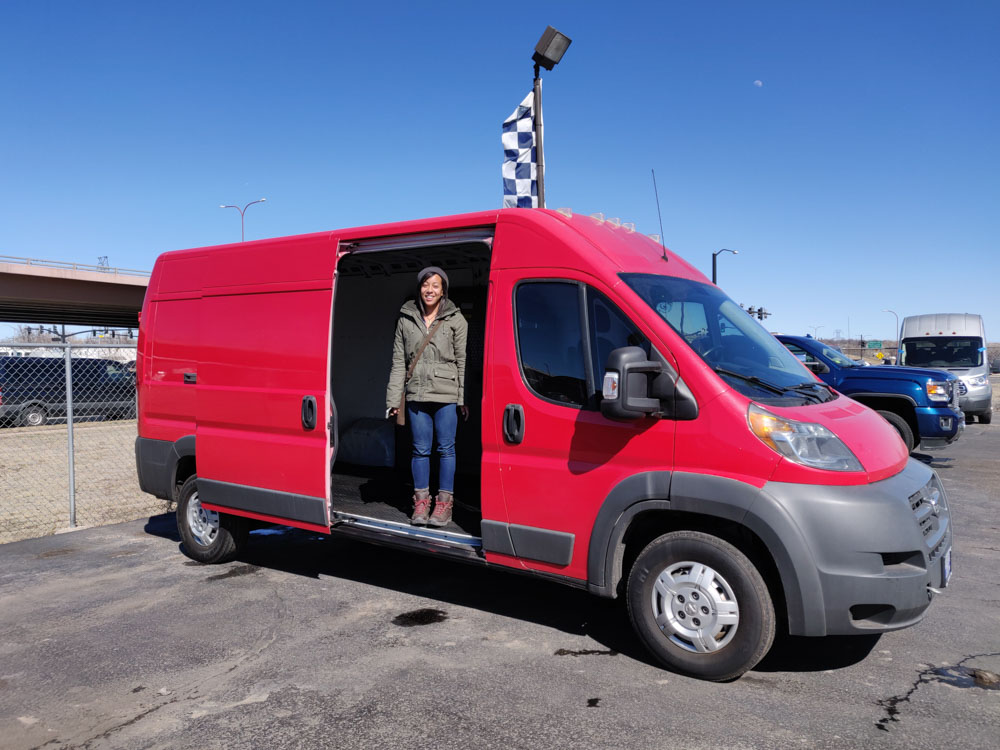






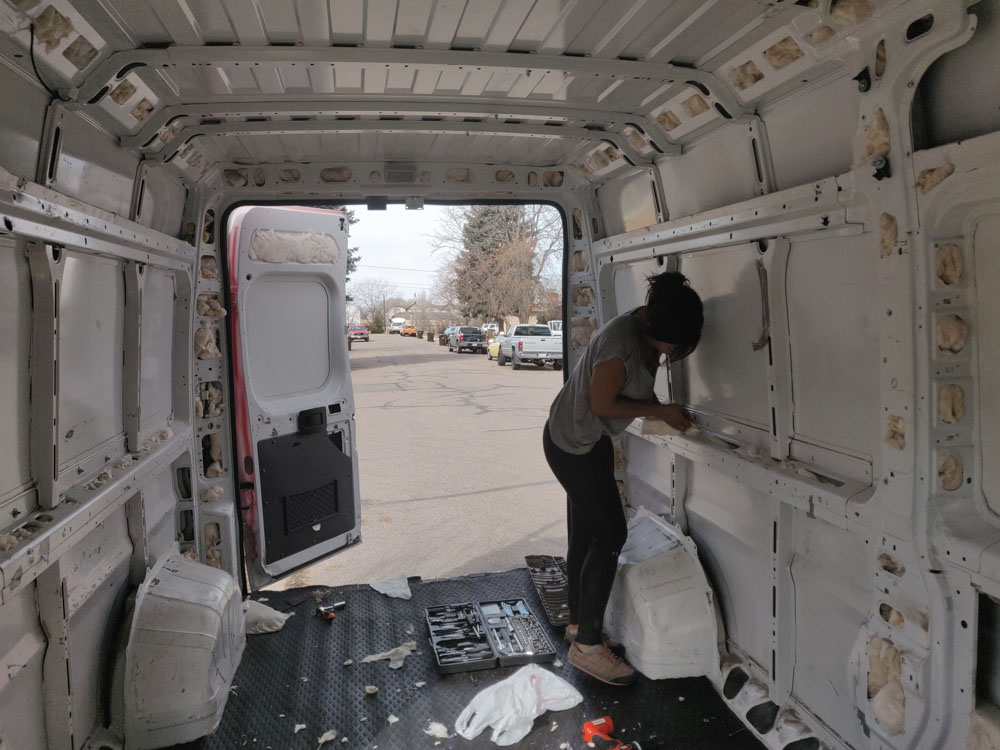



































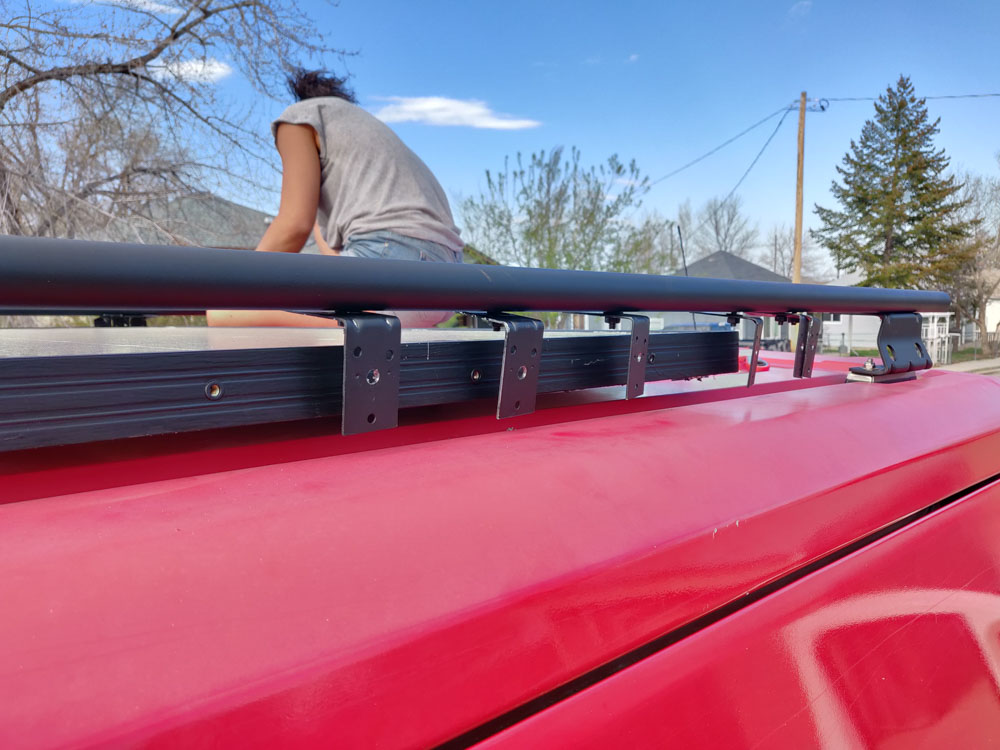




















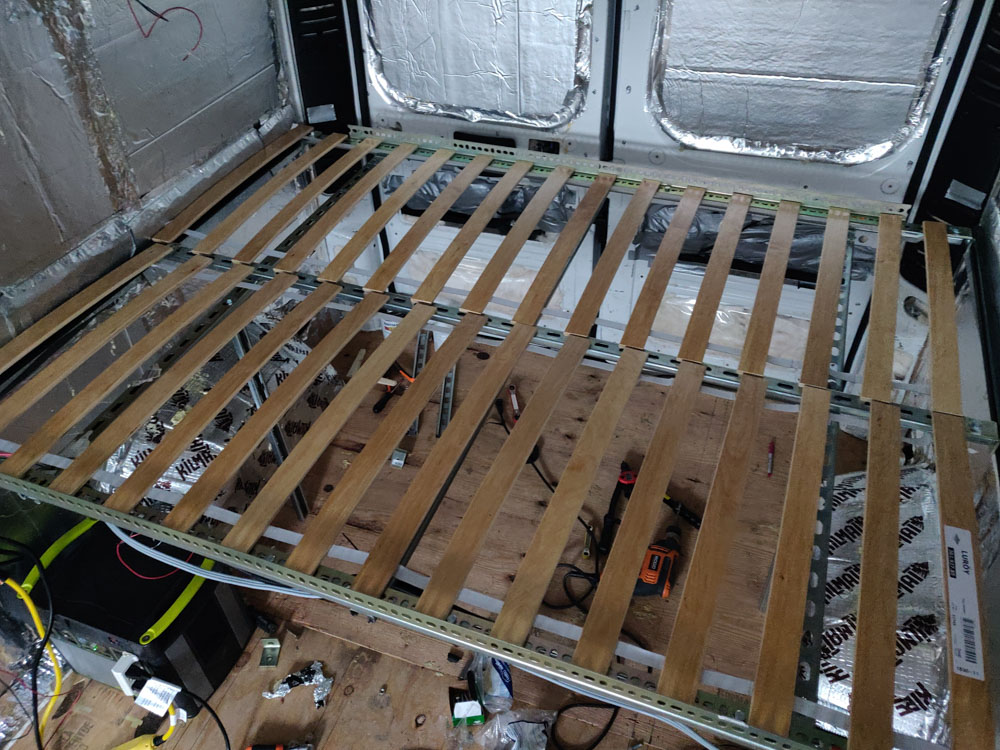


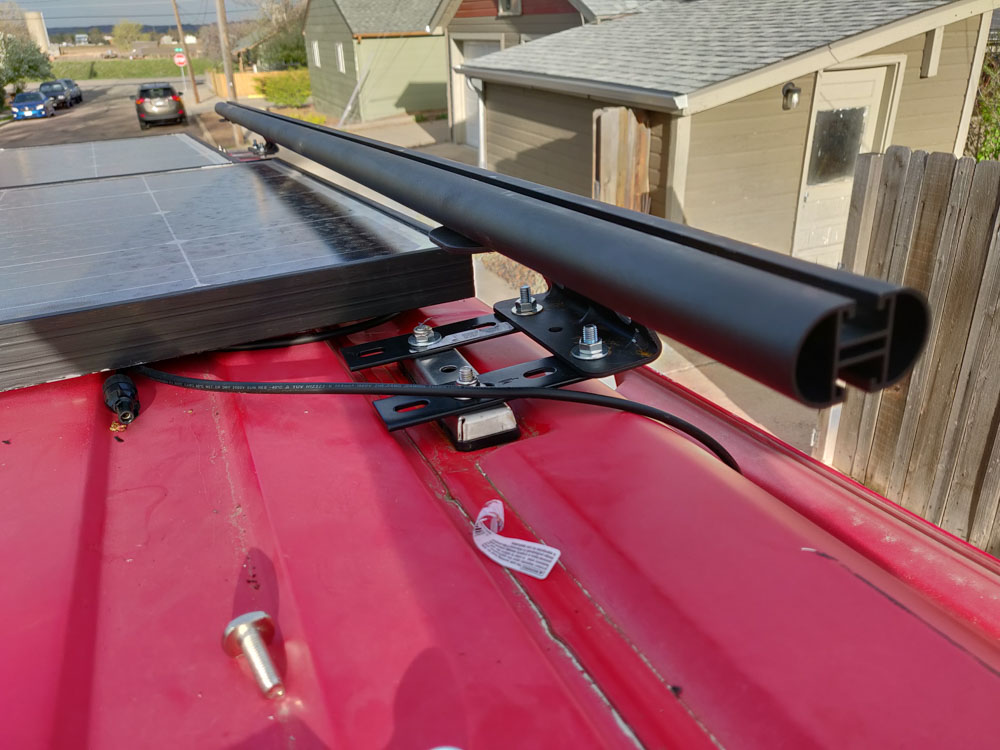







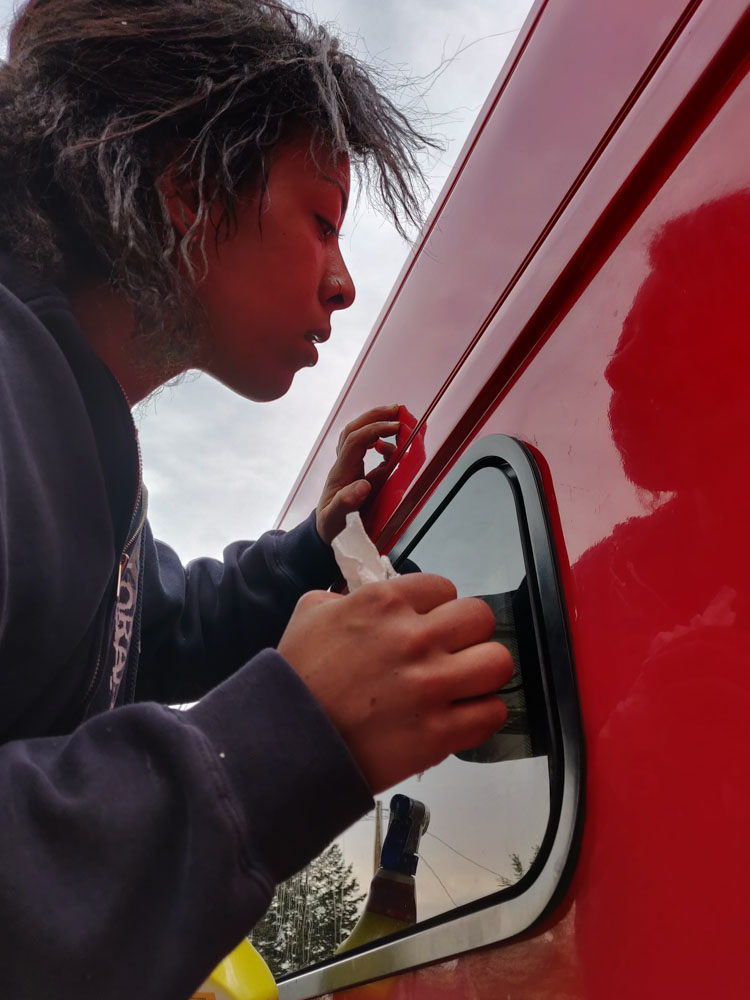




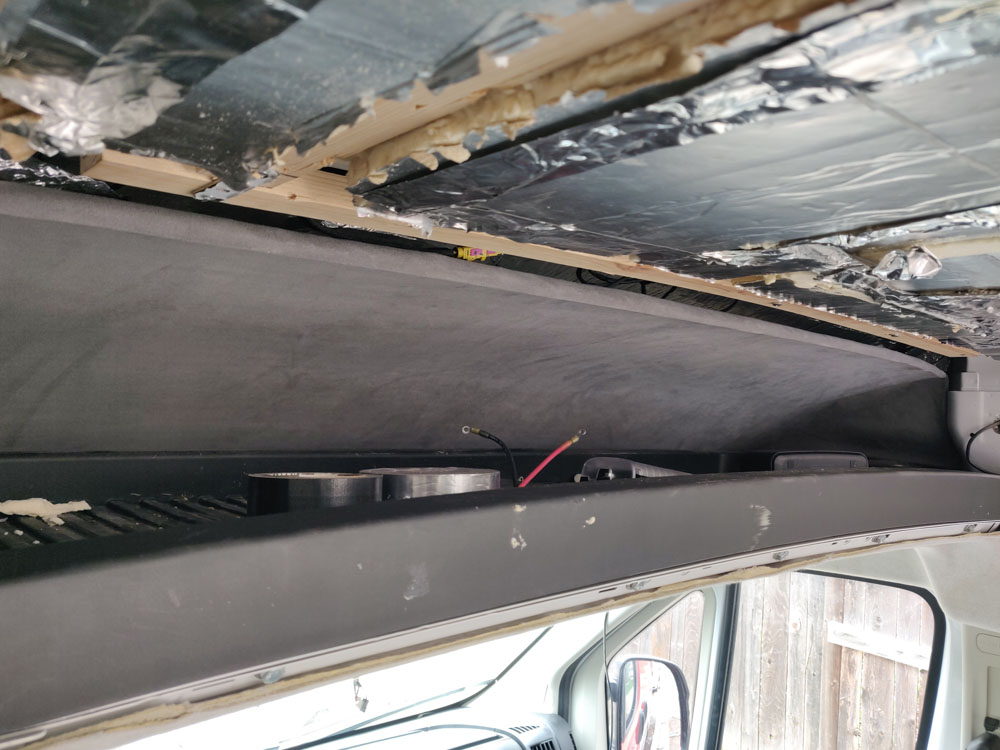
![÷¯ÅKÜ¿½«å9ØÓÚ Vu!«M·)ÿ4ãÁ4ÔÀ”¥’uc&.2©!^í±8Êy=)ÐFÄ¥ª½ú×ð9hªÆªã~`O¤üKô6WÁ!Èÿ¦dHxô
”{3´väÐüLÔ
)µv%GüDcþqIr´úCXË· JüeÁ,´{¯ÚÉ/dF^if«nlõHVê?sÌT¯ºH>!÷å±Î585Ëýb;½.i’ÑÇîä¯ÂÝx?naÇŲ́LLQæãÎ5¸} äÿ2iZßãÖíäQlÈ~¸HÈ|ªP¢ÈJØOåÑ|ß{g¦±úת-|%·$¥iû%fAv±*6·cpfâ52R_õöBÅ¿$híÈîÀÖÿÿÔ êoEO±Õ[Pª5{âÉ%2üG§`ìO|º·ké Öt2µ»cWÝÊ’©u’ÿÏD|ËÖí$¡¢º×#oÒIêí(^-Cب;õ2Ùá>JmsosTZÑJïô0Þ-LHR¹Ybn/B@í±§Ë(‘
}¿³¨4¢ÝOlP¾ËO½½j¢ð}©ÛìFSemONÑÈHfSÊfÝÃ
©Çöü6WRg´Ri5ËÉa0ªÈIJ¤Ôå±Æì%2Ut©Jú·ÐÃJñ¹ùÃ#<Àl7,£ù¢à¸Á¶Ó"nd|A6jt«¹÷ÈpJ[ÉcÉ0²òâ/¨KêöbSðbzåÀɨy§Ñ!$J©
ƹ%õÅîldKt#ÓfìV½~øJº¢Ñ:Eݽ©w<Û¦®¡ÕÕÿhRµøqµ¦-çfÛOòìWpÇb!I°a!øX½c§/ö9n!eö[ò«Ìí'1Úêð²¨ê¨*Wým²VU£è~sºjúU§YfÕ¸nUÑ£!,7bÃÅ /Þä/6ê×ì:Ñf¼4B%(¢HëUܵj½ÿÉÌn+.çUÙüq!¿ÿc/øóѱt¯ÿÕeÞym({y rÜW=e1ÉÈ·è Ô7Ù
A®ÝòvÅ
±B"jV)FDX°A¹(MmʱjNç个9aµ}[GÒÃ`¹x·M¾,®Lâ:¬Ôÿ0<kIn`J*ÖÓ·!4ÛUü¸TxDÖ*§ÃzLGO
²¬Ñ!1{³K+½øÊ,çáfÞXQÃV(I§Ý¦&'¹¿¥}¯éú<ð[Ý[^VúÄIqo²¹NN¿ð<xåÆe»QÁi©[´ë¯b?µ¥:Õve§pF^%а_:lG×îÉLk]Òâ¿DIÞEô(QÒ¸PÆî¼½,L$·»n²°aòe#
¤X亳¿!$7w_y9Oñð4Ái;¥÷W÷Ö@
NÒXÐnÓ¢Ôoã¿êÀ$$Zm§êz4l²[ñ»hèÓ
ô0ÊæI4ððóK5?2ÜU`è#S@@ñ§êÉÃe®Y S·²U[²-íI©¶-þª÷ùà@6æYC)µ¦¥lµÒm½W¨%ì}Ù»d%.{32y&Ú]ÄêN£’.D)O:õË095Í7¶Ú¬P¬{b @k¹ëLbçÖ-`]Ô&´½hM&ÖxÖCZ}#6Ä/¶|««Á¬ùzÇPKU¿
ÁÌ9-/8óº.°ÖÃÚʲÄG ÿðÿ±ÊNÅì´|’ø©êº}ì7Ö6÷ÅqÈ&ËK63f’KÿÖå{ëÍJÎâGÔÂN๩4&µû9¯ÕÄDs4ÄmOOó;ÛÌÐú×YªµqêD3Û7d0A²ÂyjDR0êÕilæ¶v©-
O¸ÉðLr,8ây
ð&î
/õY¢*kþ²ó,¢=ª:ÏOsÍí¦â@)Ec¿RC;bsW0BF;äQ+nñ”)V’PAZÓ~¦ñ|#,K·7mÎ-¥ìS%£*WPÂHýEØø¶,UîÍÌvwðÜ£ý
åéKÄä¯#ÿËâA mǯ ev¶(
2AµÓ5³sVs=ÊPG$q·1¿ó)÷ácOJÓõM{Q±°ÓFú±B/¯XèÄ*òC!Oï7â¿ëeô¨Çk,Oò?ÔIÙ©räøûxåcûÝÆ}éeæuçö¿
ðKèÓ(ê[¹íÉNËbÇ¡û±ây
yºöÉ:¥¤
µ,+@=ðÀ©I”1Ür<ÂÂ#2Áù-Zdç*äÆÐ×z(*]· AÊãRܲ3`¡
Å¥ëR;Kk¤ w¨äOøSË$}P *Þó$wðÇi#-ä4Ò¿eTB|@ì*úF¦5ãÖß9"ÞXIô¤#~&´(ÄtZªØc92$ò7M³21Kh#ûG¦ÿ¬±¥Z
nÂxR[fõãDÈ£j6à`JÙ.§¸sÅÙ#§ØZW§sT¢TPw$õ?×S¸ÕìlÁ7'ì
Í~]¾ Z¤zçèÄ?ezÓçý2Á$¥Öum:q,$:ïbn§ßCà´ Rh®è׶6¶y¡ÈÕ6êÛTÿº¥ÜSäyeyTijÌ}4O§}`-HRôUþ6ÌY;þÄÏÃ>ÇãéB~QëYÑgÓ]«&! _÷Ôeû1;3íý7Q1þP²ÿ×9Ó
YÙËê©,ÇâJü”
óQ9
äå`7K Ó¡F2}]Do+(¡$ï¿ßÄ%dèjÑÉä|@vù
TcÝåáê¨á±åðï½zü°¡mf©’mºï
Ük41¬6Ò¾ÑBi^ßdýùy²!eÆ¥qè»ò´· ÜñHâ+uÿ[0ó6¹Nå±²»;xä>ÌnOÃ1G7 ò@ÉåÛxÁ}:I4ñÜC’úc*éøfn1 7ÝÆ;$ɬzÅäºÅåÌmY,äviVE’ð¥cÿW˧ÒEègPÒôéM3ÑHMV+iEe¾£¿ôòq£)3/êO¨ÆZÒÚ¡ëÏBXñ¯ÀÍ¿_³µ”uY}â@ë_àr)yvµwê1v
4b?2&”Î2HînÞ%
)+AOò}²¡=Ϥ6ñrܵ¤ùVUµÒ+¤@(N´§Ó8¼,%Zî7¤
õ’·fªOZ8PÔ¯ì×qrÈD2?-yrÇ]¶É?9H±GÓ¨ek]B’ͪY ImÅݬ2YË-Ź1ËjªQÀ$m¶z|?ðÙfÁÎ>gô4Ȭ^#»Ã%µ’
ÉYT©Xùµör²@æÛU+9úõút¨&`ÀVpÂBCdN$)½¼VæÐì®Ô¨¦IwÍ¥’ÖqP£í5=±mjþ}’Àþ{±ú{e±ÆÄÍßyÎñjÞµ9h4¢_1ÞÜF ®LD02]mmªÞ¸Ê©ì:䩳¯-è×:5»_cÍZ ?îÕâOã&QæÁ|ÛlÞb¼D^
ÏêúúÃÔ¨ÿã°Æcw¢~Iù´¯3éÈJ$äØÜ·ÚÝ+ôÓ’!a”ú]¶úÖp90NiîWâüiEÎÑäàËò”^®çóeÊ_£D< #ªÞ·µ±xºN/âÇêÿ{'ÿÐßÛÜ^+ÙÛA<ªK"KJ§Þ5ñÇr®AÊêÕa¦Î«¨iÑÅûr ßè[,8k¤Ò2÷ëß/ùjgõC»äe¯Ì5TýØuS(w$³yCGFî ¤¯"
²ÐtBïAÐ1¨)Gä]/ý{[½JæNLe=BB²
ÌGRú£Éq²Zh³F½ÿm3ðå~ÎG&pÜÙãÃfÏ&qgmokl@A ÄæÔÑPñ4EØjf^,5¹qreè
ÚB$±Õn>gß2u¦’|r%º ü:M¤ª¢
ÇöÒ¨ßzÐåF!²RnM2í[kÙ#QöczH¢:paÿá=oÍVì°íR!ñ9{lÀPVÀx)NϦAÂÍûJ$bAc^ ×-5RóOòå½Åý¼;°0ZÅ}c°ÛöQ©¾§6NÙX»£Y&ª/®Ð àC#HGab¼?äñÃ[l³ìOEPkýJ4+s¬0è²r%>¯÷ÏÿÑ;°ÕFHà¸8¿t «UiÈÓÇ0ñìI$7ååA¾d(&7´ª×õºJhÙNç[ [{ð©¡éJd¸Xµc{~$ÓC”XZÃmTQÊ·É$Âa!ȲÏKÐîu P$ñ~É’Ù]÷§H+΢վ¢cHU¯’±/19¬
¶:öË/ÞU
׸dûC9&7{±Ë6Ý[éæÍàb«
”§åQKnLf&¥º¼¹a-2Ziwmª>ÛéÉÔvY¬]A#£°vñN&Ãl±Gëxj}áj:í¼V¡$amX±ø1$^ç|®pâÎ2á6óýg]×.¥ËNV6çfTòúË0éãz3g3Jáò®£?ï®GïV(þiá)Õ®K*%»=)¯êÀrÕÆK*Òÿ-µwoQí½1M-Ë®S-TVÁL×òþõ$Q׬PÊβ=1§)§òÍ?@r³¬=1§ìÓÈhhµqüÄéLÕMW ycNÒ$õã,×,¼É$S© ú2¹å¹¤@O,¸ü»Ñu¯6ë6wï,Mѹc`Ã)¯§³/Í4åeçO(h~P¹Ñá0Ù»ÐBOïD!ÓíoÓ]xªCfOÿ8õ¬¯+M`íW³&¿Ç-Ê¢üÊòKɯ}bÊ$O®37Jº®?â-þË1¥µìnÐ
HïÓÿÿÿÿÒæ~eó^ üËòEÈÉØ÷®W
Y&í<û«F[ÙGzz¸î`
,ù÷̱úsyA!!KÇ ïRÊ߯Se5Ñ¿1µ{ËÁ§.'r@R]ùq#!0», ,òzéYÀòÍ"zî9]O°P~#ü
ÌLȹqê¾Y_ªAxñÂFb,¯¿ìA©þÇ2±aw§&A-eæ
:òÚ¶Z´µ!Ògô[nW
ïË8È;t*ÓÞ]fô¡7u·dîÇ* R;Û»X¥â$ÿvêÊ~[°ÈEë^M¸vT)hX2©¹Ç¤²Í_Í.;ë2ýÒï¿°ÀbñÌÌmQQ,ì2Ë·¦ÔaJR£sòÇÃe<dl>aÔeiâç_VS]¨6ïì2áÕ§ôe]ü³óᔶ»ªI¥À@snÒq¡ïé©úù 9B$ózG¼äý*QÃ&¡p}wÁ5¥GS,ý°còeSA<QÖÎlãEz¨ ¥:oÖh6xt,¬ý¨c¹v&NÈ
oÊeÑµÓ ¶(v¥©ür³ea~Ñä~ìi½q¯§ðÒ¬NÛSß
"Ó(t× ²
lõÉRUPmÄ ;tÆÛÉÿ1¯æòþ¿¨ê¶È÷:súRoA"!+ôÕ3+û5åäðmõQ.5·ÅÛ
r5c·LÍr-ë_óסæI ýÕìjÀ{Óúå¡Íí^}ñô¸¦´@e·2@ e+MúÕæ9w=8KüyÿÓá£V¹¡äìk±©pÐ[këÊ~Ò)ù¨?¯
m0¶óf§o!JB¤öÿ QxSÄèÞ{ÚîKÛÈDrQLñª©â)â~g(ÉËm`ÿÿK[µWÁÇï$àïìH
ðû~Ö8°pîy£&^-6_+ÁÌÏiq;8â¤Î£Ó÷Z!åòeË͵×nÌc²ø-cb`SA'òøI÷¦TåAßaÓþ Ï°ðz¼m£é¢Î/N(RiÍ)?¶ÏJ?d}Æ øbC¦XDò’«9PI
Iµ:e!-&*ªÑ@;2B¼-_¿4¤Z.9ímí-£-ôÈÚÔò#®õ®E¦[ÂÛýª>/L
8Ò¢U©î7è}òT^=CÔô×õaC|+±$ü
?®ky§Óષ^ù×g£%ü³ÕOór Äß*ÔeüÃQæúóYëZ-Èr-1âTs_Äf)rôáËæÿÿÔçcò~£Éù®Rñ¤4ogrNÜiJÙÒjMh })?¢ðÊ ã¸ê=ò> O_ɽTn·6n+Jz!ÿL> GB]~Ny°Ç¨M
ÌuÿãÄá)mÇåo¢4ý;xzf9kÿÇG
Y?<Ãn {;©0ÉAô°´Ée !¾;5Tþ#(H.È£Æ]{ôlUëv5Ý7L¶Im#ÃÆEYÀ£!V£|ËMÛ9üü¼Ö-ãó4PÙÎÄÚÞ]wD%yÇn
Ä©ð´Ï7übÉ Ð÷½«Gü·ò¾,WÀÚìÝ_1Ú(è!ÆÓ6Ê)M*ó¯ÍËpçL5+ëú°òÌ
H½|¾]E³6k§^z@Û4Ò¼9±1¥GC±«Ç(
Þ+`°1D!x¶æ!KÓùýòg%°bR×HÑídkm£2nóÎBA'v5=òd³¥º.»®·Mm/Õg{gçMÙ;íØà"I³C9^ª§µr!idBÖYìuíL%[ÇM
p¡ Ç
OAL*)Oᣢ¥HmQq,`nÿvZD+ §ZlH;~XÓ»òñt¯¶*ùâËÖ¸¼Q°äâG-¿Ø±SiÍI¯.áòl×ÌZ¥h#¹½¹æ¿fxq:ÀnHÜ$ ôËâÕ'ÛY»¾^Óî+Q$ _ q?«(ÝÿÕ2Ù®ü²*<§ÂÂ("Xá(¢þ:räA ÖØ°o`ßp3èÚ|¨x¼wªxsU¯ü¹27Øéï'OÇÒÂ~ÜèFþs['8#LÖnfOeþ=2#O,
éÁðð;åCU©ZÐEÃTZÒtõ·YÒ[VVy0³·F$n~`%JsmdA©¥{Tý渰%Y±ÃKjé¯ALU^7ZôÛÃWk£ÐHÕ§ÄÜGê87]ͨ¶ò×À'&üM?V+a0?|4FA=p¢U"pM=¿ÂØà¤h$!7 ¾ü*¥µôWPÇ2$UAuñ Æõ8MÆ2HY£äPïF_ö#%Ôó§æ%»y¢æHlþ[Ø"¸x,UNë×ØÉÅÏ x¯åXÖÑé(8ø»a0úçòvÿë~D±©«CXÏÐþ9tEÿÖù#ÌߣüÁ`uHþ¿a{0úürWÔ(X*º¸âC¨ÂbÆßRë¿vUÞ§{jðÙÚBóÍ"K-B"ò$F§m²4øæçÌ÷2kWsEy"éñÌÒ[G K,|øƲpØ7¹ùK¦é:}Χy¯[HÌ·Oª;ìÕö}¬ ñ?¬$¾t³I¬Á”9Dlã³p$ñÿTáàeik:n5¦Gw¤q
ËJÆ>ä7¤Ú;È^}zòÖæîÒ;MBô[·2q
bê(kÛýHØ@Ðw-o£ZÙðw/VTnVQÊ9a4VTÇ
TW©ÂÀ2 bhh;÷Û¶4Y$0ð! ö©Å%ó¿æ¤h5;äñÄk[£ÌmÉGõû’6″V-ƪ4òÕú¬z¤b%³IMê]ÚæéoùÇkÿ[ËwVÄÔà |ëýåD_ÿ×gå·å.ªë:]Þ¥®Ù$KWcO@n
#é¸4àÌÁàÉÀÓz¥äqÇÇÒ+×åíNTI!kkC%»ÍÈ#Ãnj¤·%èéþNWÄb’lMÓ4Í:?NÊÚpÀhP¹Ø¨;åí¥úÆ·
ØÛO? ±’ ‘oÃlÂ@_7~kÑê¾EHµskw%ż
ÉX=HêÀ#¡âÿìpÚ”7æùÎÛLÔZqvåÞ¼AY”â~àS’mRiôo-mYÚädpÄ ¬Ã«uÊüXÊÀèÆ2è@Ö¦Sò¾½”:µÔO@IÿJ`£a·=þÖrX
Þkæcåï.Ëp´£ë
n4ã5|Gódg*.L!qø¢´ßÌKUòûjQè²Î/¤Óú`íÇÔÈxLxâ×|ñu,k eÁi×z3ÑkOò0x§!|ù©Ü6£ÌòÆ5+p¸© ̸@¨wÿ’/Ùæ¤5
ÇÀ)ÙÜÈòl[±gød)ªýYÝx»U{[®iUP”((;üöÇ¥”·´vSâ’îÆÐ{§FEl?
¢ ïÒ:4R£§¾*ÓE Ó++) NêãmÝ»Ã
)¿QÅvN«Xó9Ý6ÈGÍâv
-vF_Fõ$ xÜFWzvåØMÁ¢b¤ñ+¹&Y¡-0ôÕÁX^´ÌSñÿ8ßyÆ÷R³’f^j>DdòrkÿÐã÷.ëy-H.®AeéPi±É1zßåæ}ÞåÝBM¤Ô”´hElàºú¤PÏ_xòÌ|ئ¹Åé¶ßZÓµÍ6ÇRºôf¿dUD.#%SÕeØTm`Ç”lò
`=!õM(ÃýzÜ*Xú©ÑwñöÌ»eÄó1~{èIä
SÌZ2j)ptí>fPVPªMc}Oø6[8_/Üß_ßÜI{
GârÙòkÿÑäQNU.wöÉ1GØAÃÔrÄÒõá
BâÔ_T7Ïq*L+$l¶Ô_õiAoͪ
Rs¨yÏS&8ÖäC<aır v¨Z
¡ø~ðGc·½Æ¢mVÚØÕS·" 1üRß[«vPaTÇËúõp8Dþ»øp[þ2¬ÇÒSlÌ34¾pFKúöG%Dýç©O$×Rº}µÚ<QÇqq<qH
ÈÊKPûË2Þ«?YÒ4ø*Ϫ_1cÒ²±ýYFad;Ð÷¾g~JQþ²c·¨dp;ÈßÌ1r¤W§Ùëôy«Å<Ó34VàìZð0ú'e¥d1"´JI£R;ï¾adæÝKýñÊÛ¬B£UCmñJ";s°®DGoLU¸Â¨
_ÃDGnùU¥*GÅ°®ý±Ue|0±%UbN S`Jª¨ðÂÄáF,m²«NáE!ØW
CóíwZ?êDM;K/ë¦_§;ÒÌlù7^újHÜþyeß·¾t+@Åý$á_ÿÒå
õɱU3F¶7<Ø|d!¡¡ðÄ*HPÒ¤ÈÐtëCO§¯û·ëe7§q´e)q+ÇÄoÕ¾"ÝI5Âwk máä¹ËR ÔøùØi
zâ¯nüü[Ó&×uù¦Óì/#k]1bâ²Ëë æàâJ®ßú¹ O%Ï?'Ëä-^ÓVÓY,®¢iä£2Mb6V ýÚ_ù·%R%¸kþqìÞßùòÏPº/,<SQ²Ö§·ÁL9ÁëJFÞPÑgañË=ì«CC#ÿ
+Or }ß÷ÌëÊC´±Ó»þ×Åà|rj<Ñ:Ó2éW$âØ=©Õâú÷Â$FS+rÜ!4úå©&*=n'UÇ¢^!·E*(ÌläNÍ°tÅ®c<®ª¸ó$[+râz»ë2r;ª5ðÈæbAZÞîÖguYØÑ
AðȦÓKPQ«ô
ErÆj»þREoÞáUäÜQ&ÝÏá°¯_
øoÞþ¼§e_[QQÛܯêÁeh/[ËÅêWéþñá
éyvwâ¤ûýrEU4û#ñ®<HðÂá{0êûÆ<Hðzõ¾nèióÃÄÄâhßÆÑ=Hx×Â)O.m*_
B²
ÿÀÃ-Ã:YÃÒ_+yÆ¡yoJgGË#ðÌÑÍÇ%o Ü}wIvqO ÉAÿÓãFç{dØ¡õ/¬¶¢G$^©1©pEI;FÆ}U*¯l©¤edn,²ÊB
?J²U£t©R´4ðãBò¶úÍÌ°ÝÁÑÉ-©VYUíûtã$2¾ÙÒOÕ,,o¯£éÖðµ¤@ã°_a°È«üäò|~kü¼ÕtàîáÝXâxe§úã²Â
ü/îîÌÚ[¬I"¨Uc/Jüñ&ÊH_.¯µ.ZÙ¬ 6±O5Ñ¡F¶xWâY%iB÷Údf7¶øÈpWyf8×ôÍÎñuI.cô :mÕ @Ï"ÆQ}øy|%O³k<ÙV½]&à´ëüÃß#ÃH7ÄG§ÄòT{q˽îOæîùjè¯ÕµkV²O’è®DÀ¨ÈÅõyEcON,õcÂ6þª@¹ä¤þì¸ï44ªòÛÖYmê@u+C^â, 32|Ûù¤5½Ü÷Õ¯¯(Ye¸
ëþQSõ8½¿’)}bGXåÛäXÈhÿÔãÚÓßCV:g¢¯ñªÄ
åOwkÝKKøçARIHÔLÐÓ~,JÌV~¯m¨ÚXÄn´ôh}6mÇ” oÙ=2$*Yë>±«M”¶7Ò³2ªÑ±-°)
Q6Ö÷z4Ñ}qfA-¬±ÕÊô 502ùOmëz¬ÚµÖ¡=Å*É1ܸJòéör 3%ô×nfZû¨ÖƤ÷T@”pqCÉô-CËÞTÒ|Õ¢ÜßAغ¸ÖÔ·ïÕP|_u¦ $§ÿ6×VZ@³½ek··
ÖVTìxÂy¤e«kv/ç+C°*ê¡IC0BÝS?ÕÅyª#Ii$b&`GÁ¯BFFqæ{ÆímÄ
ÇÌßáb(!·}ñ°lëvfûÉR^¼”C/§ e4õg74*½°ºLÞÒÅ&vkaé[Õæg¯ S¹þb0ȱSå]rÂïÍ+
ï$Ââ_]hae@¨¡:tø³Qôa¼GJô³I,Ðß*ʨÌÅ
E?<³ÐßY_n²z ®9-AùeÔ¶´HÔ¿ÛÞ÷ñ:àJ¥¾¤Í4 qiË*q#;ÕiÒ¸ª-ôy``
G¤ª¡?
hI$ü²$b-"$i*-ȼTZ##Ô3|4ÛçÇHÕ2ÉÄ]¡§ò¬FÓ#~B=55û²öòÿ@/It¾Wãuïî¼[oùk¡Ìñn.í¹çIàbz¨?dãex½ÏåëòAæ é©ïz'%õîÌ~*ïö²~IðüØåßåö¹m%¨æÒñ-¡FVr sÿdr@ßF&w"¼ç=?T{¹txîmYiõ8.Þ+CÉXUÃa2îTѵ/;h"æMKMÖ¦pü¬}hPoE)øק&ÿ
ÂcÜ ÎÙ_54ØéW^aµÖåÂcê)ûÔàμ÷O](https://blog.dscottclarkphoto.com/wp-content/uploads/2019/08/0510-WillardTheRedWhale-0082.jpg)


